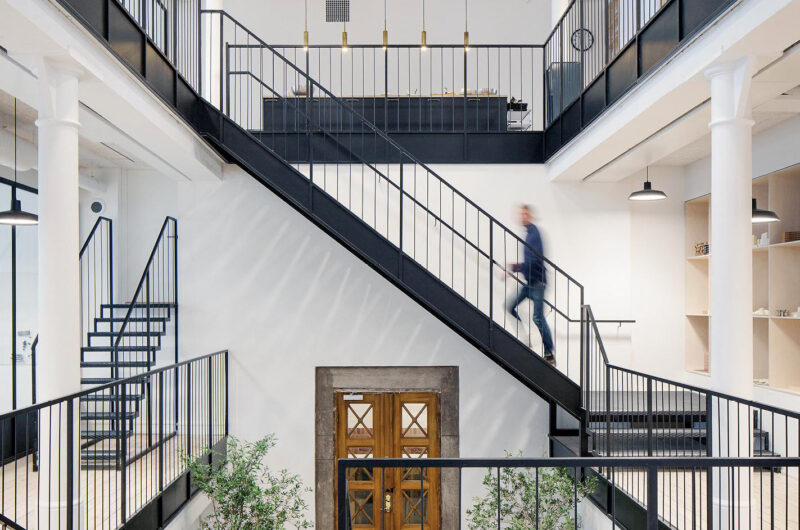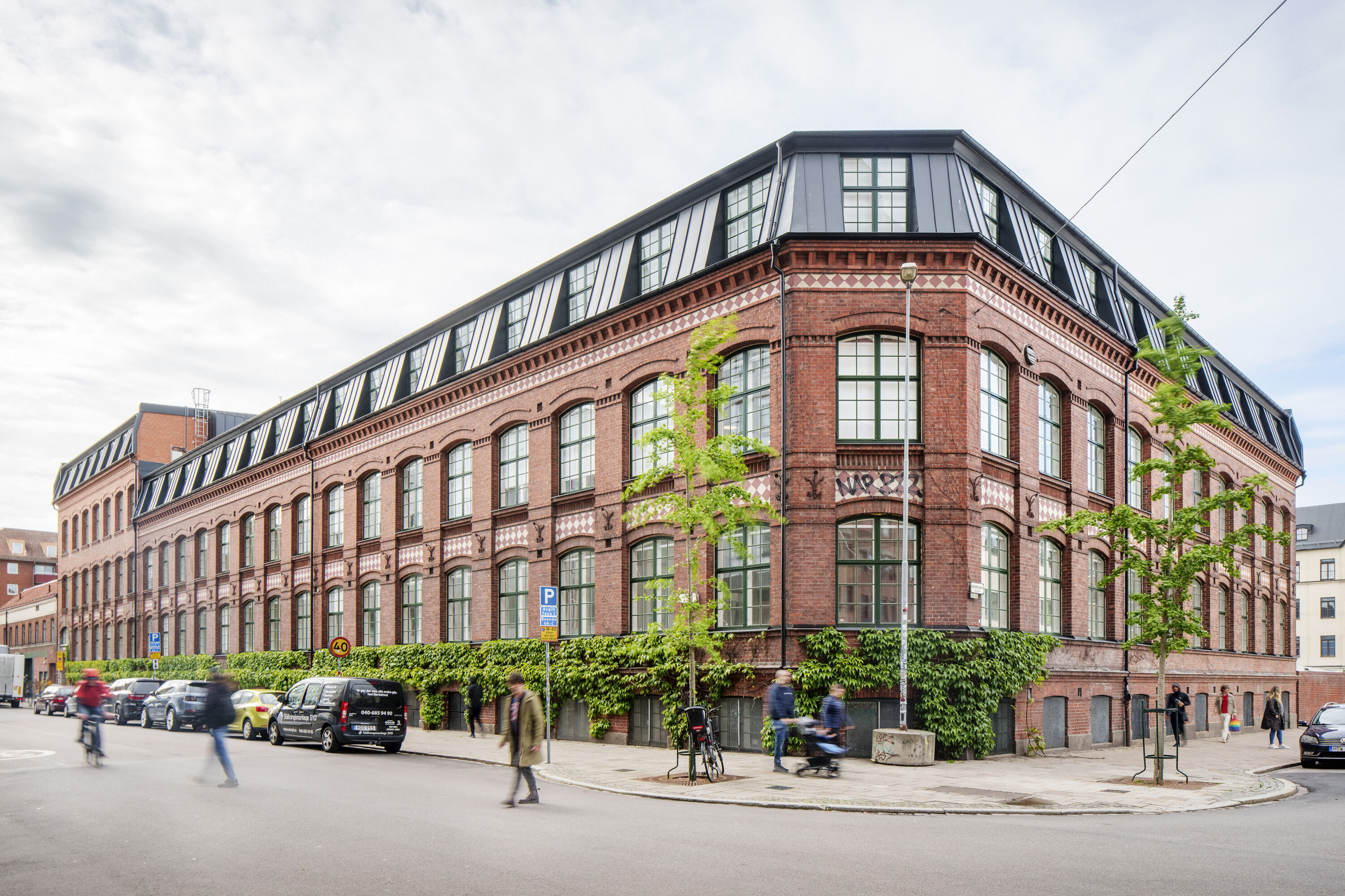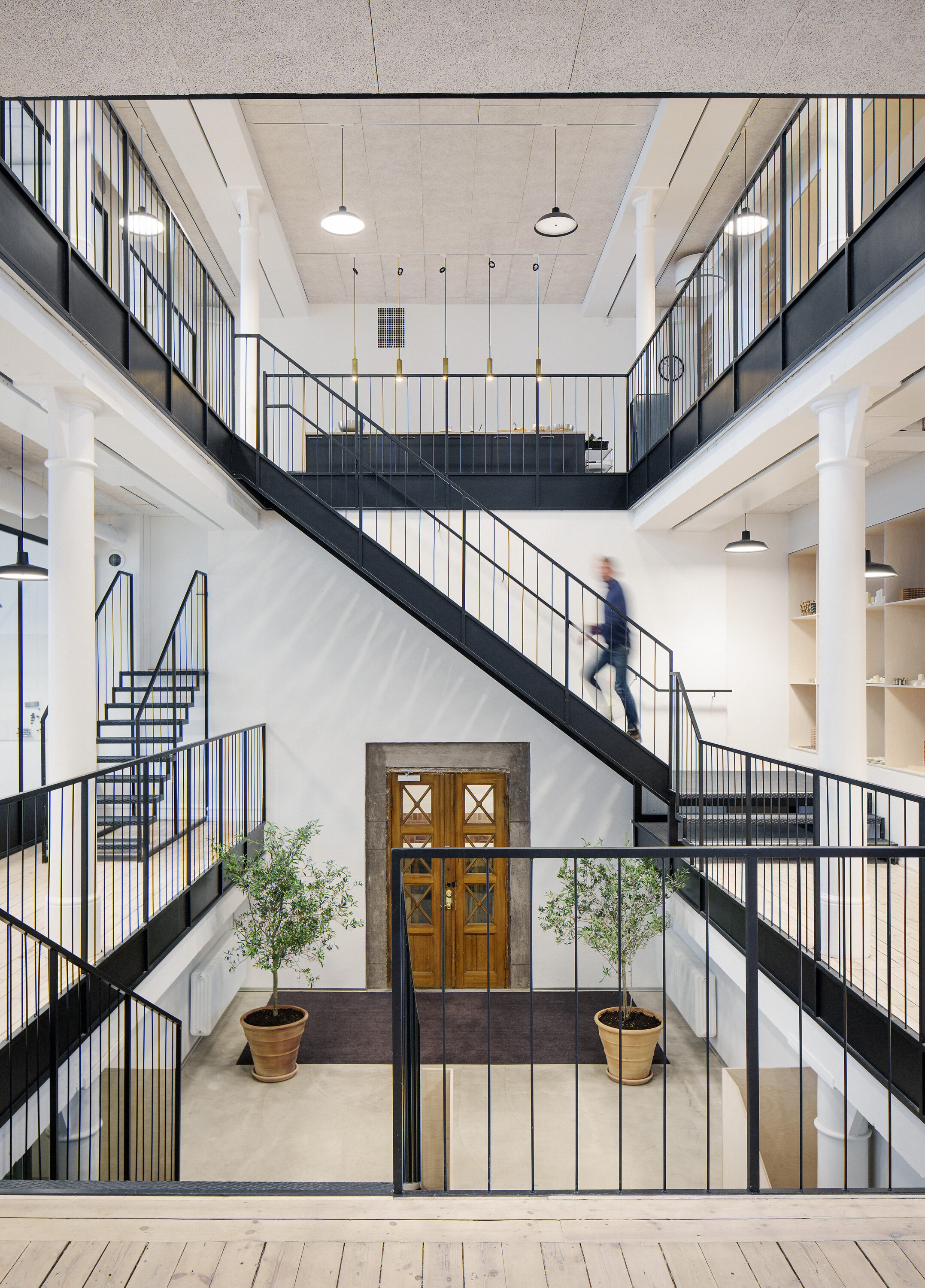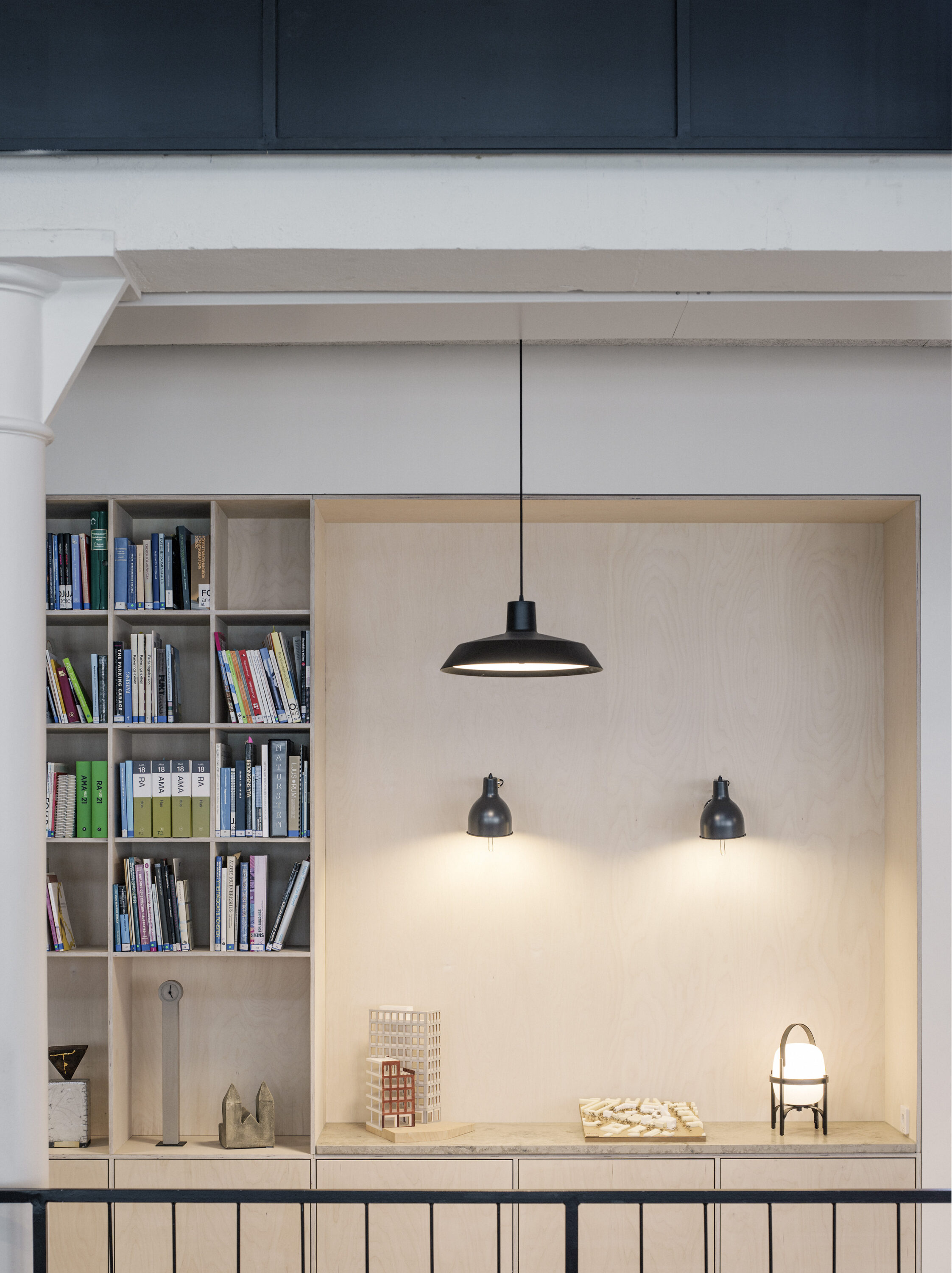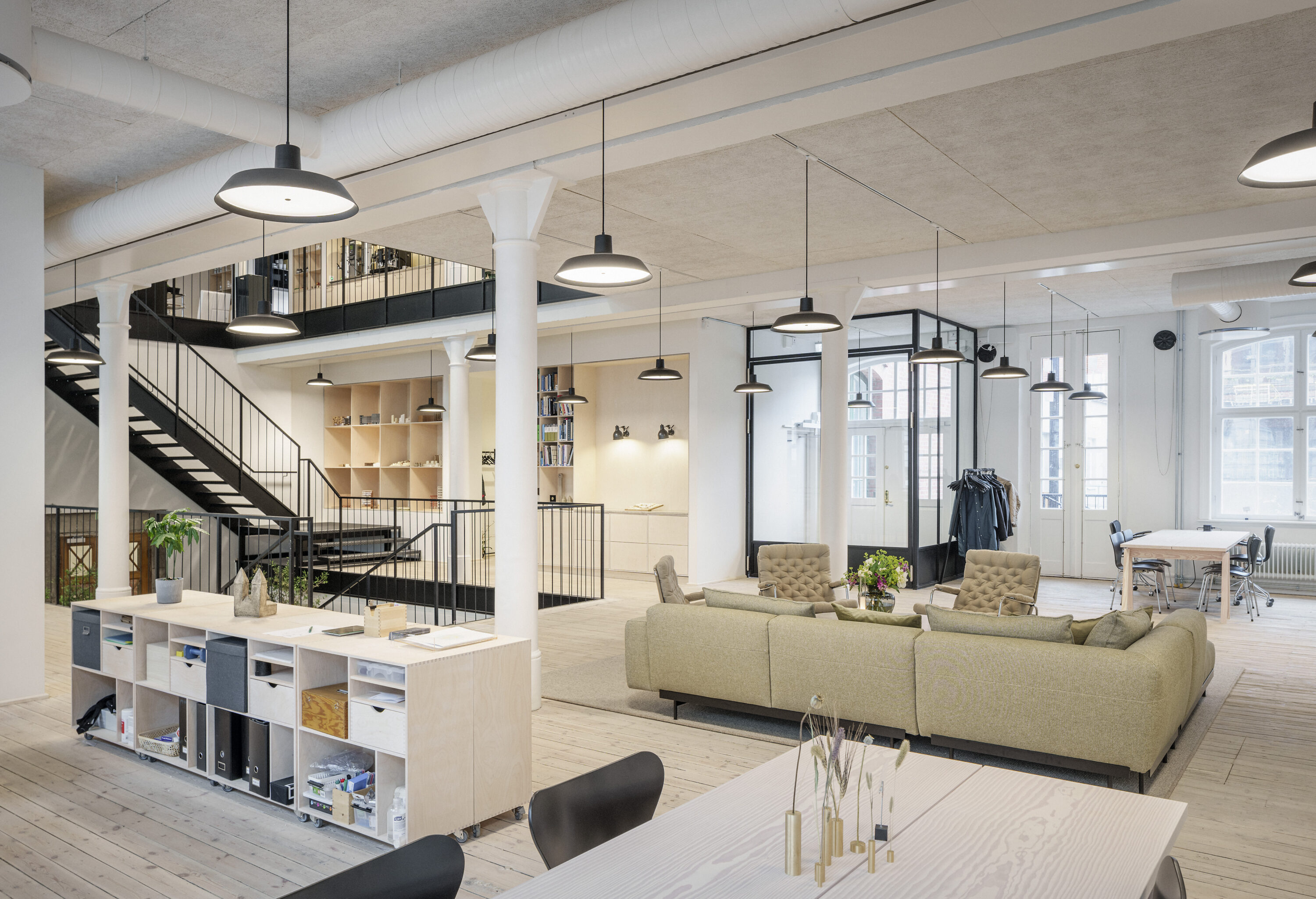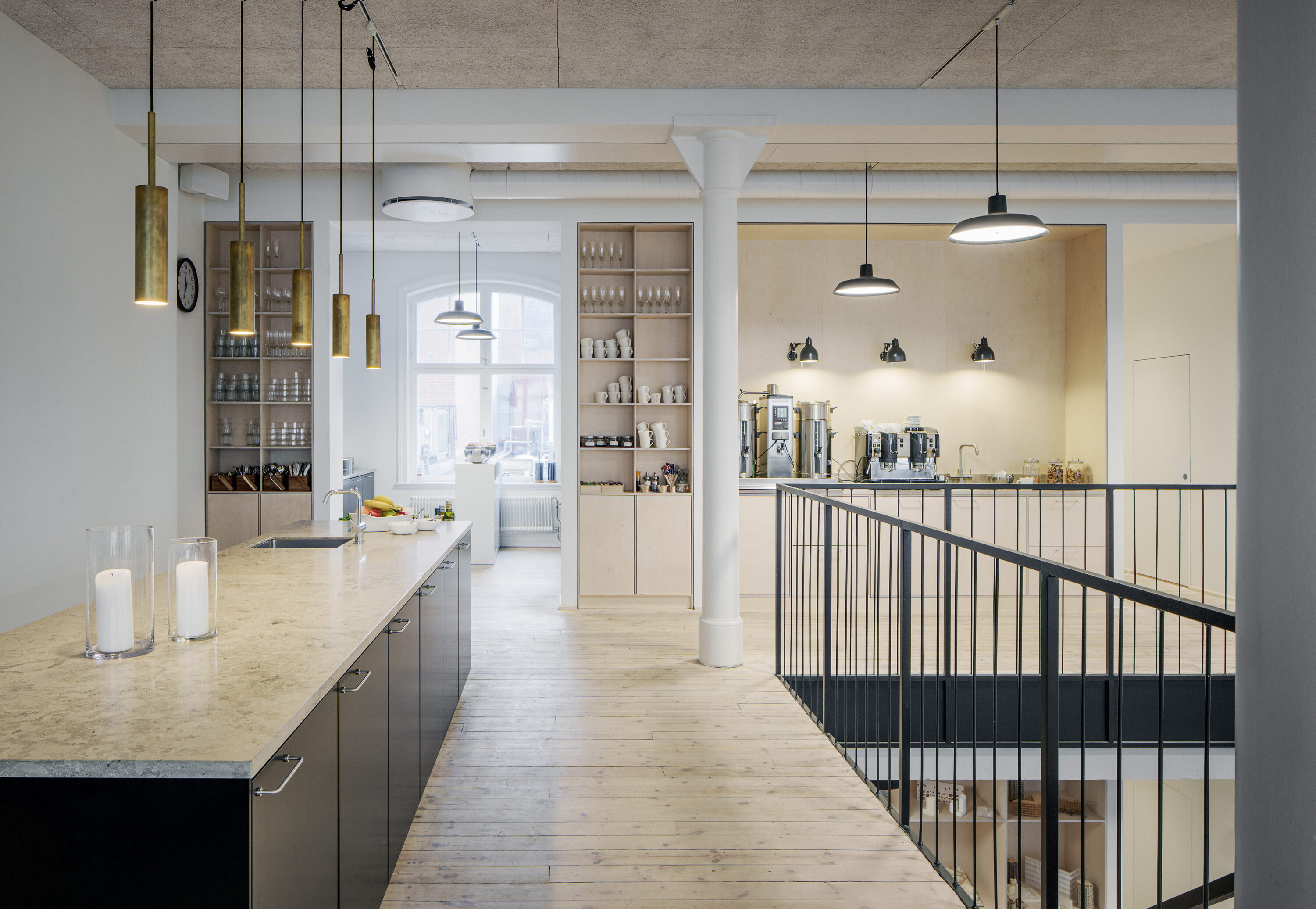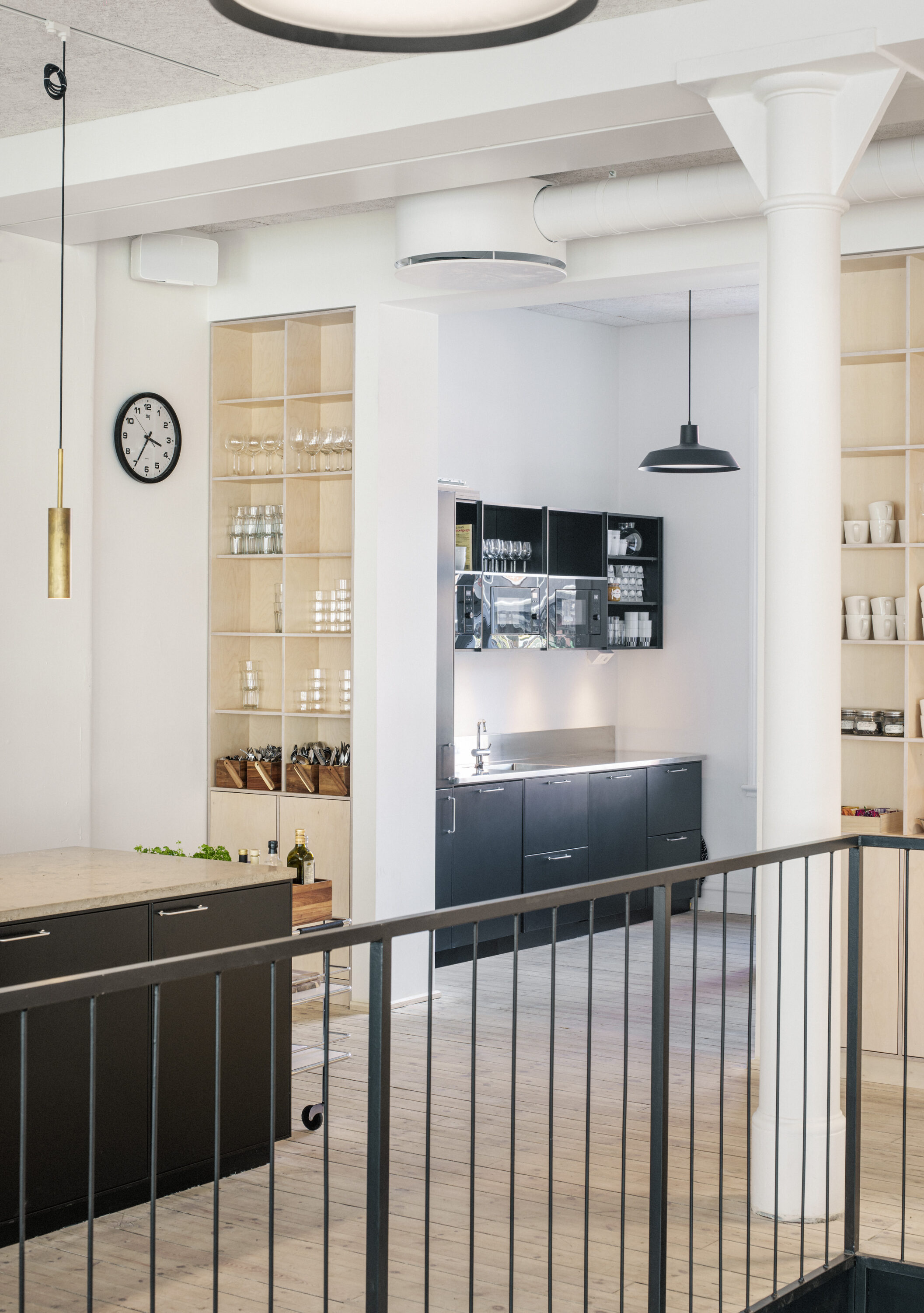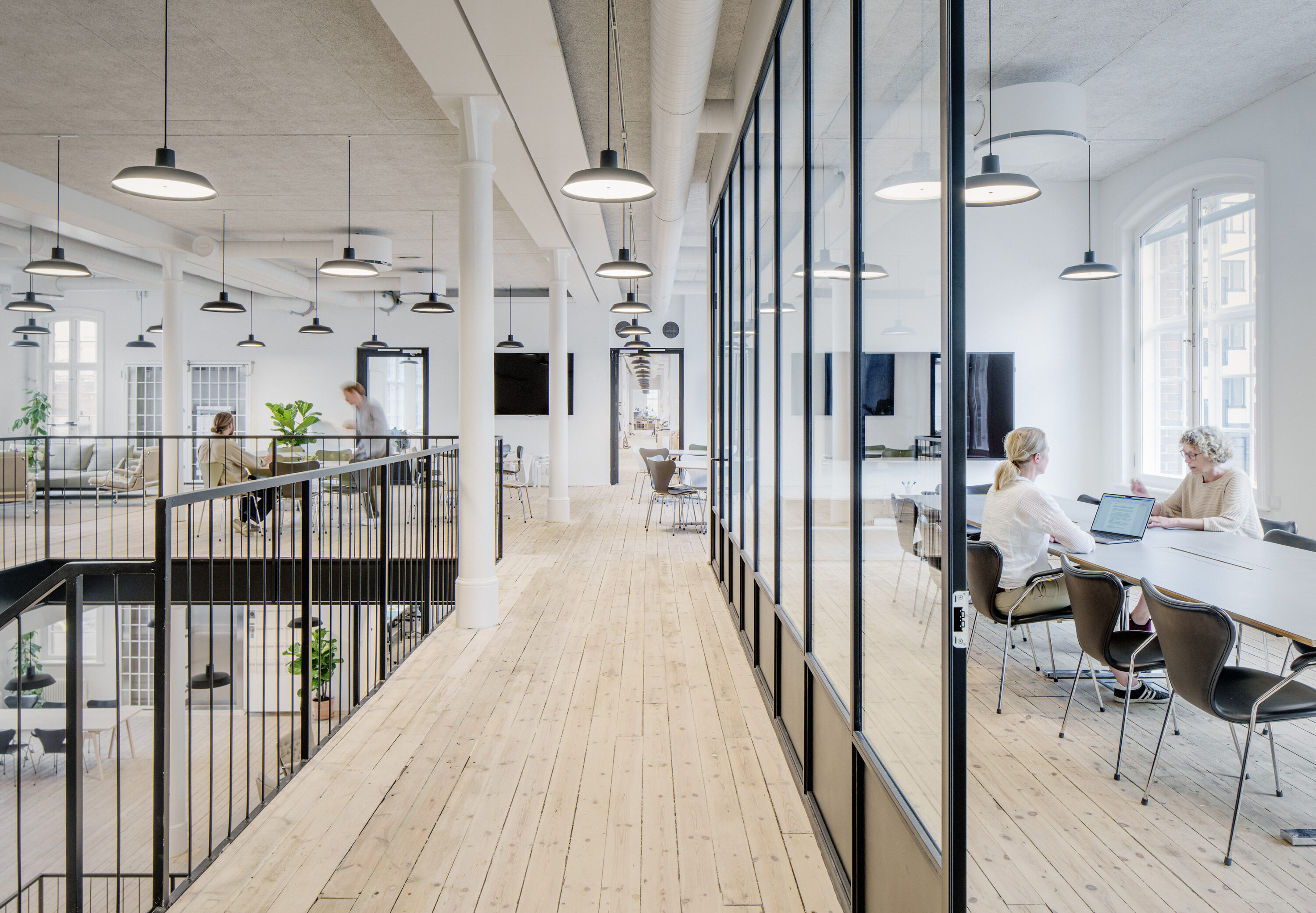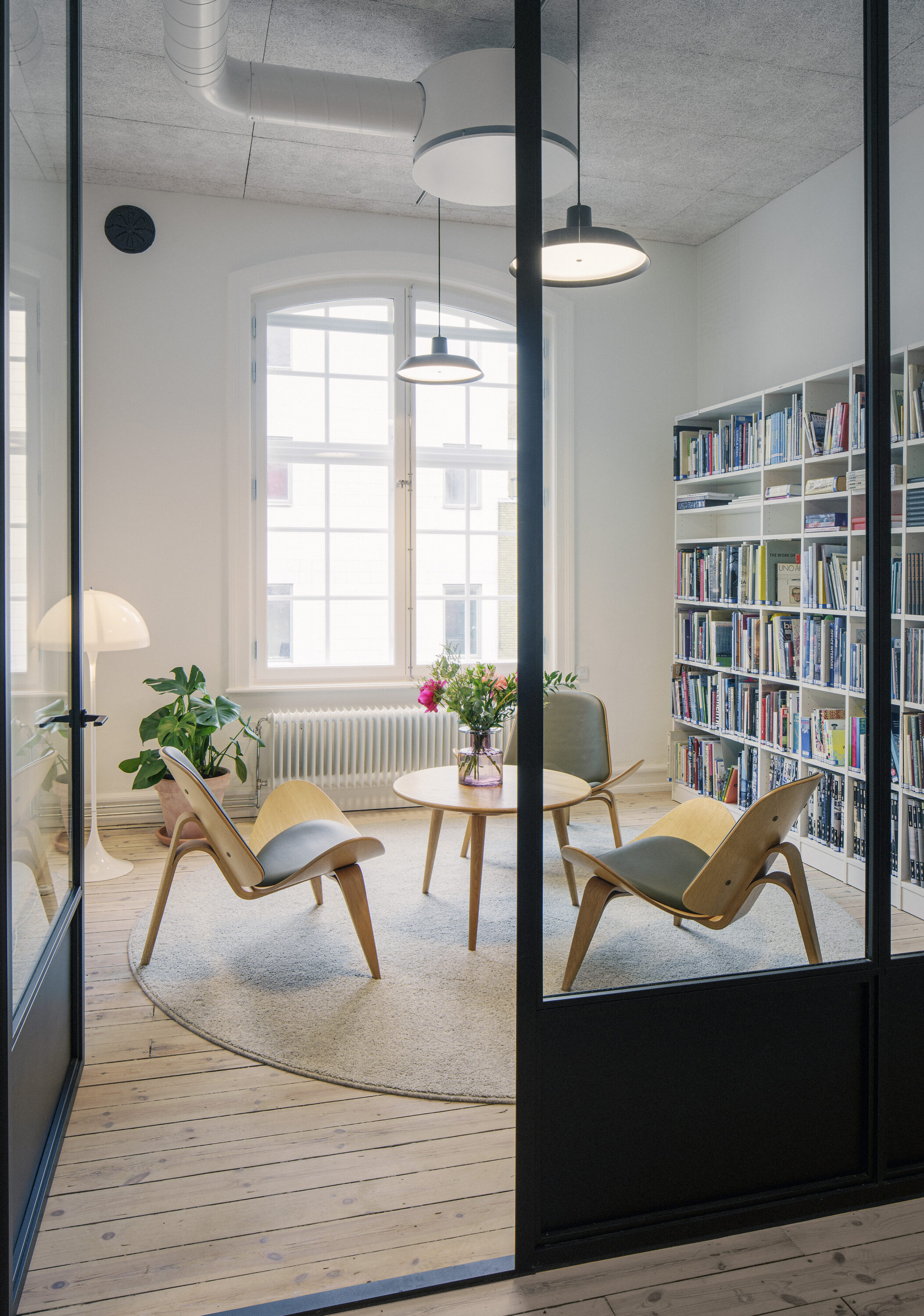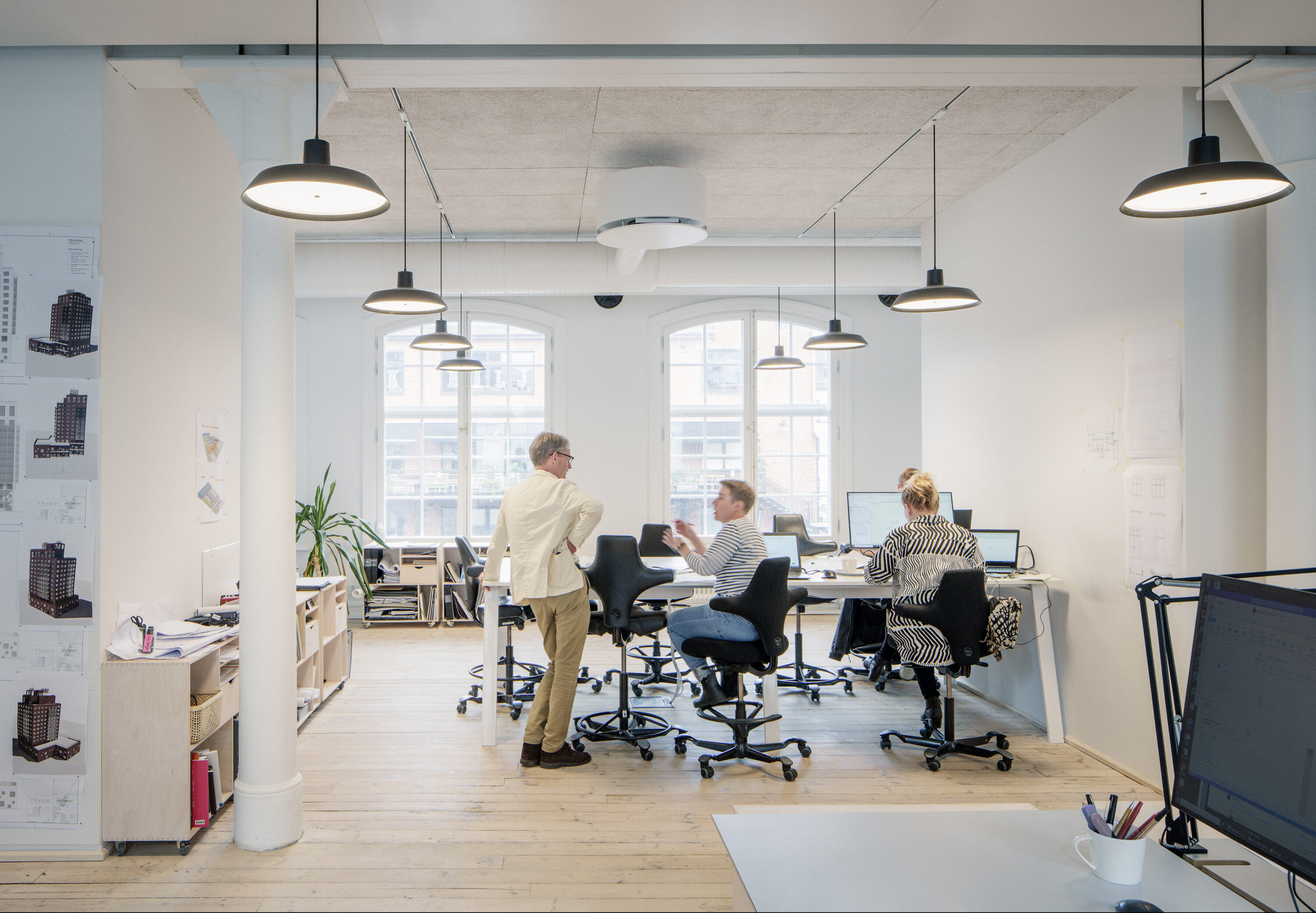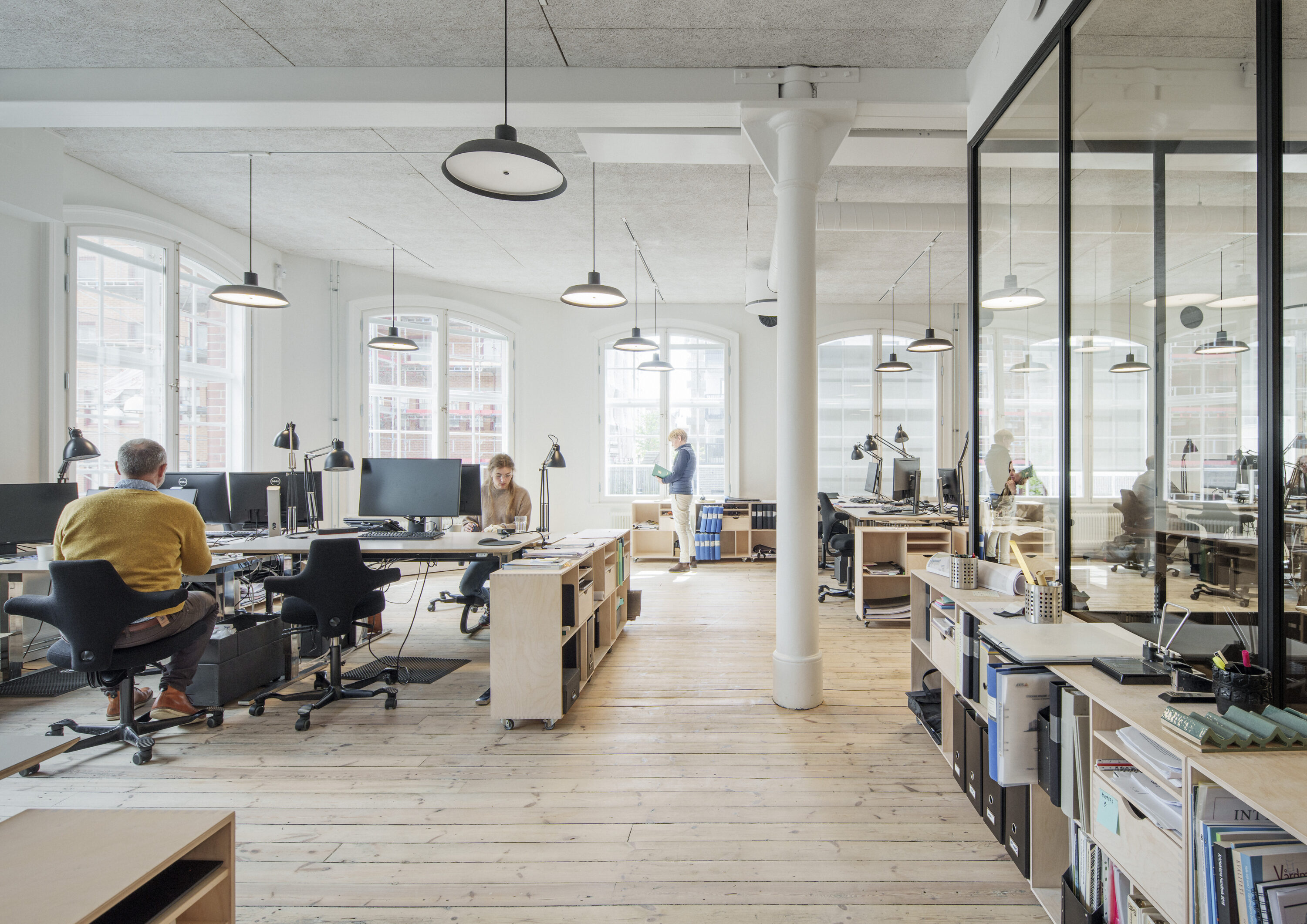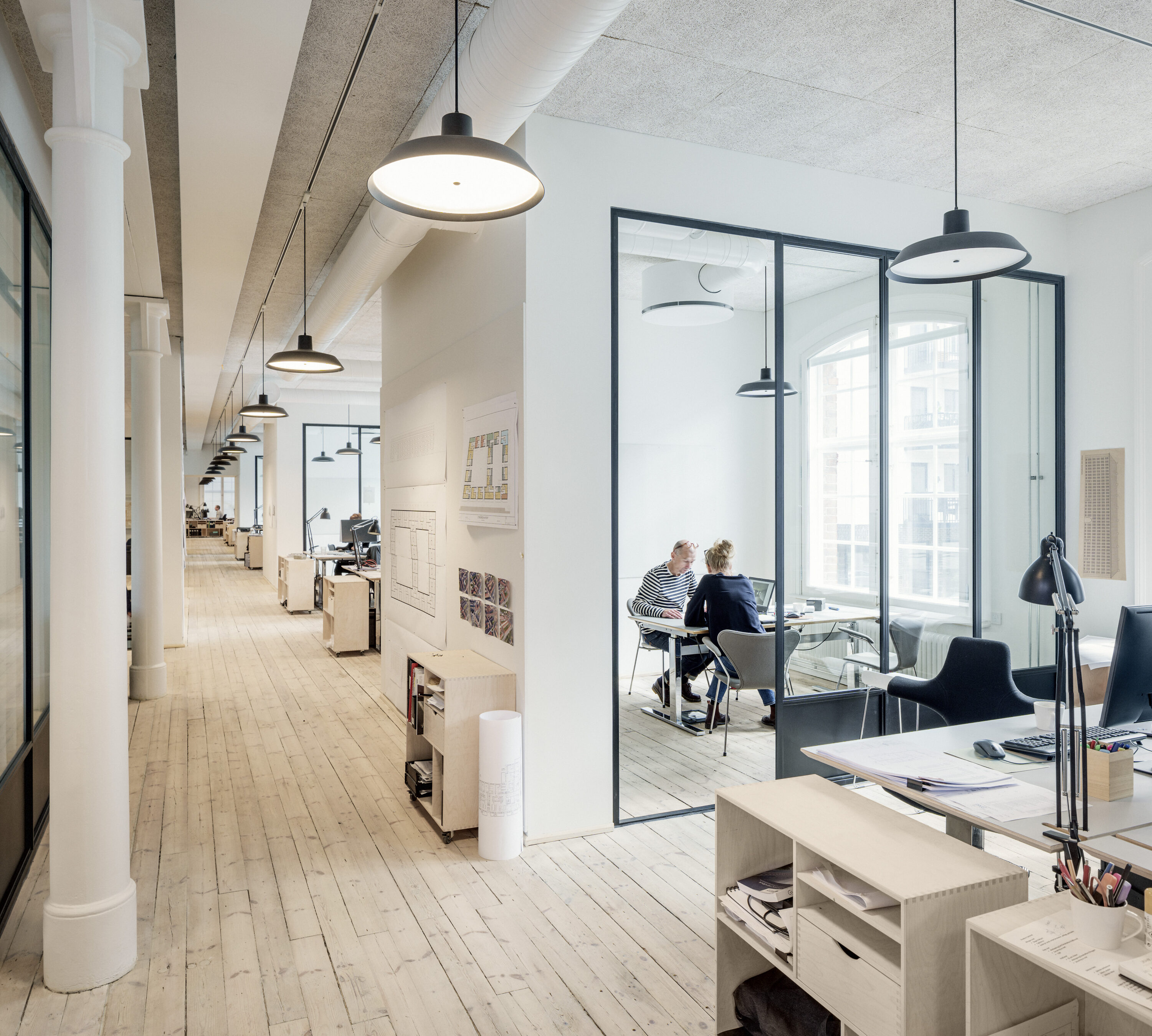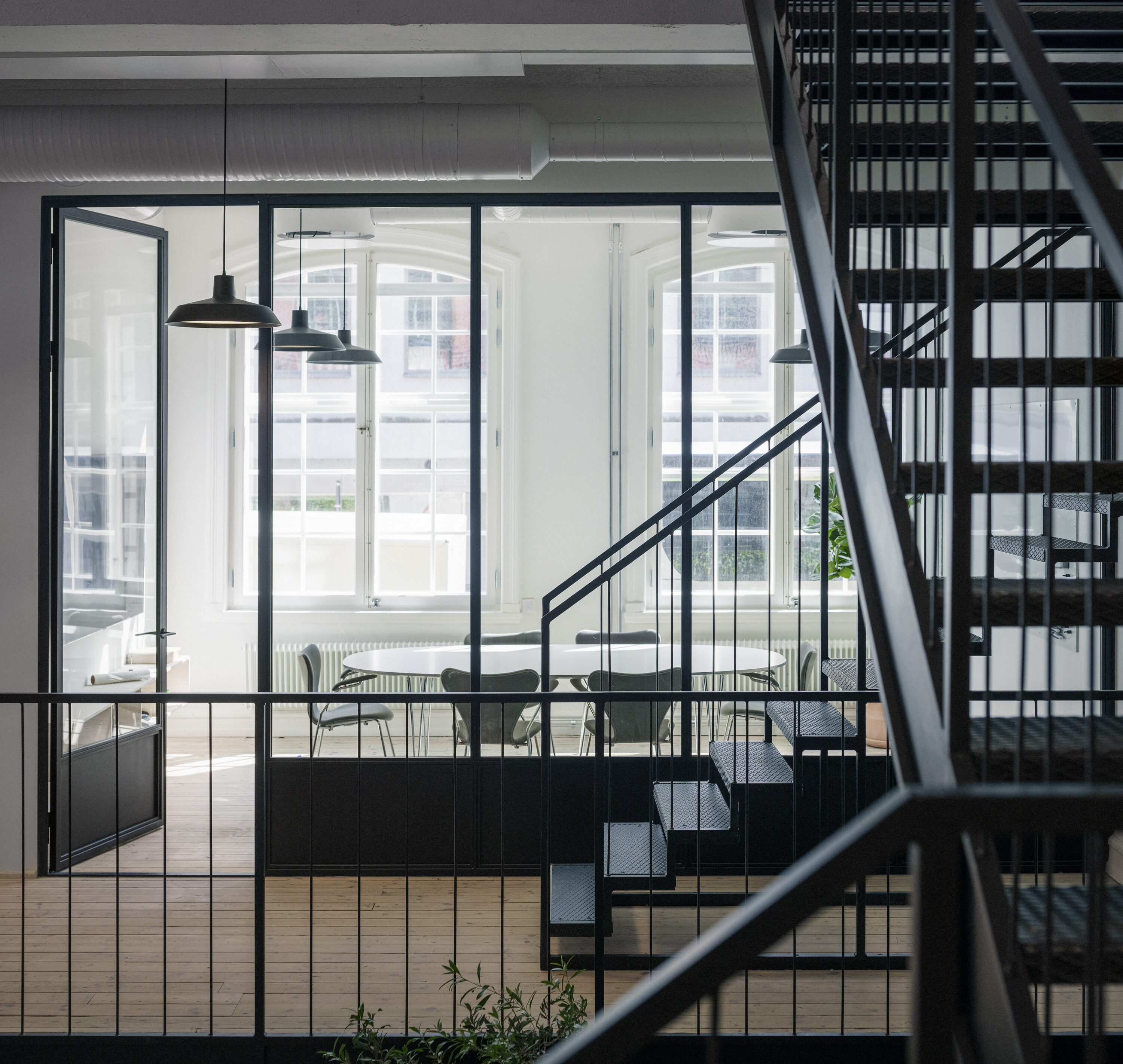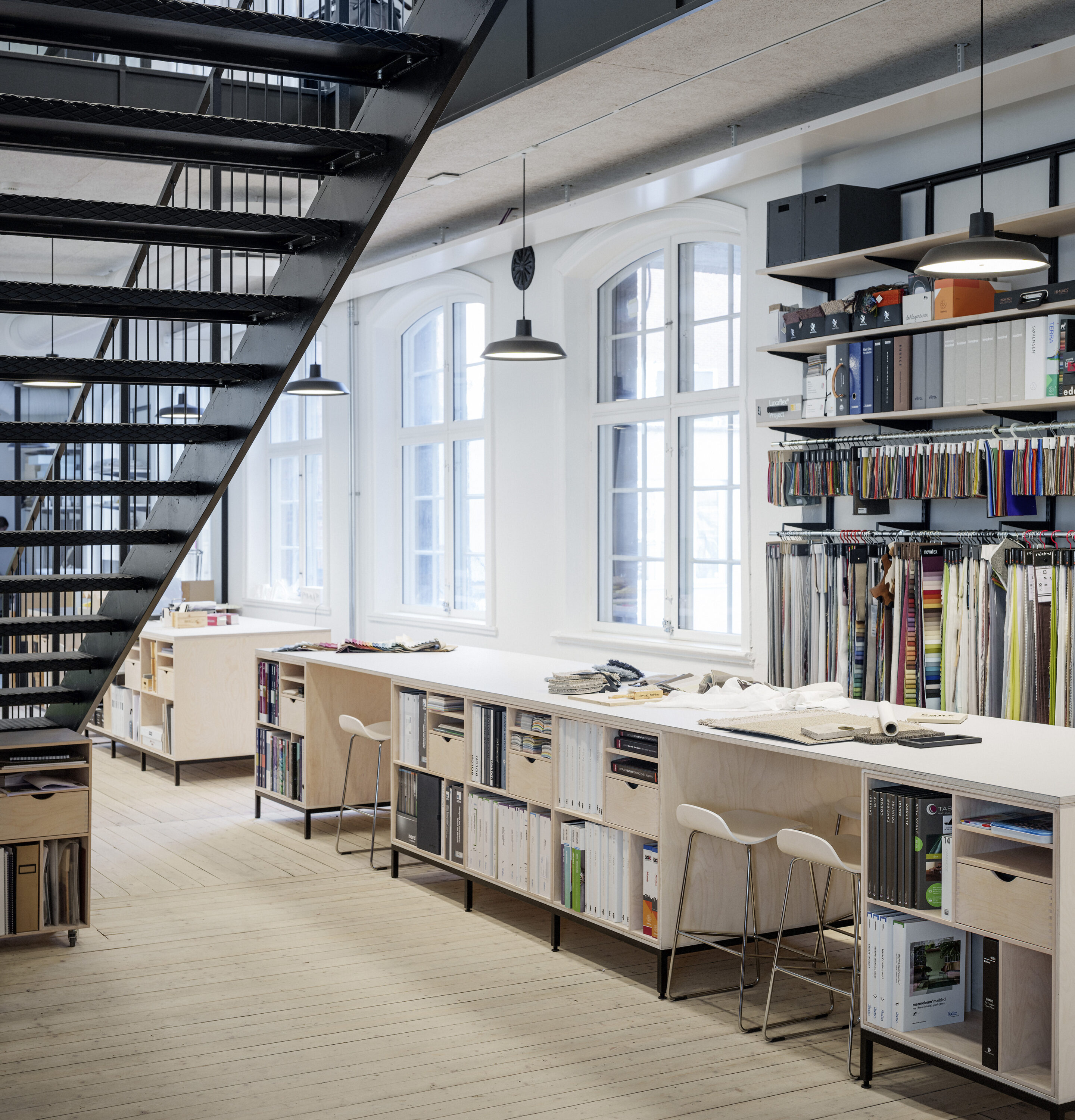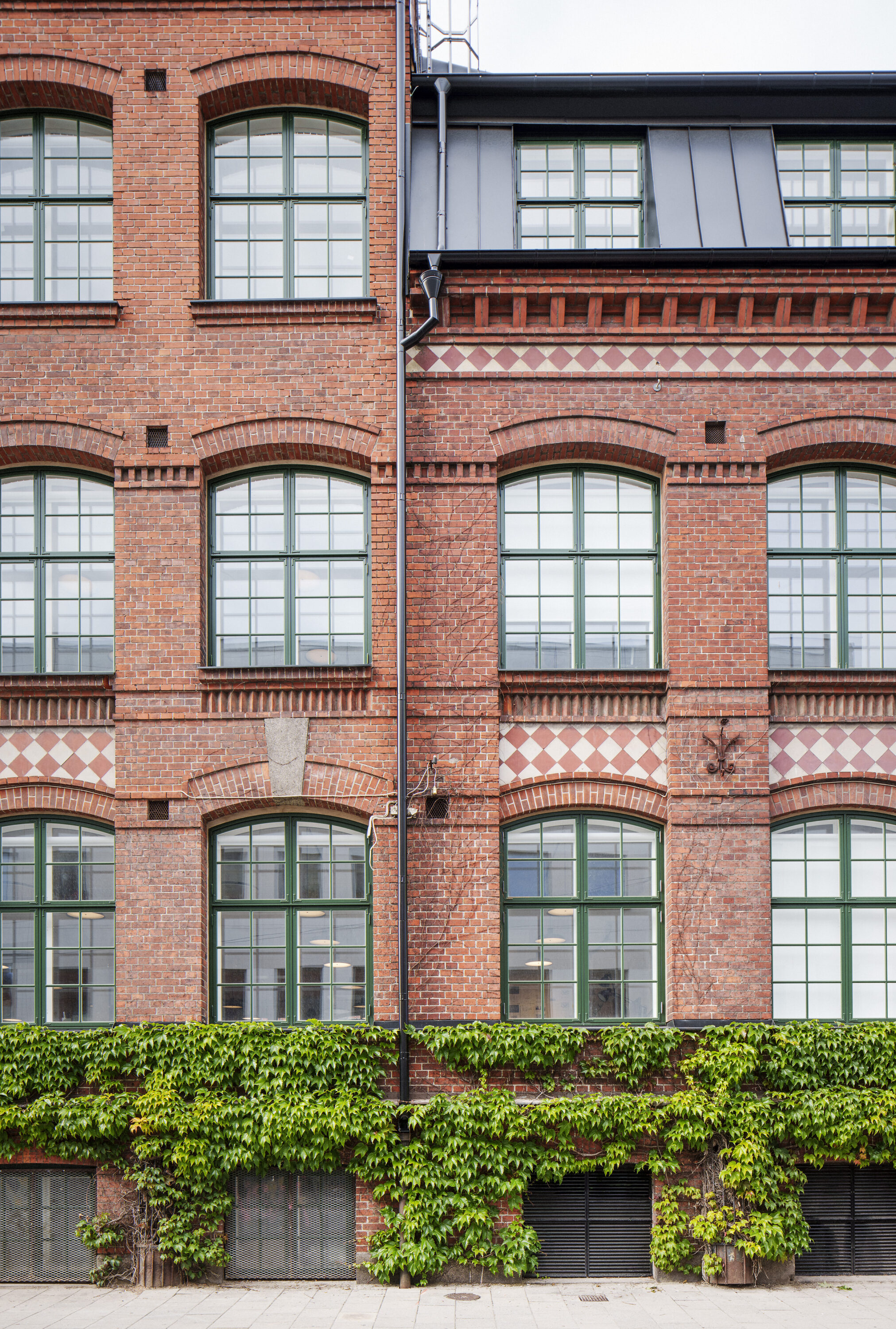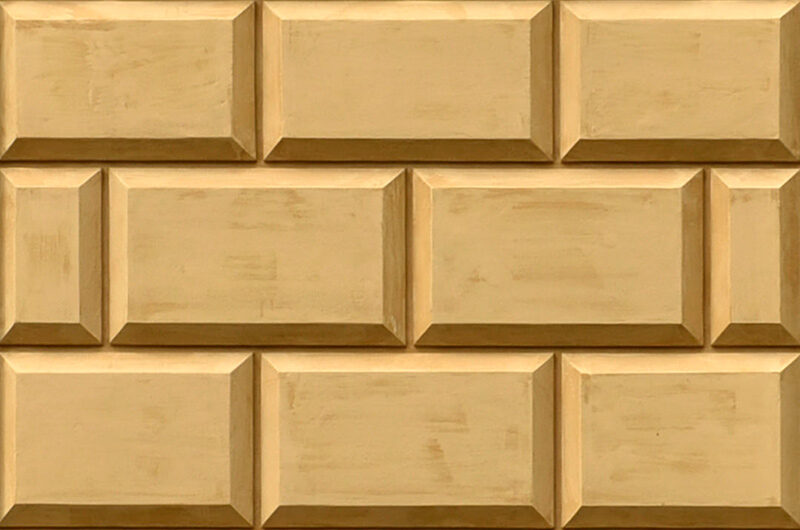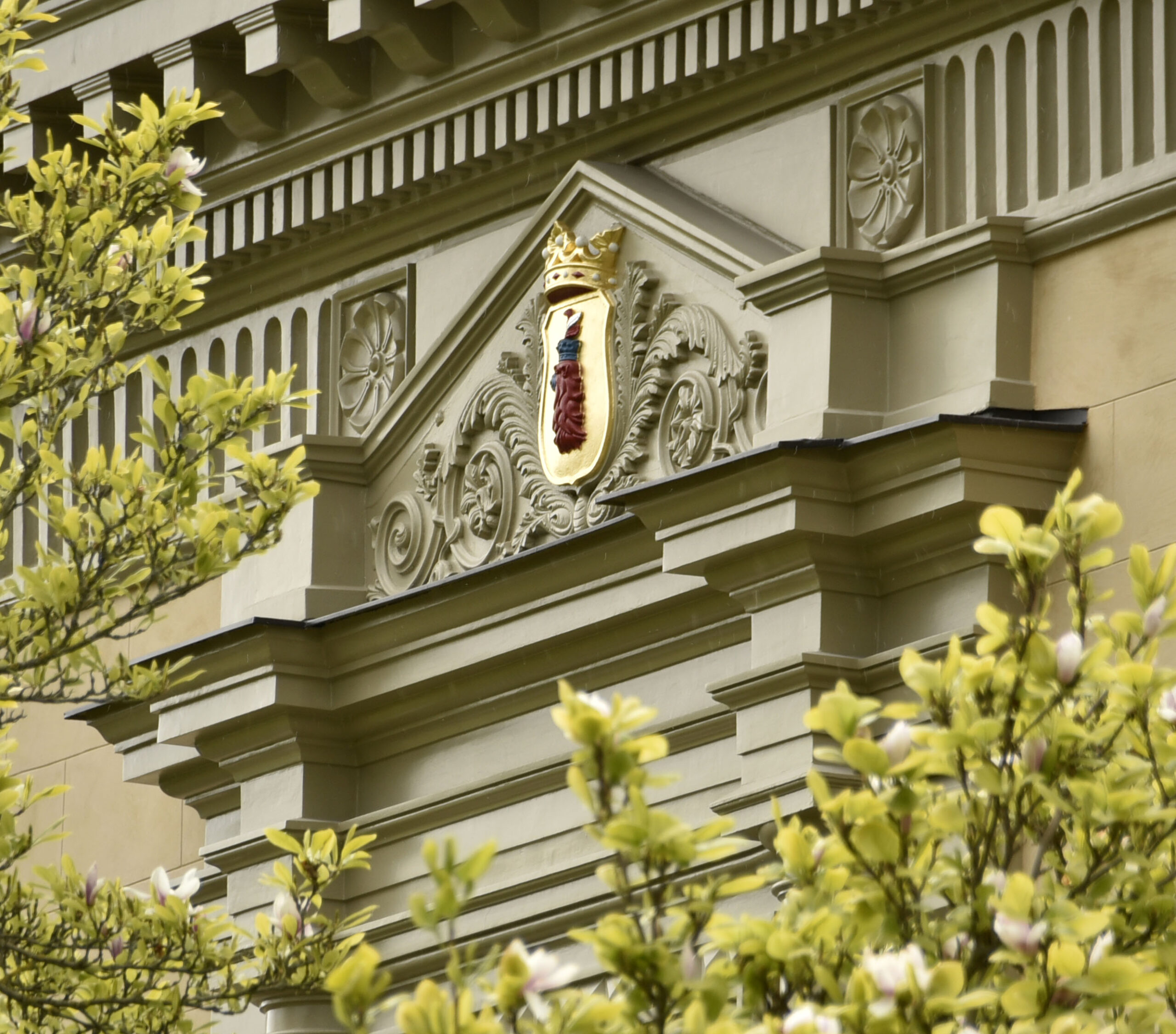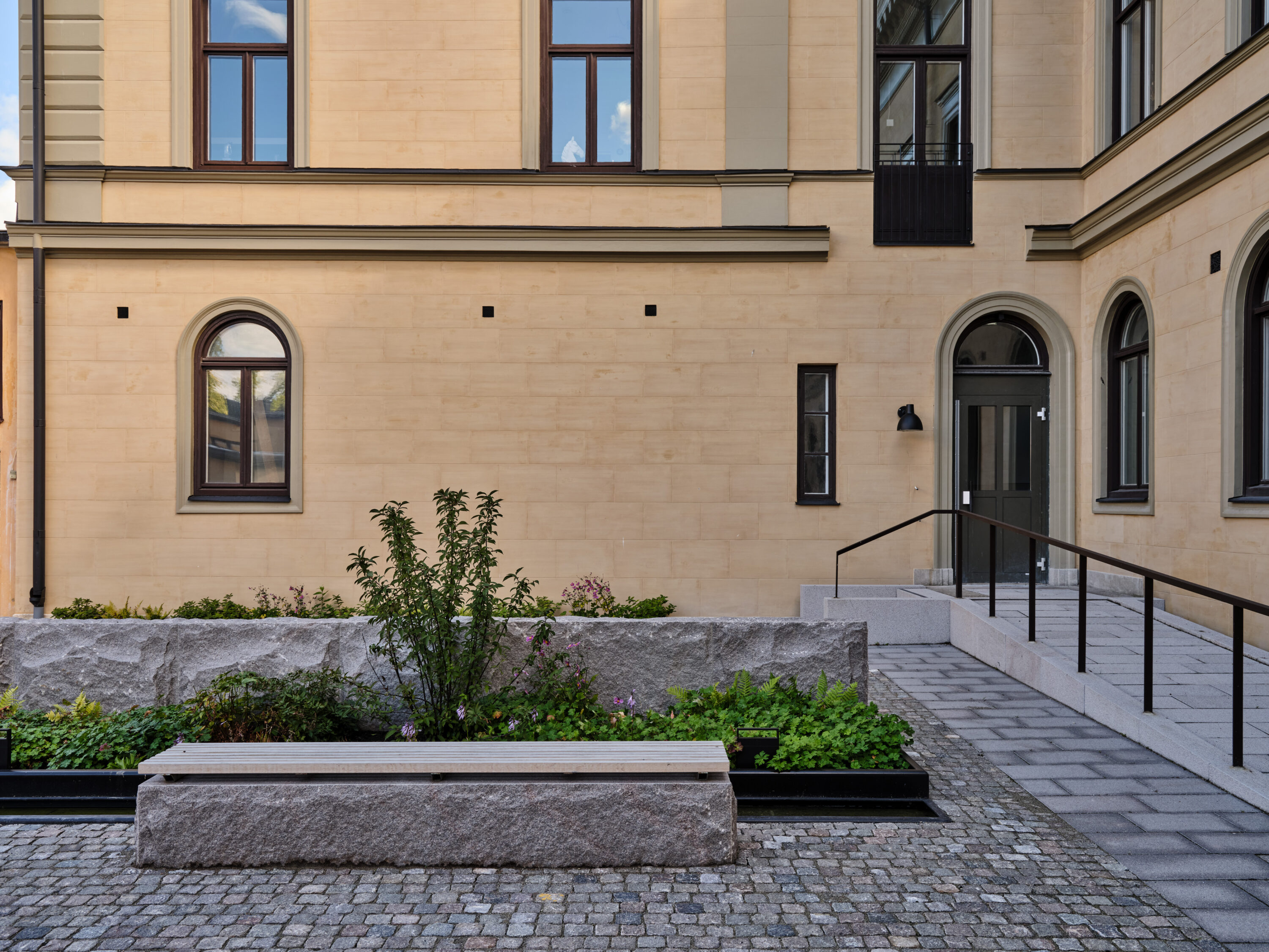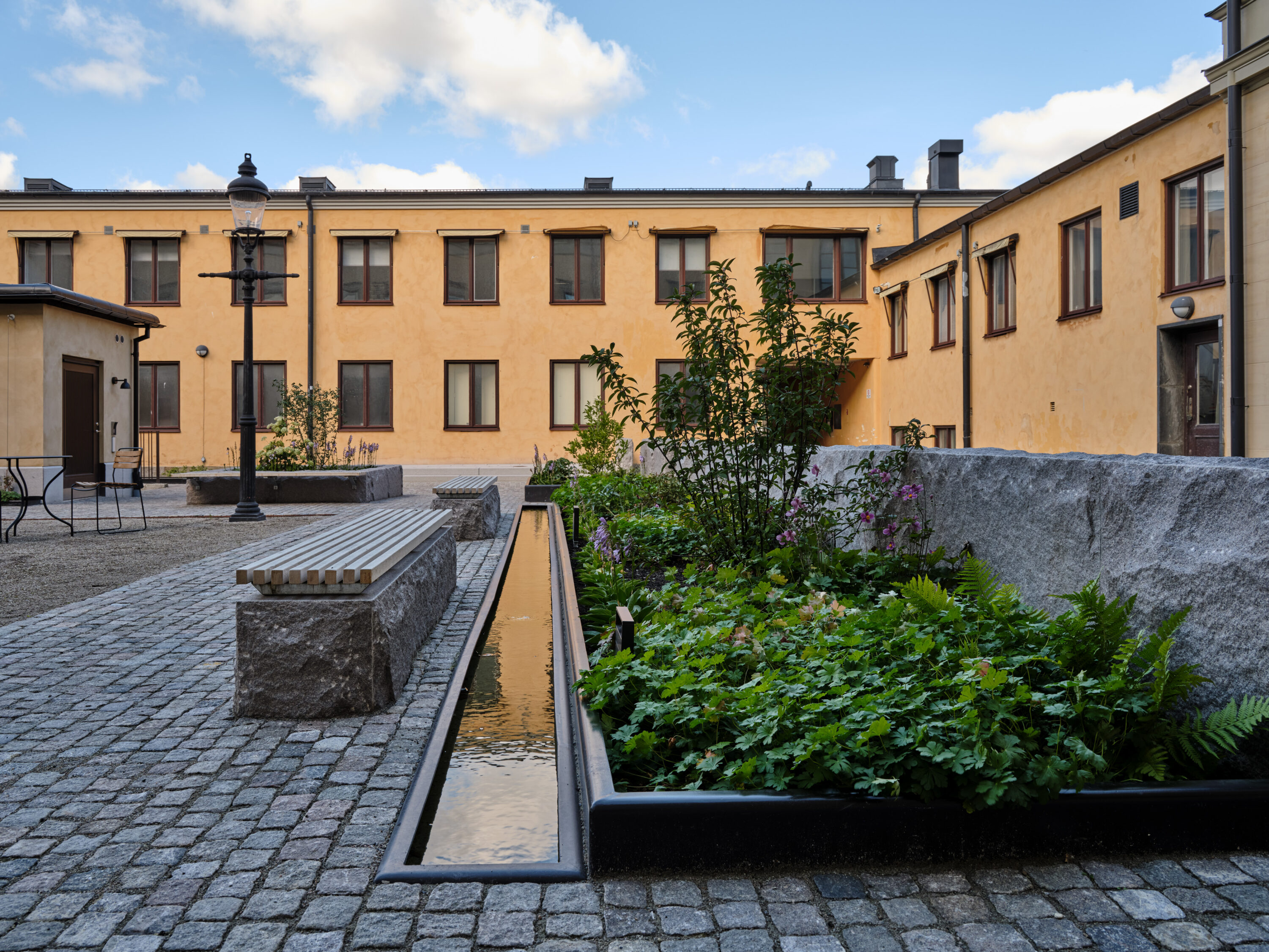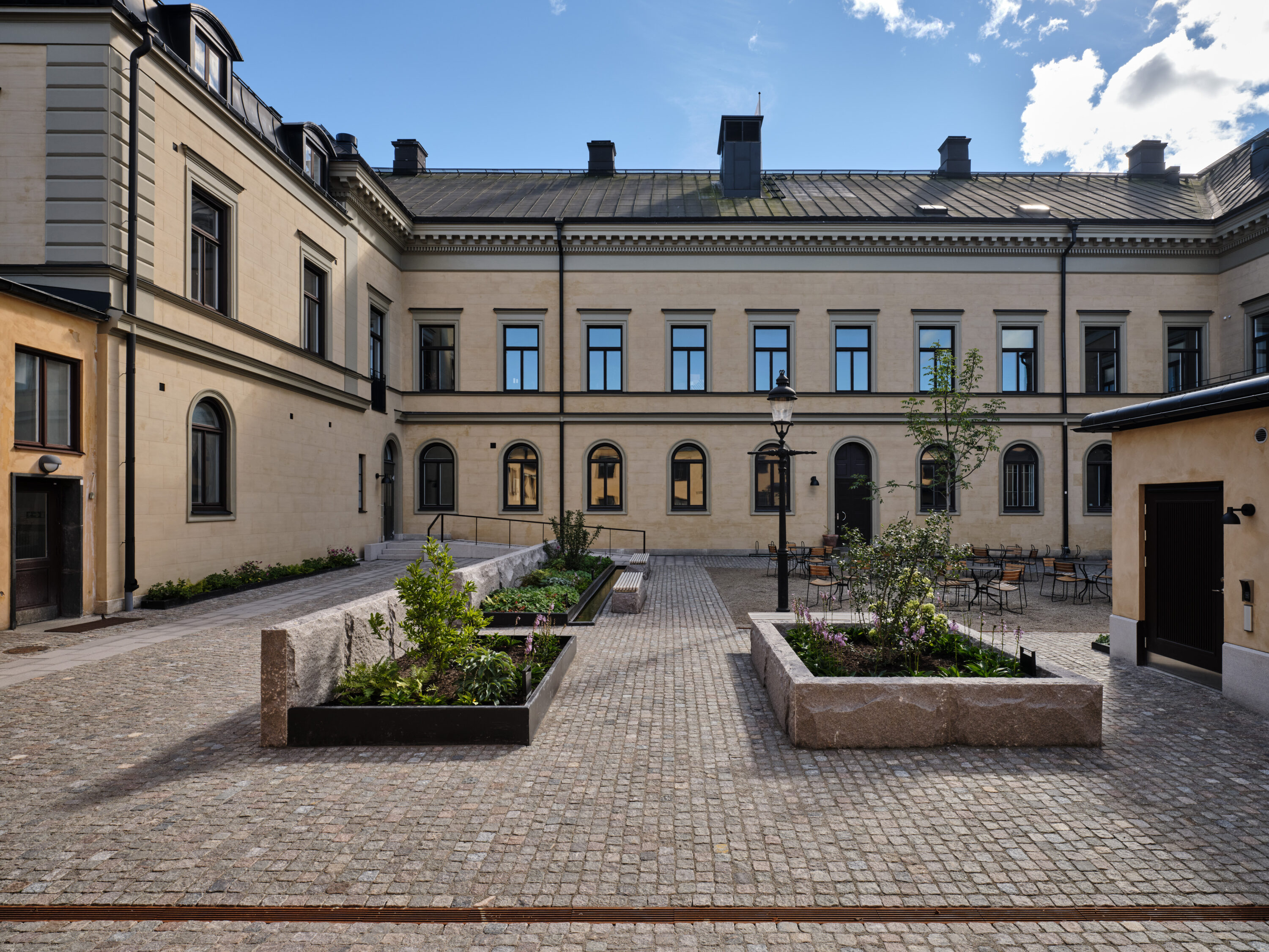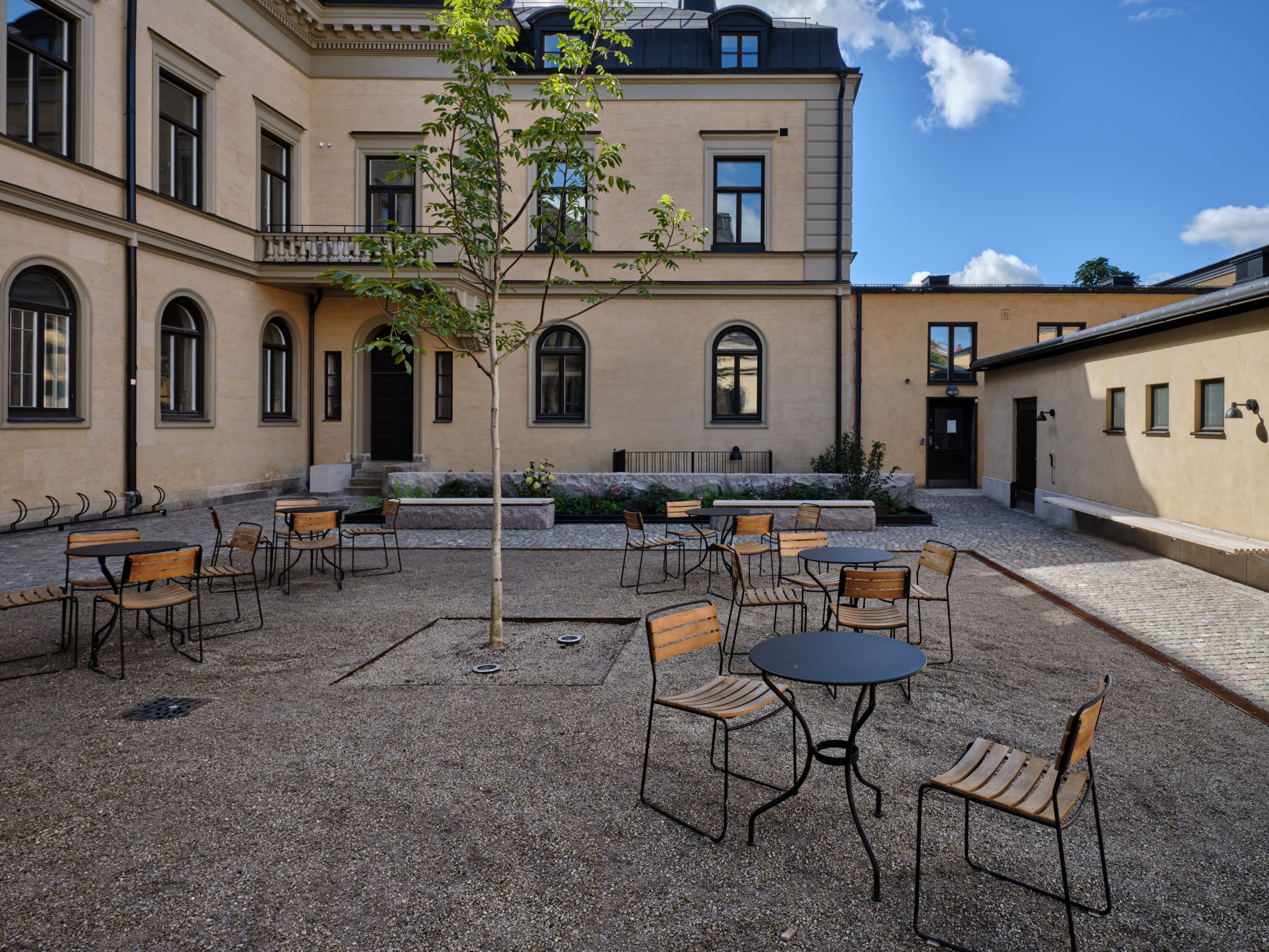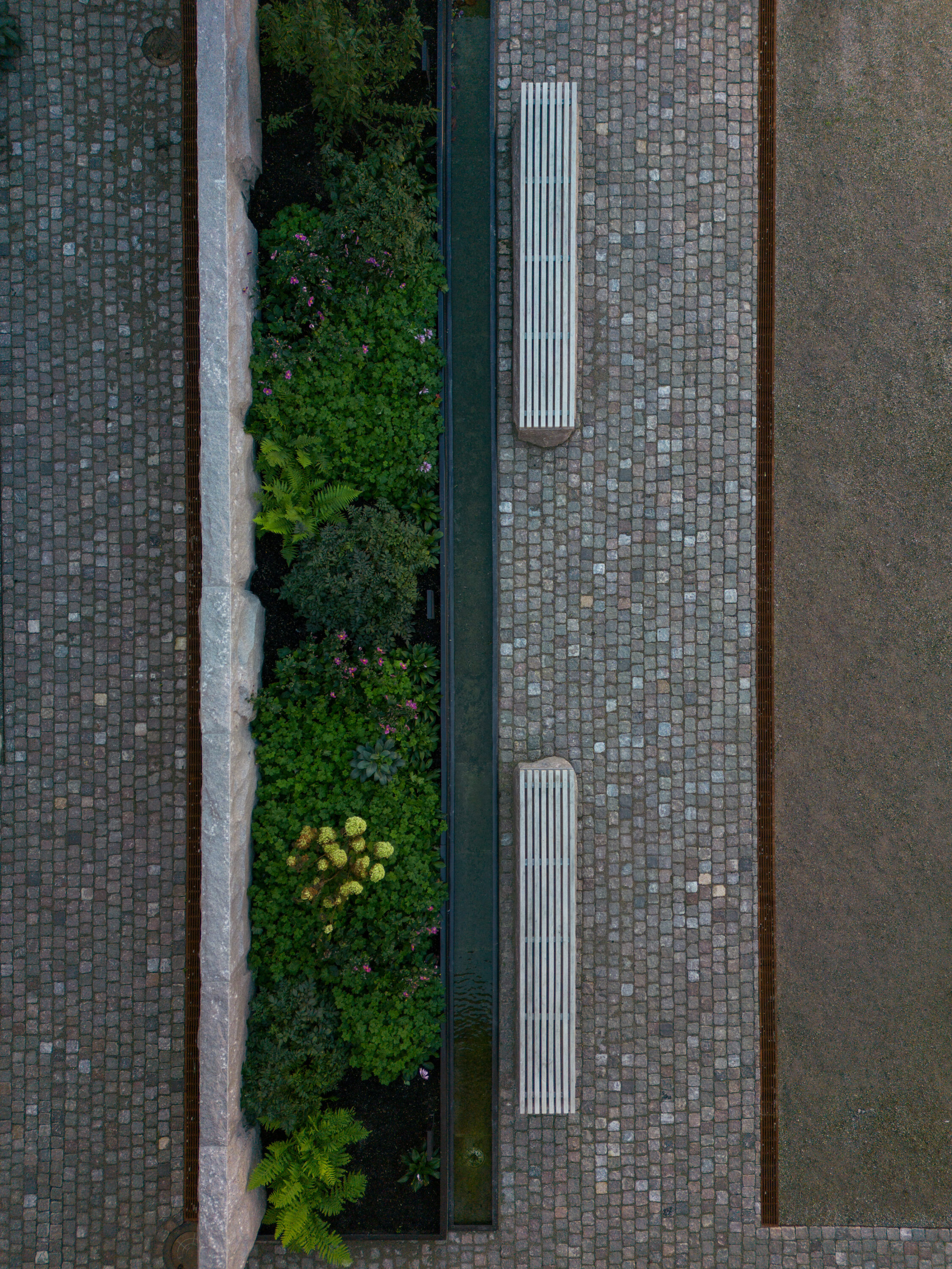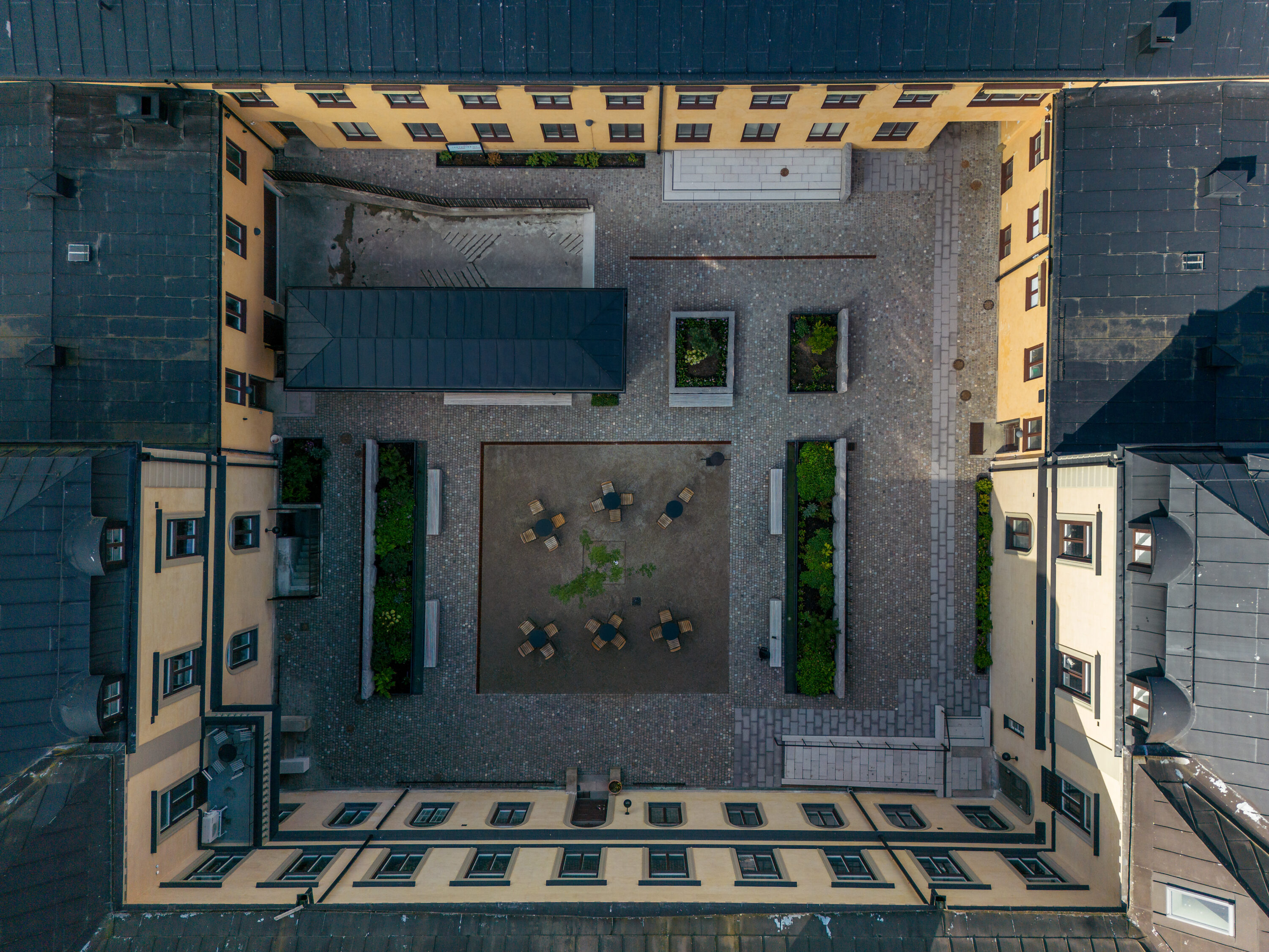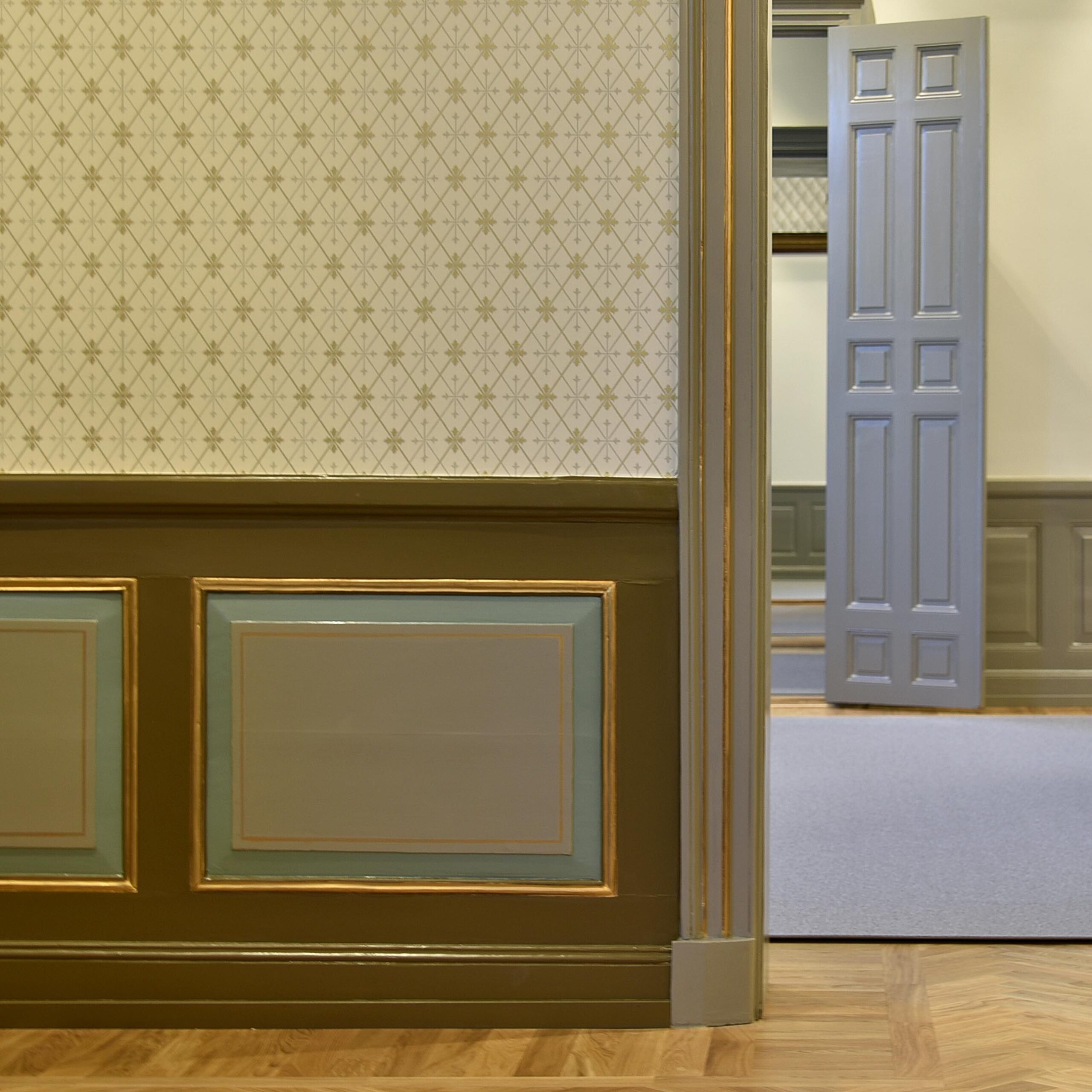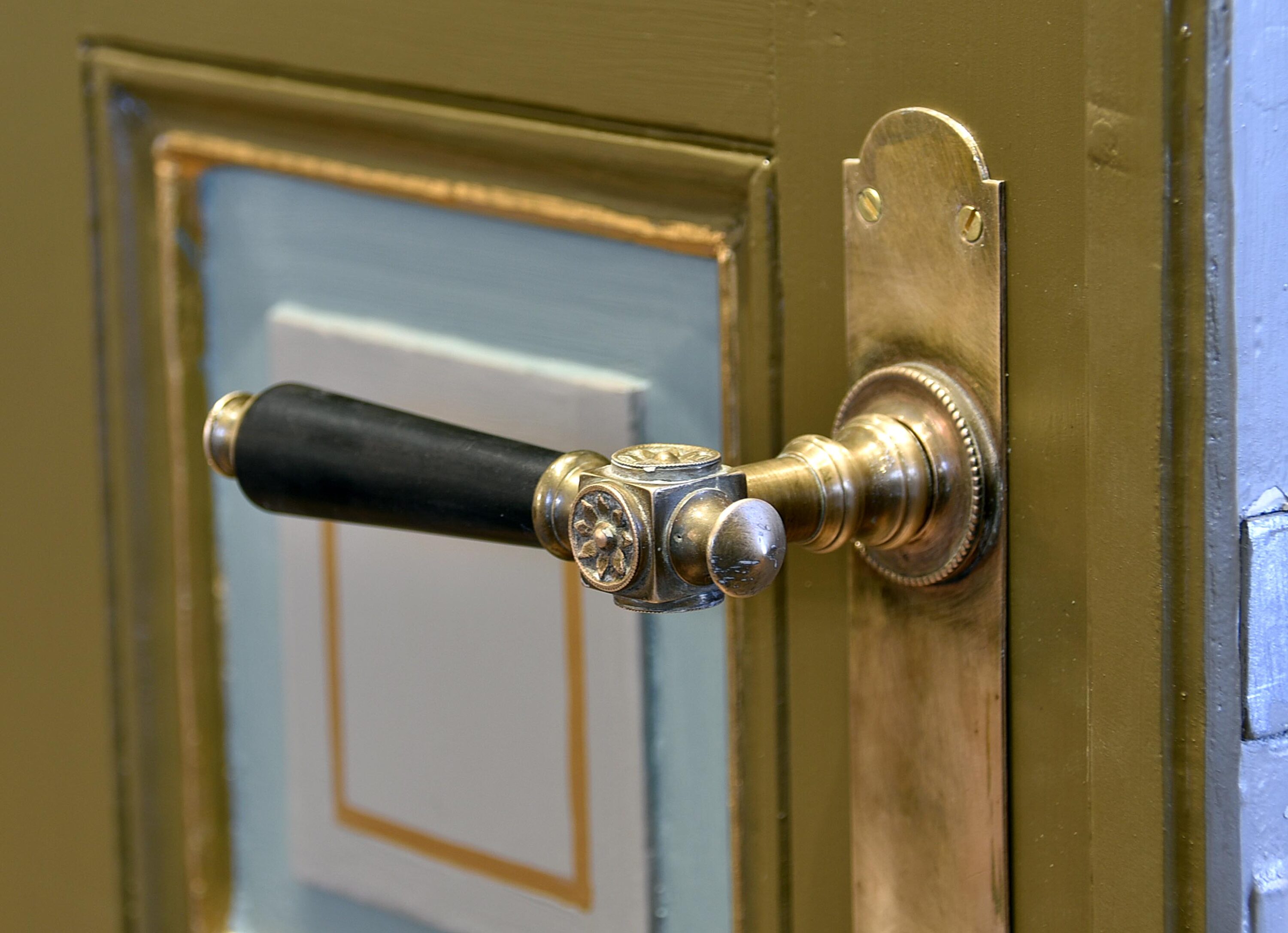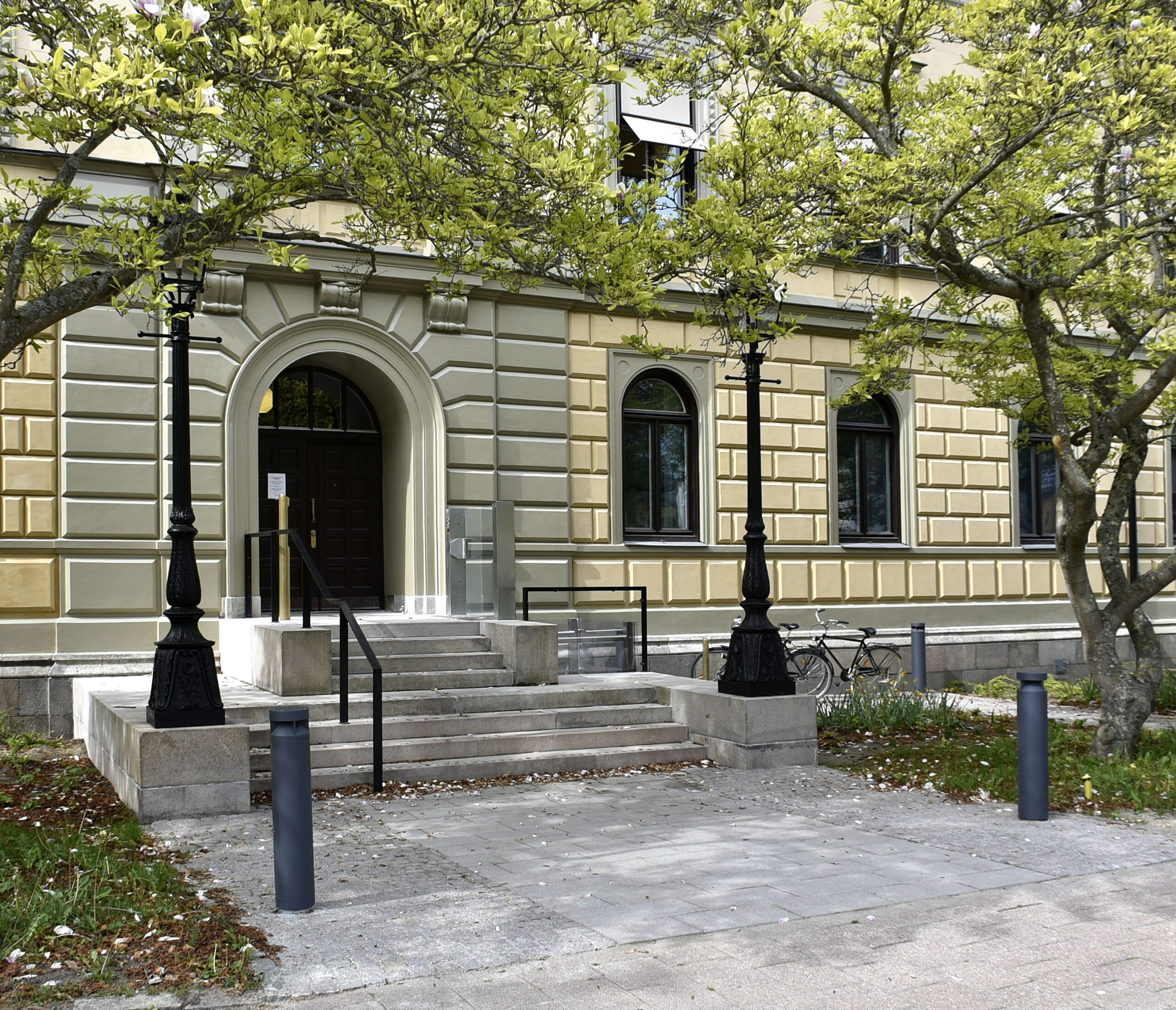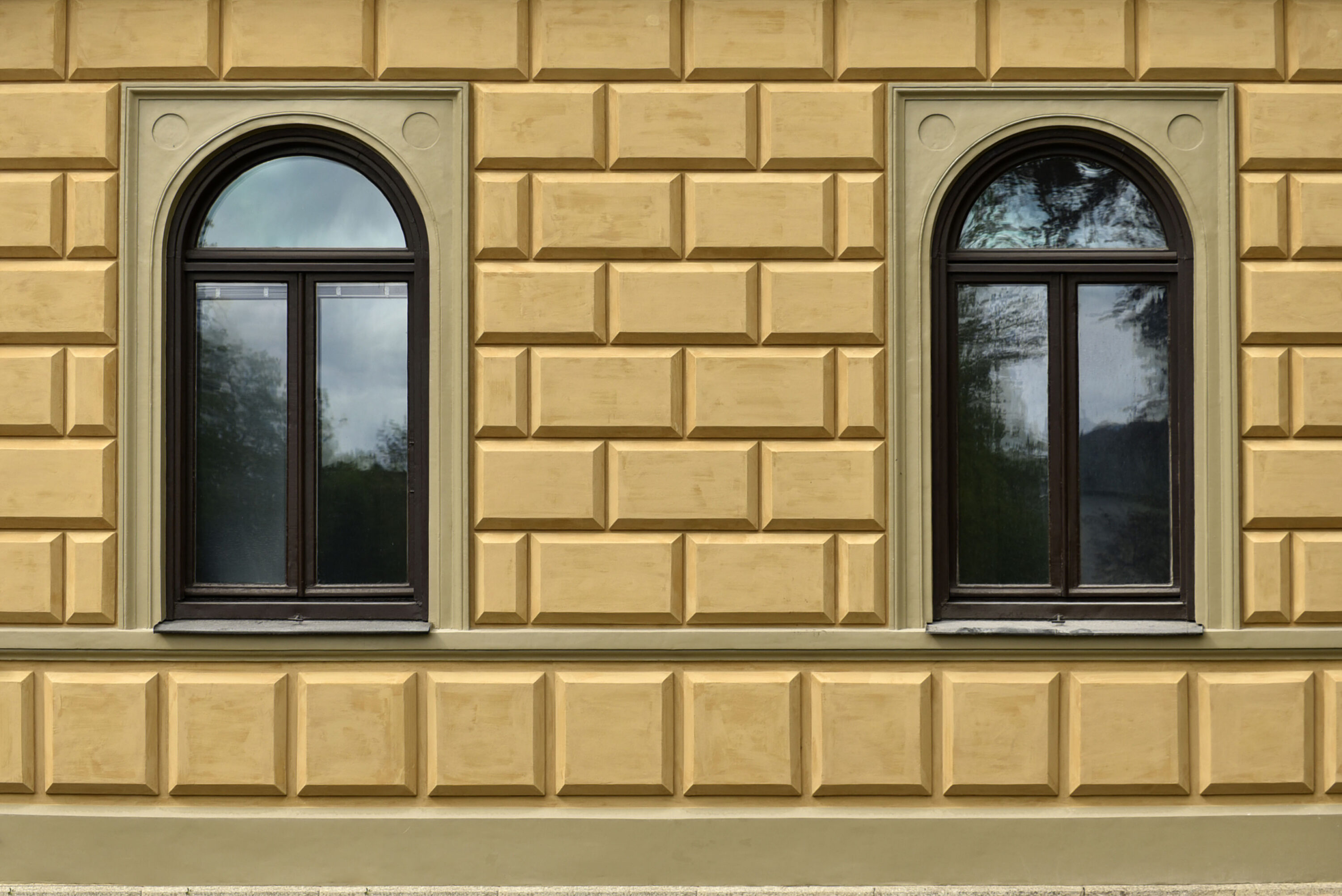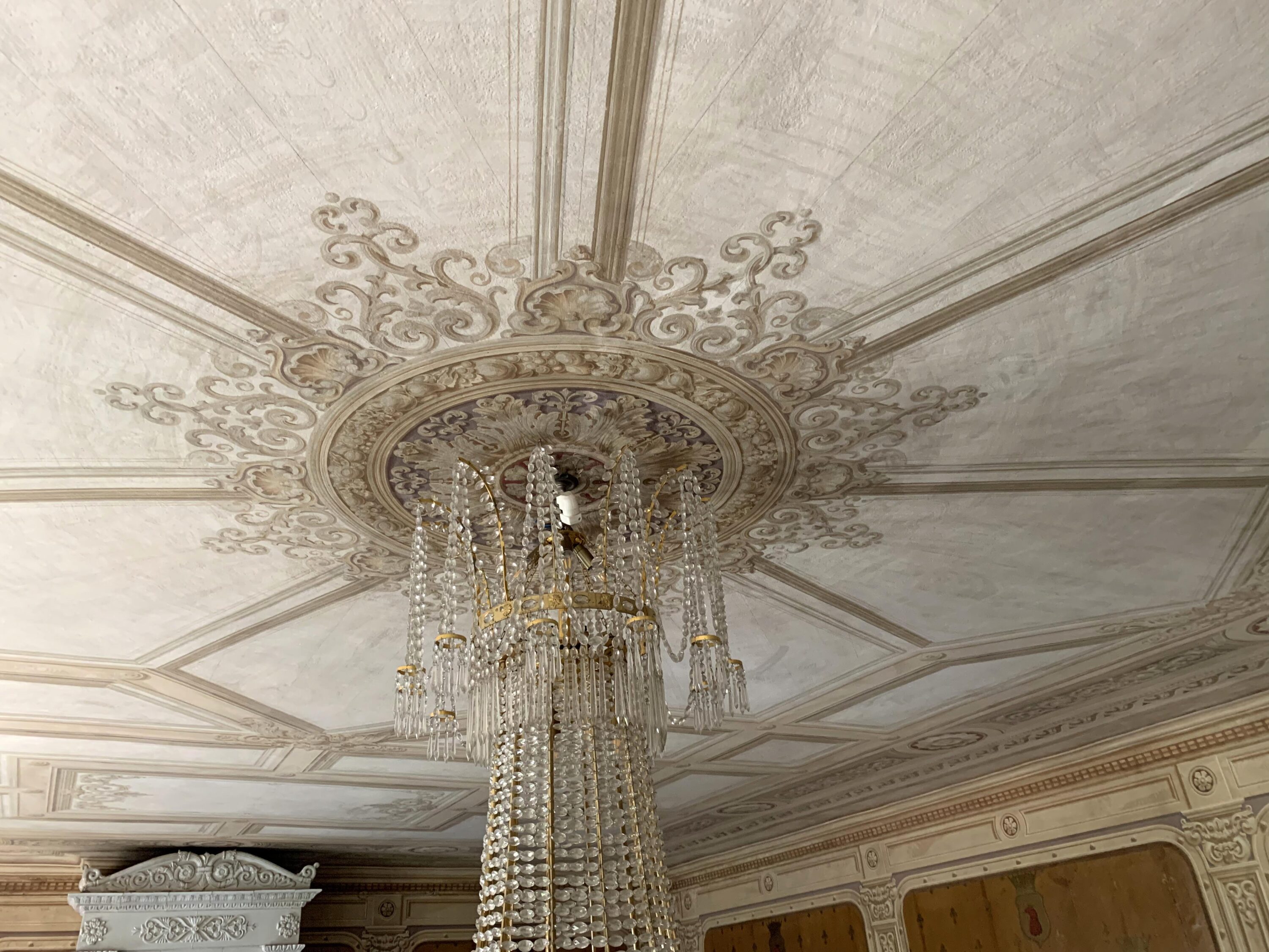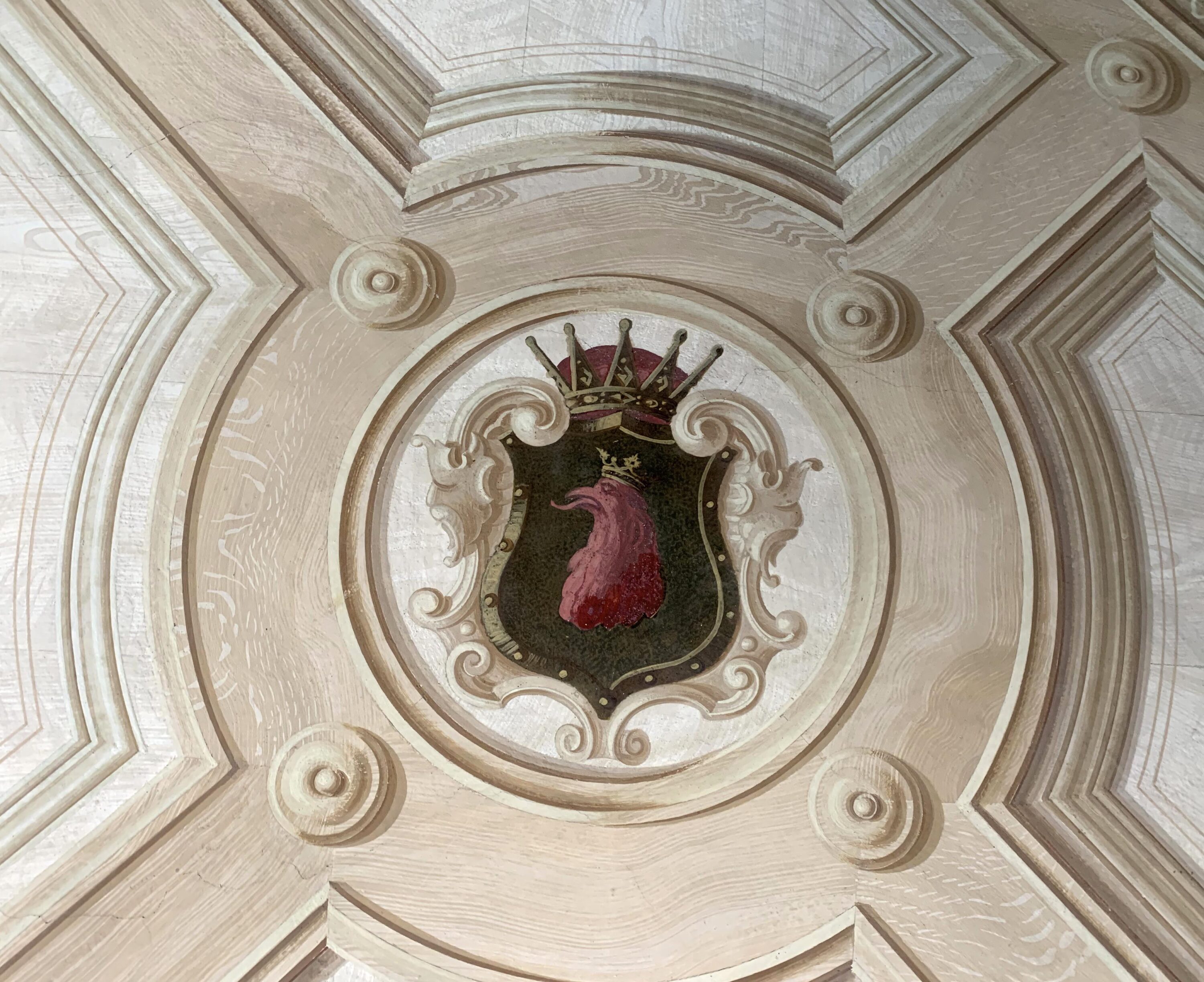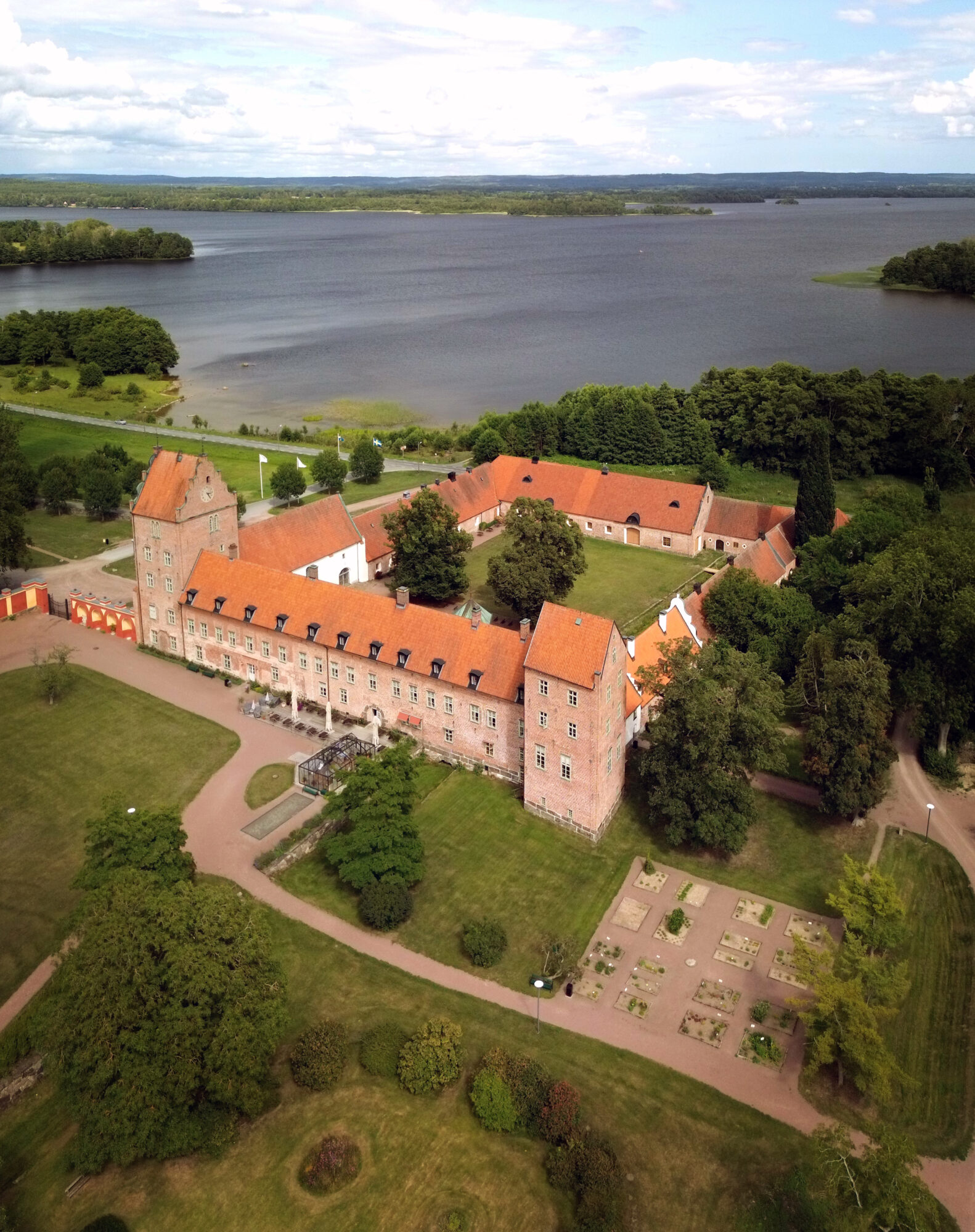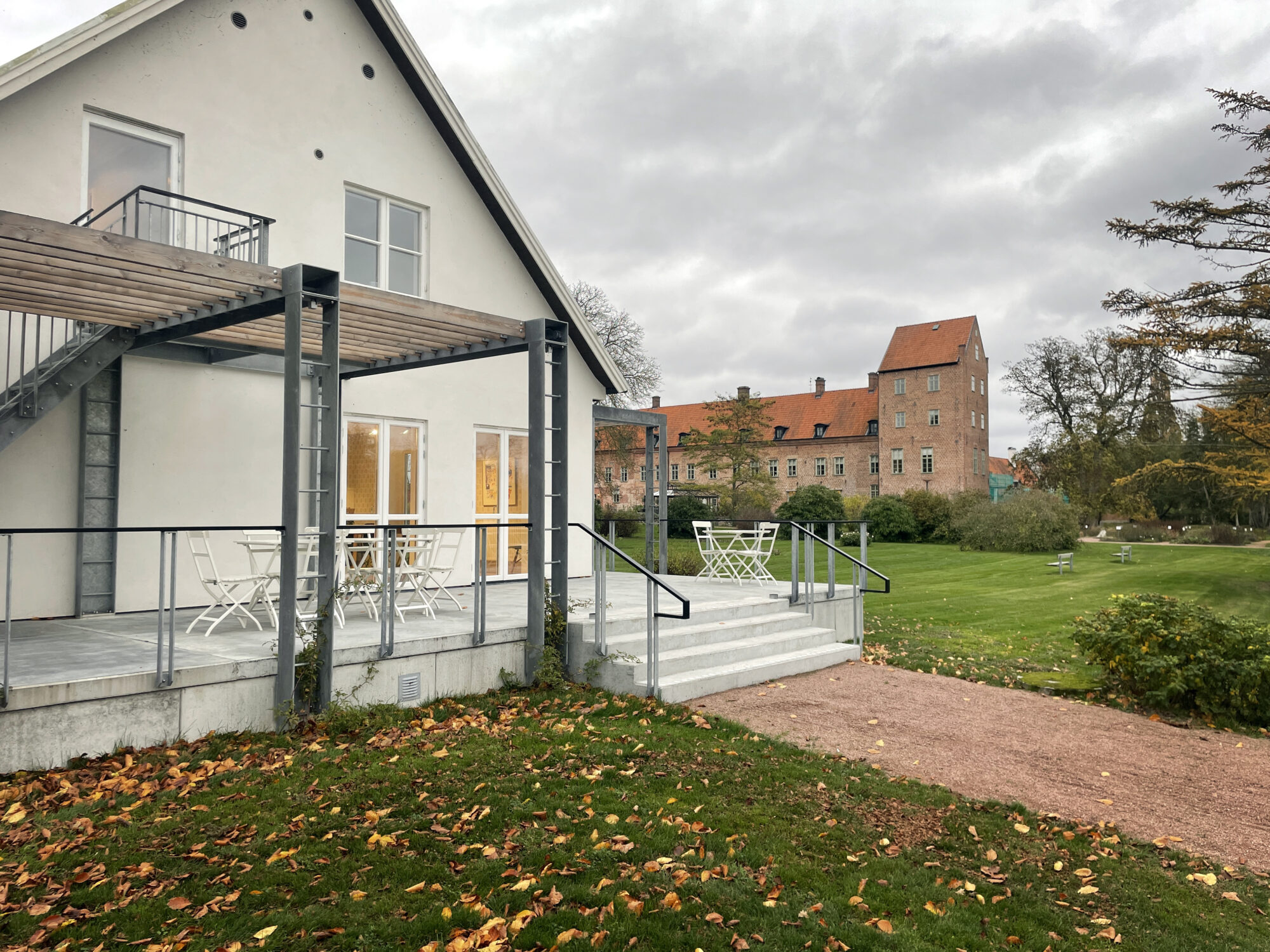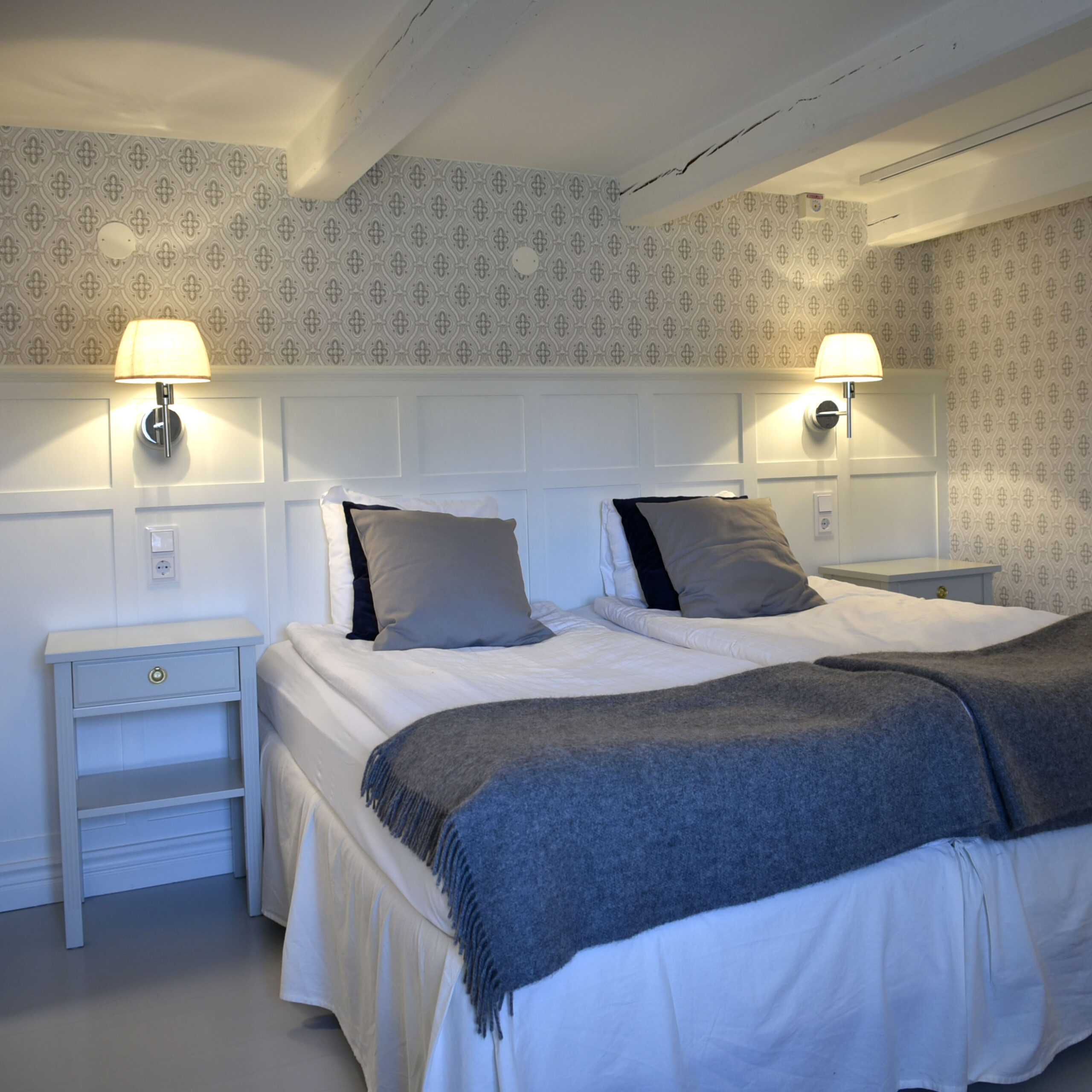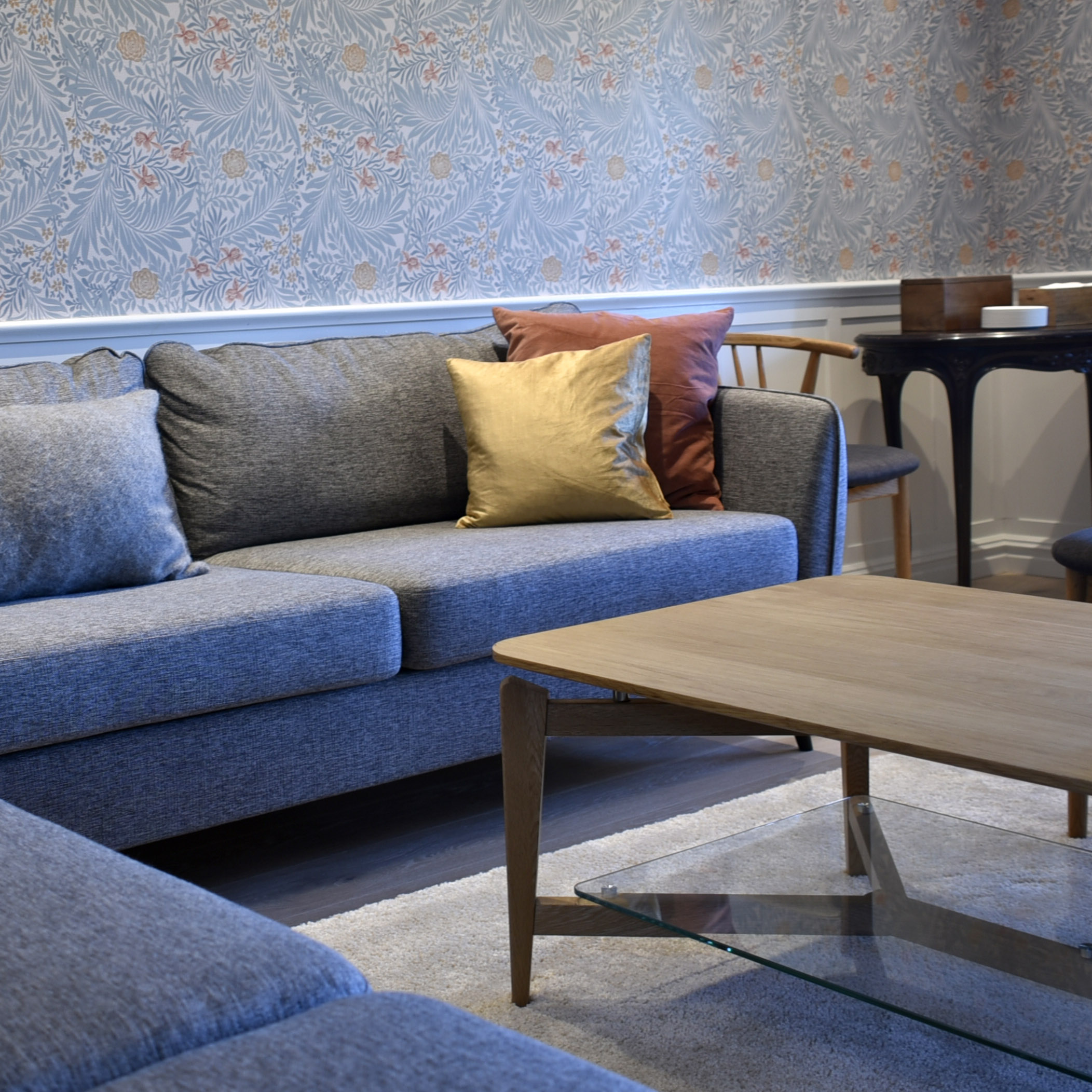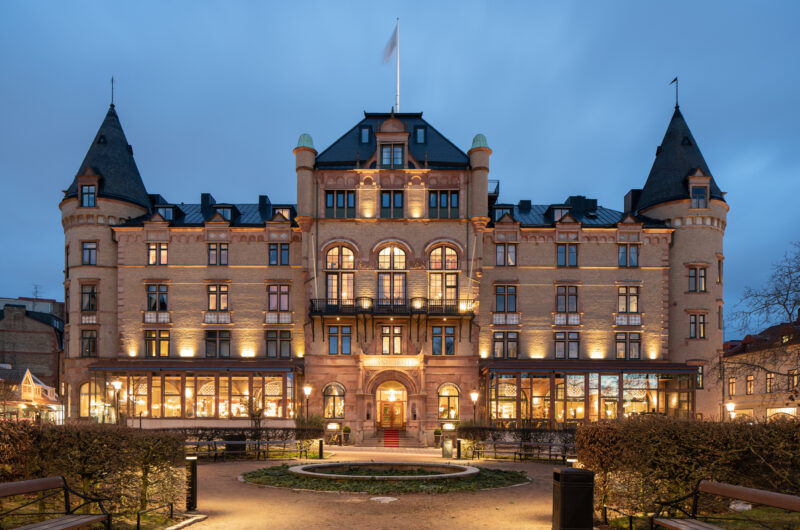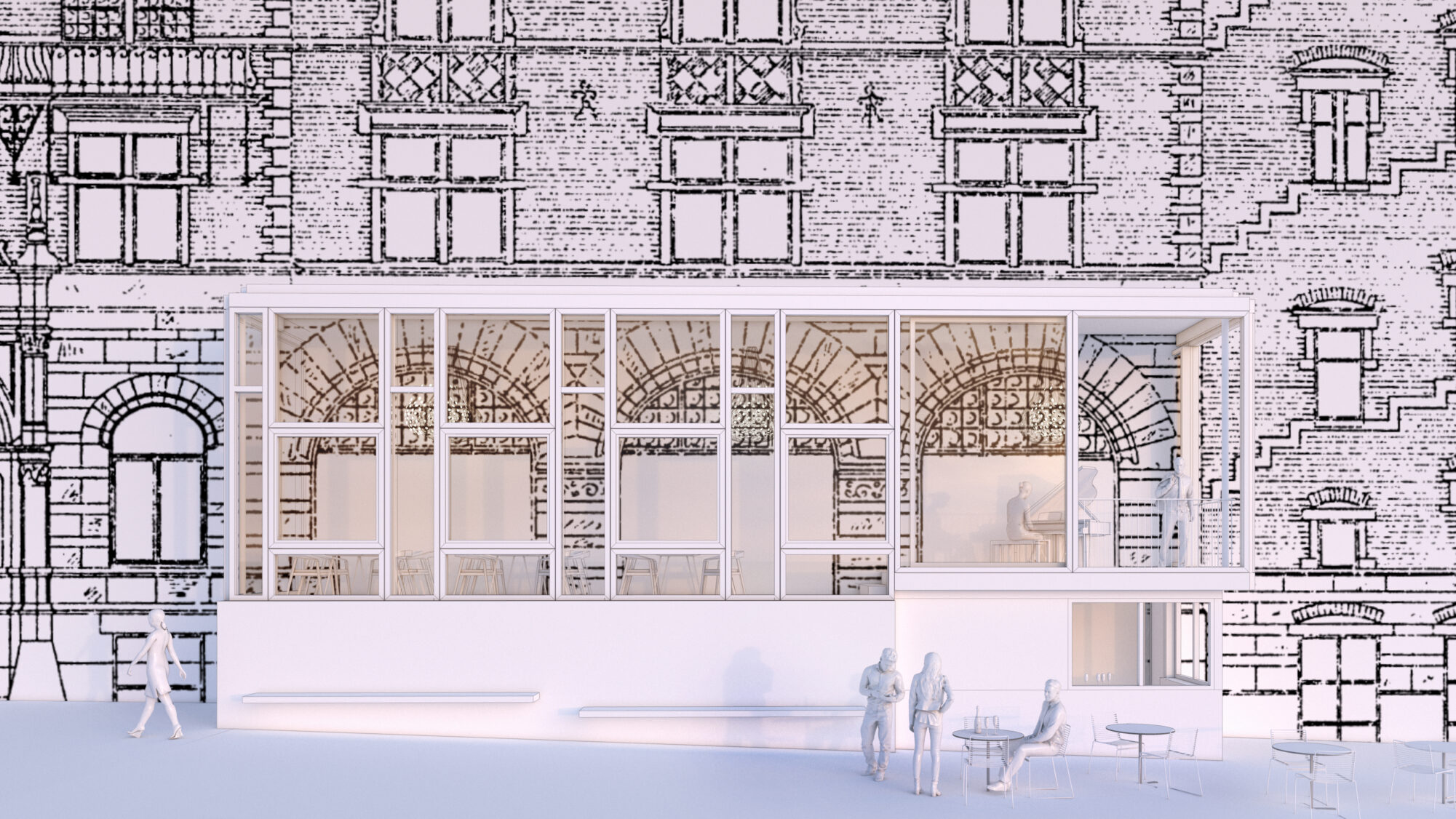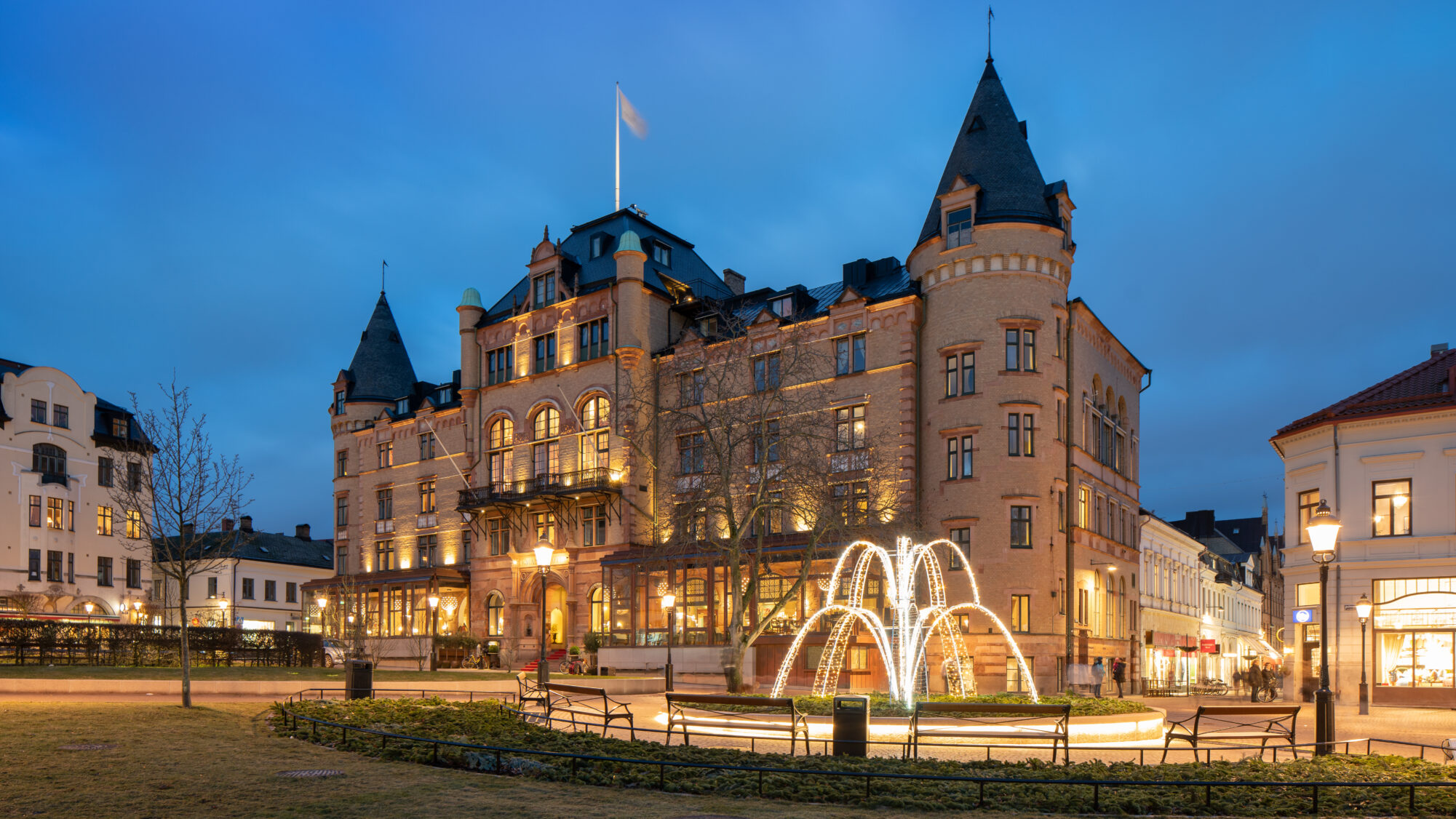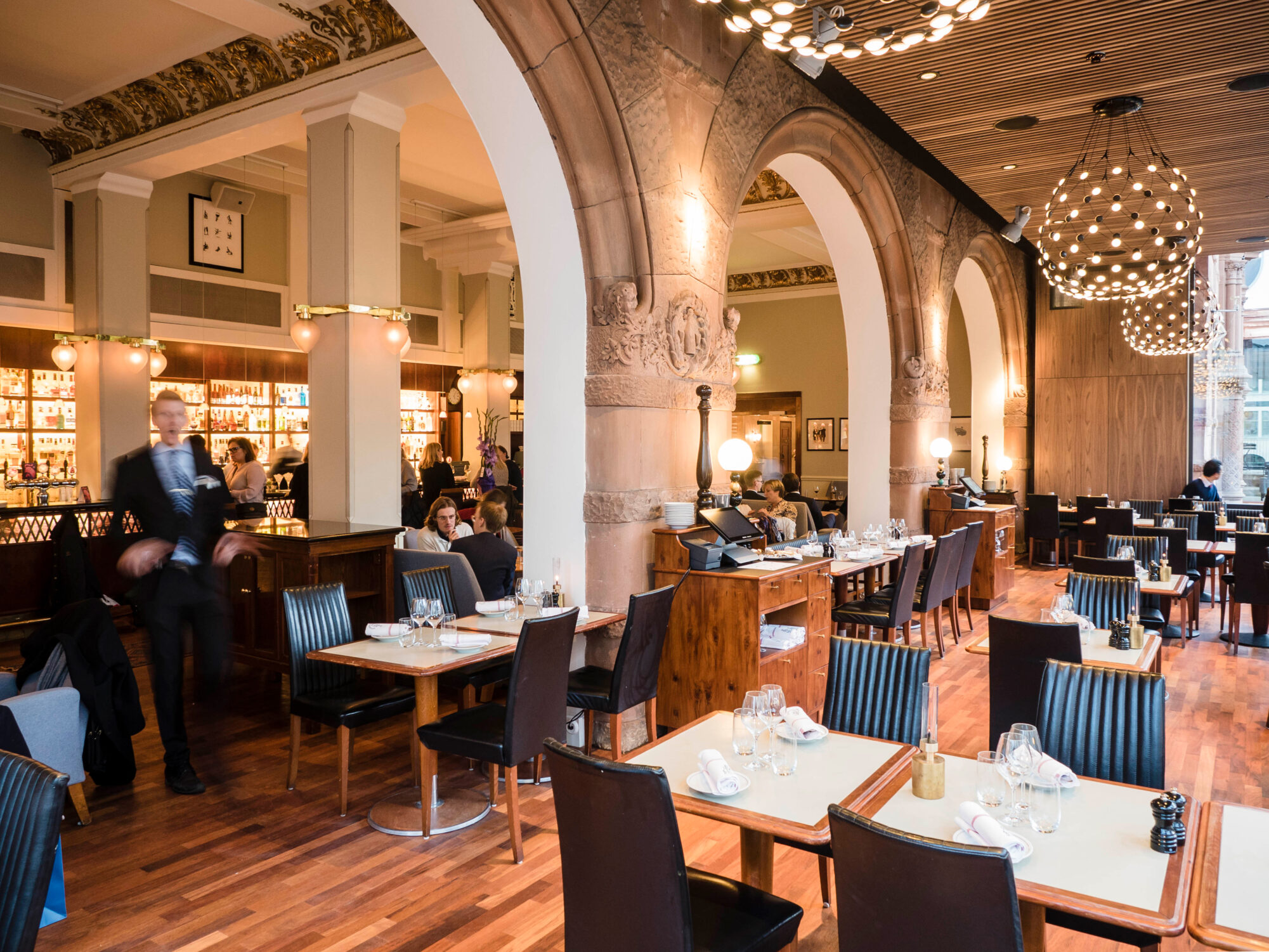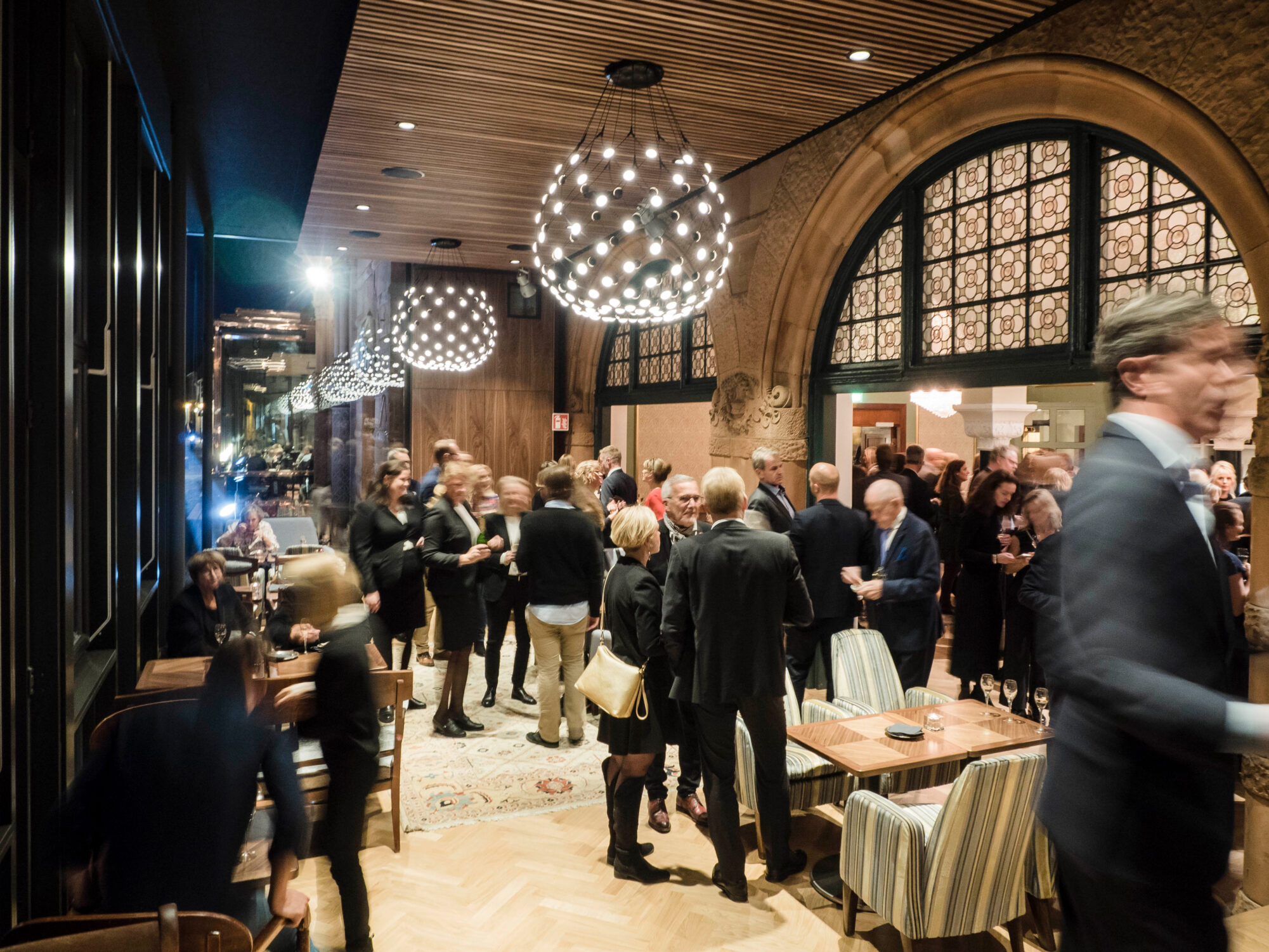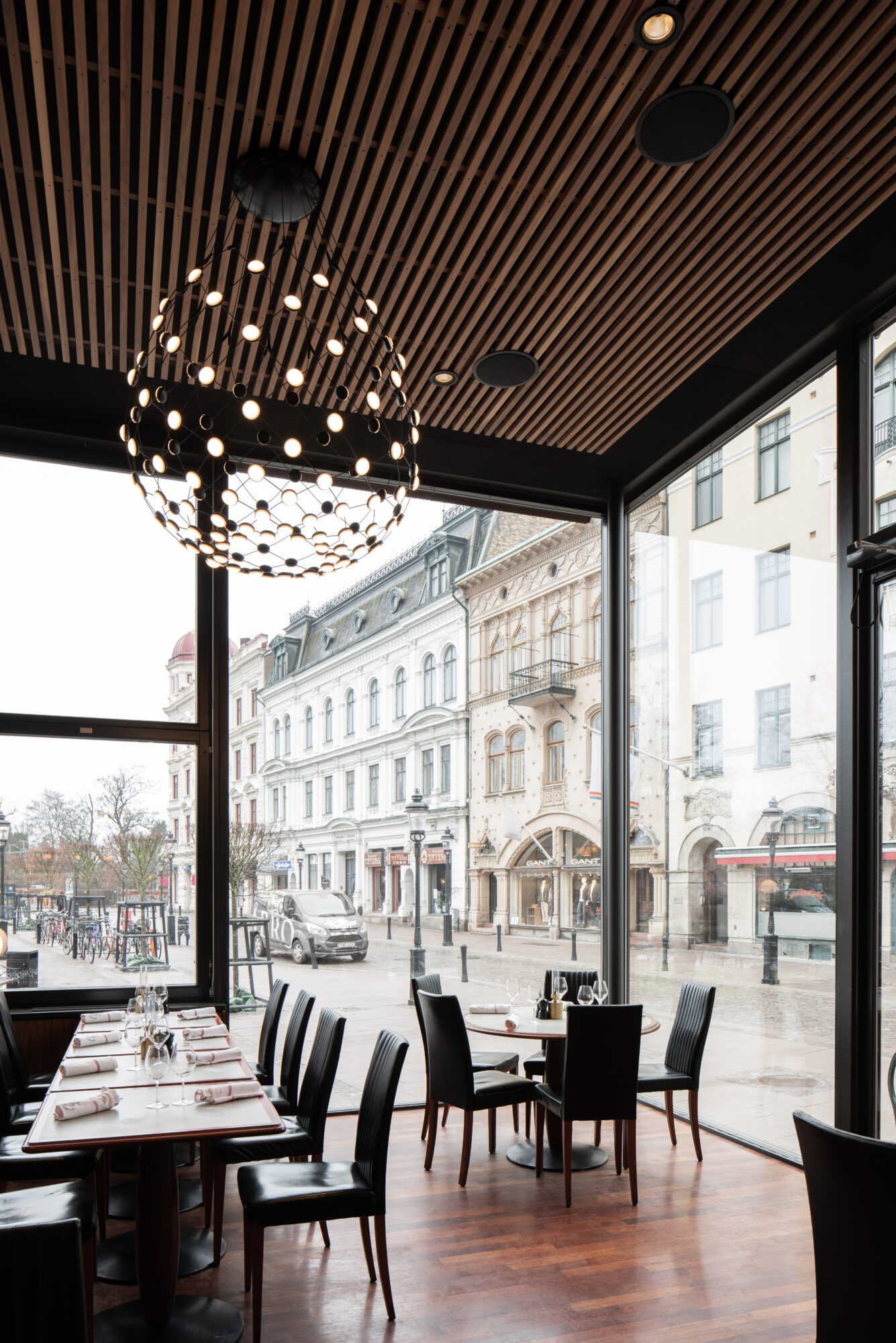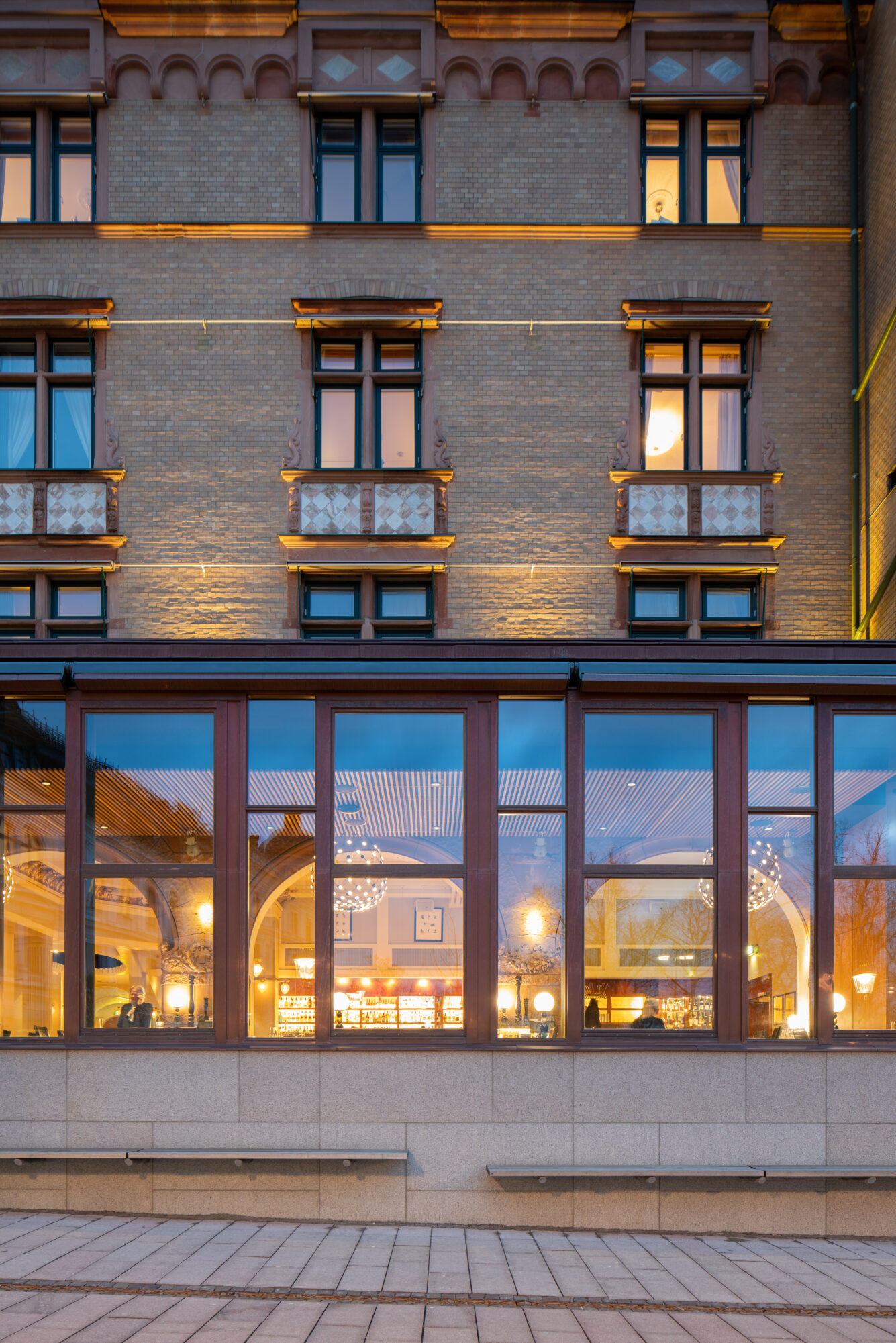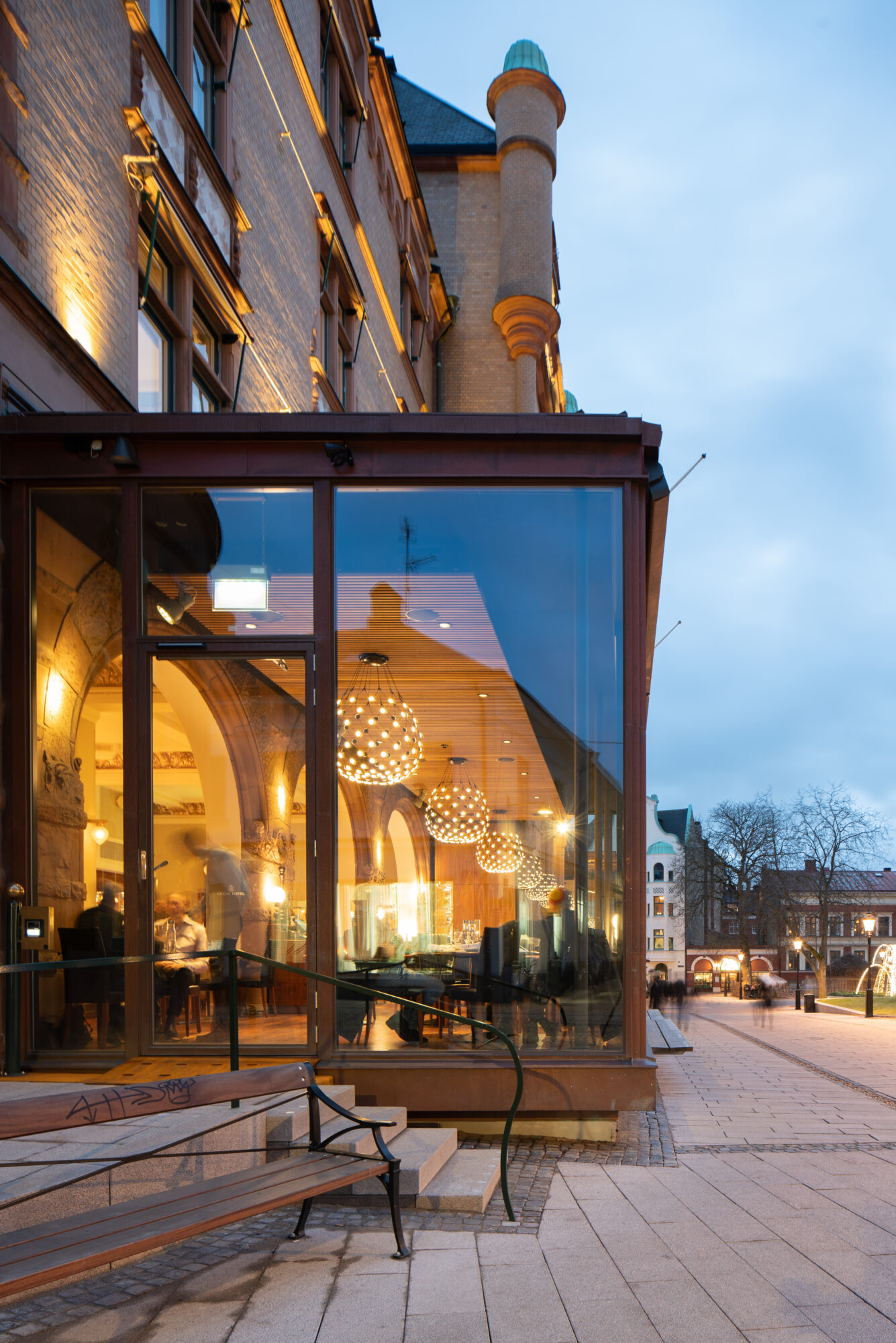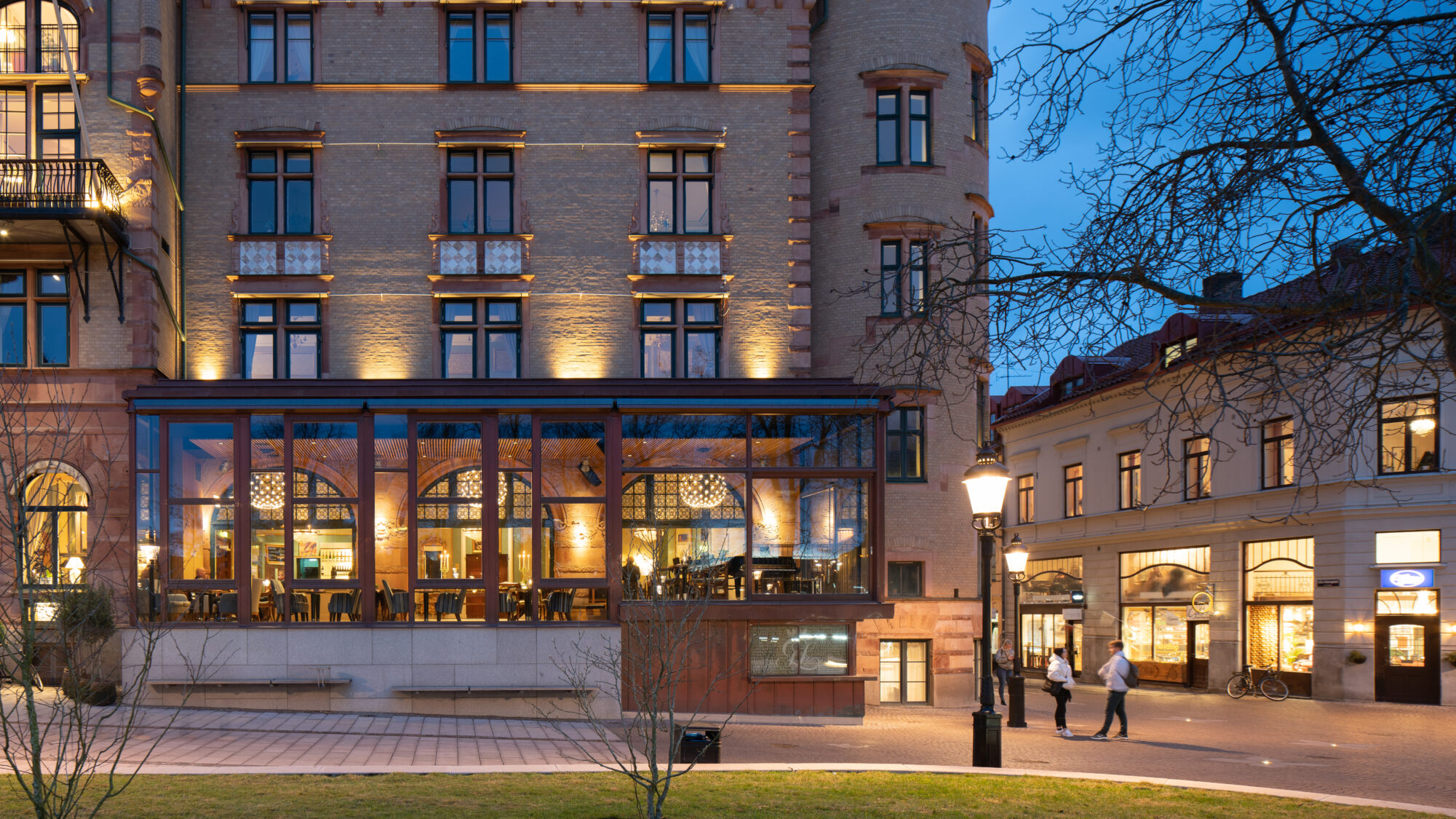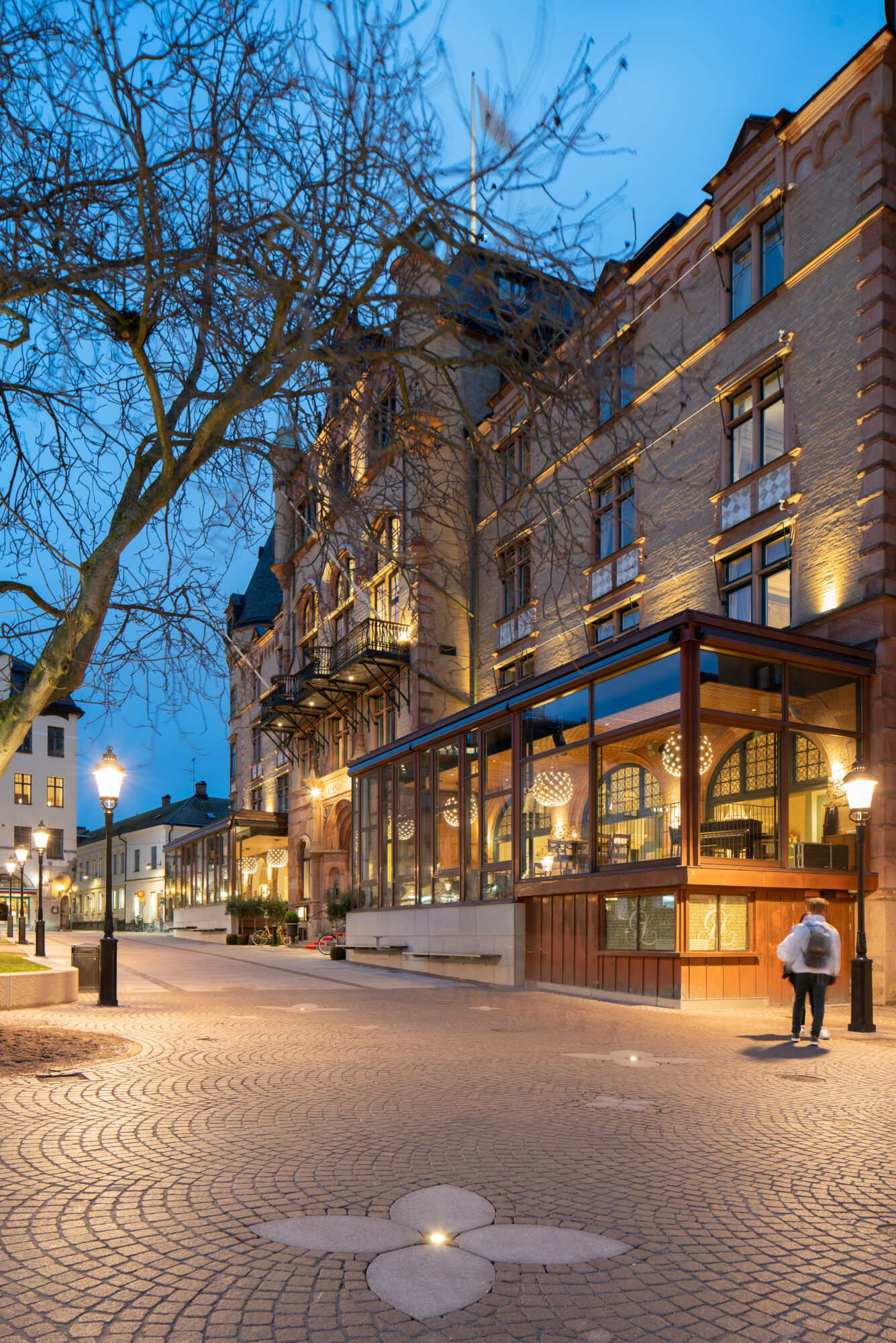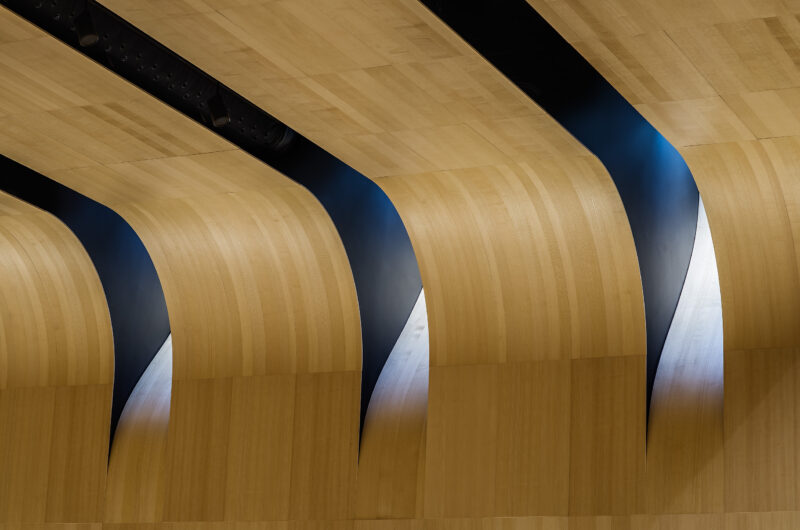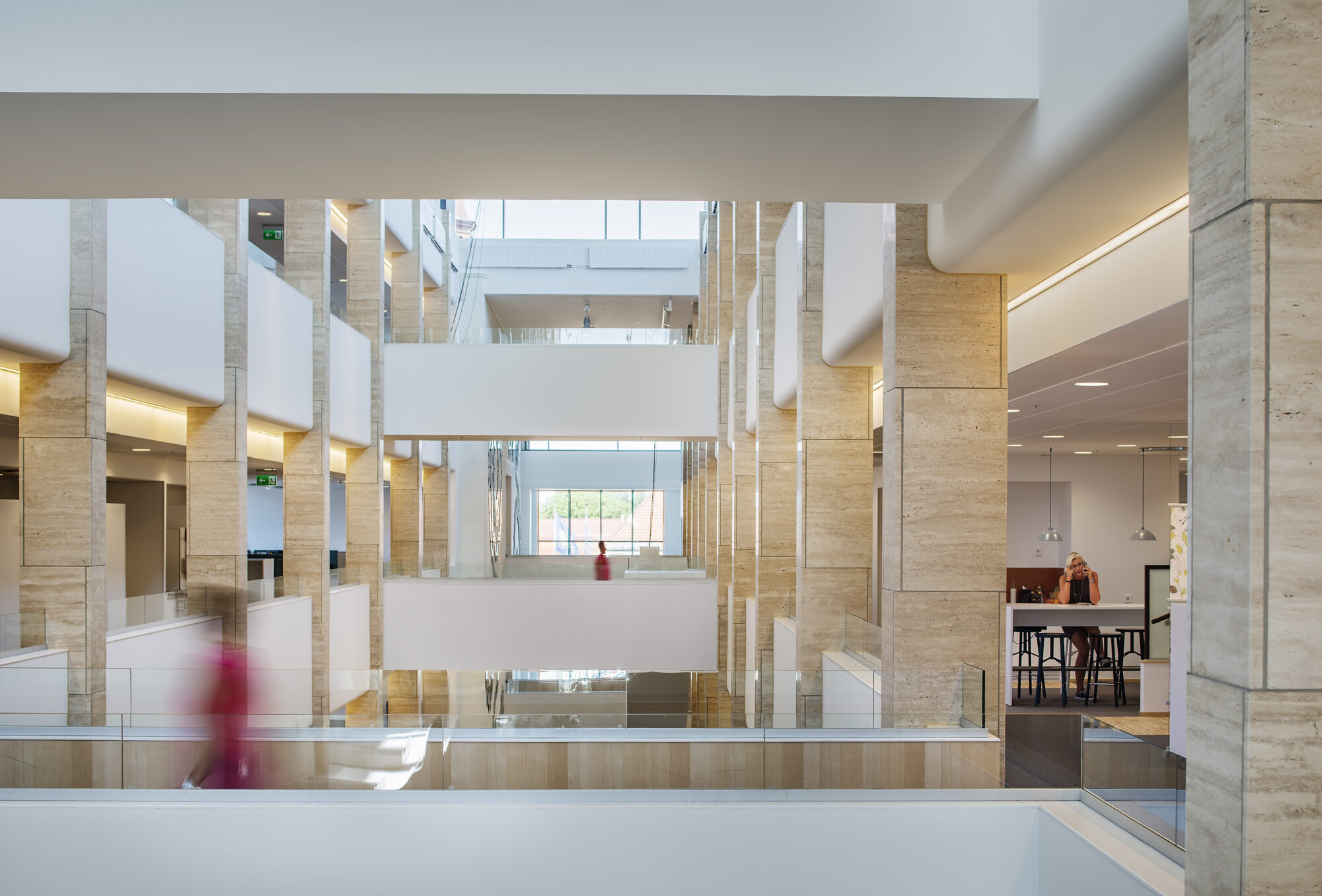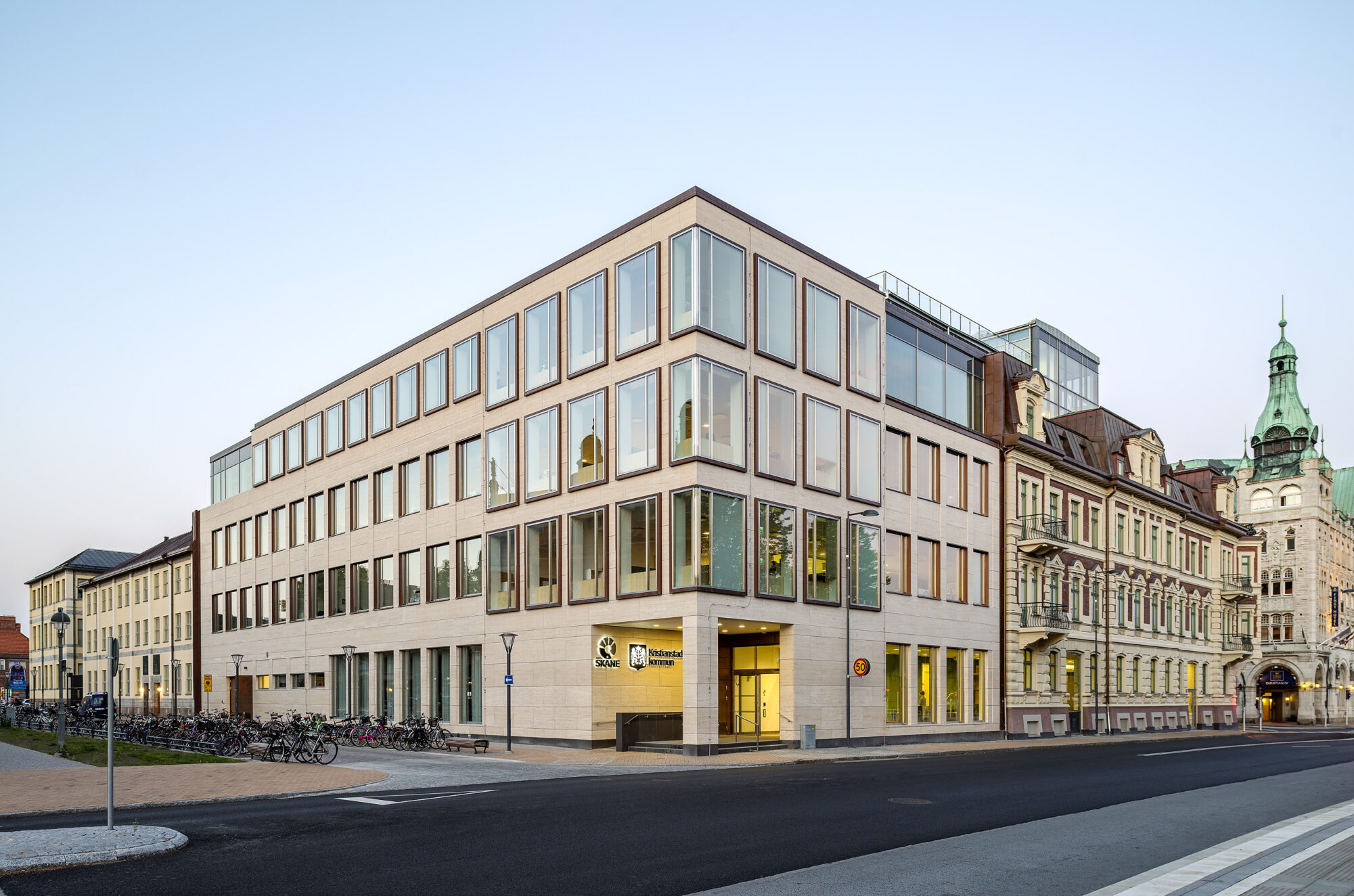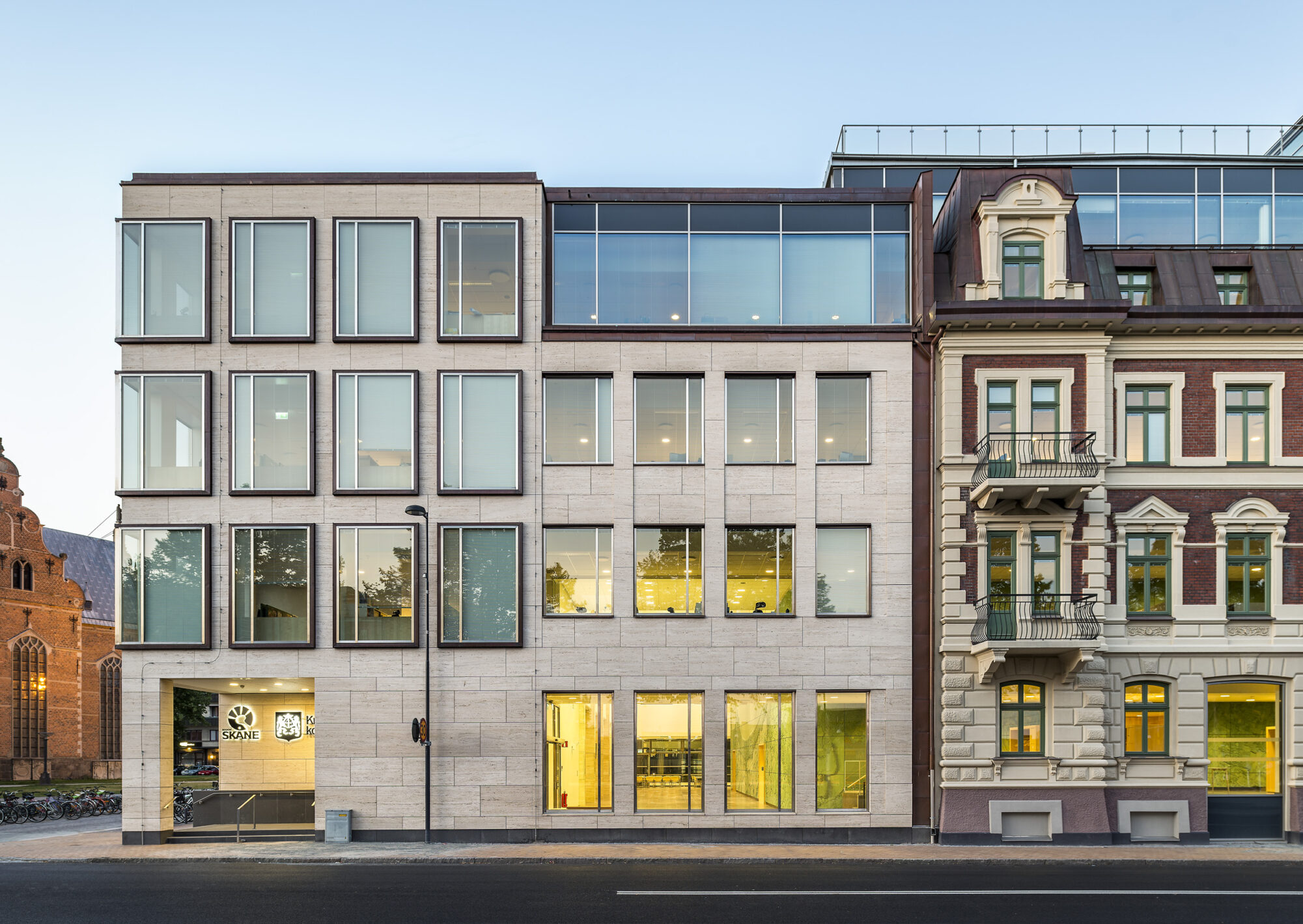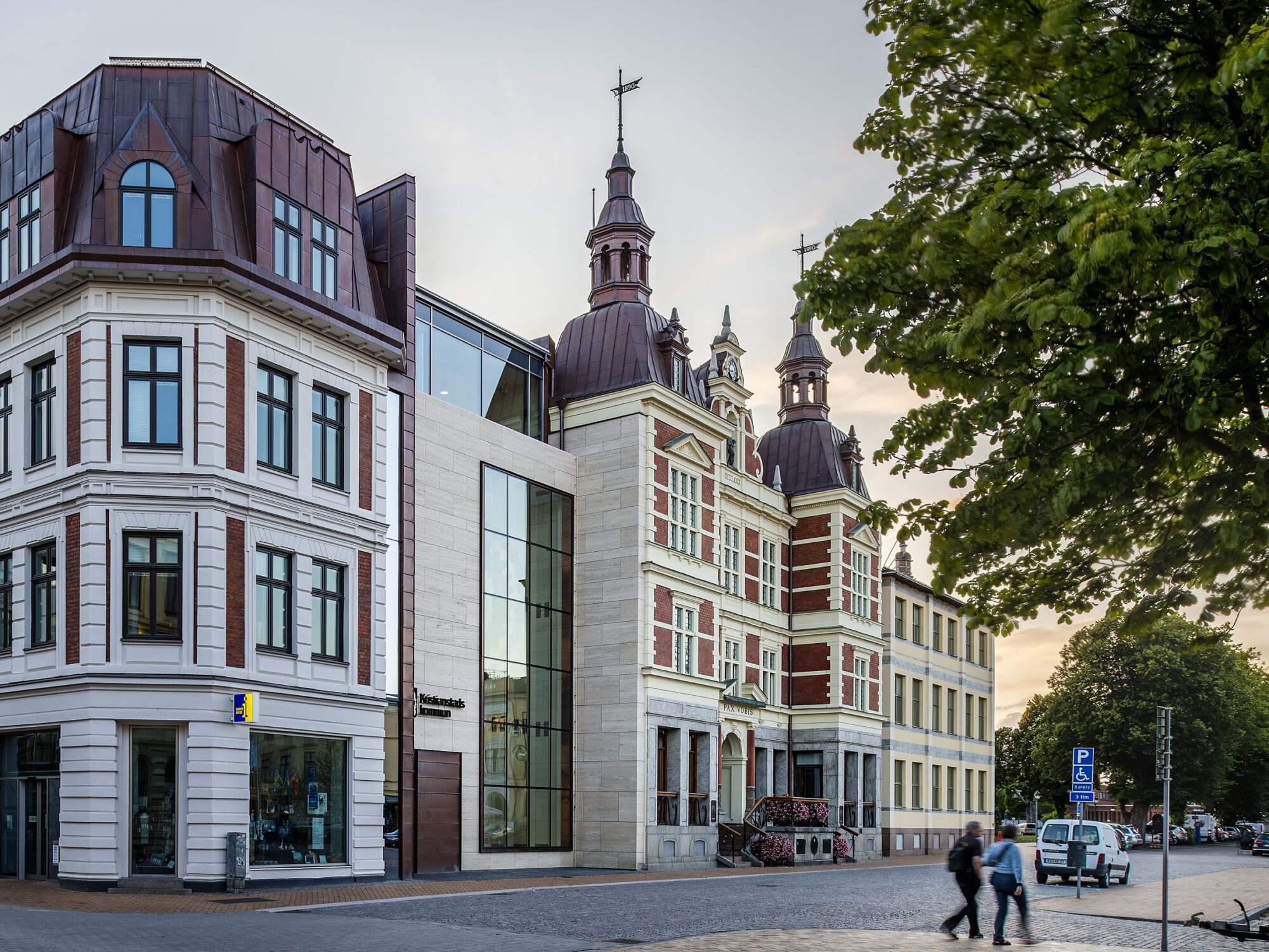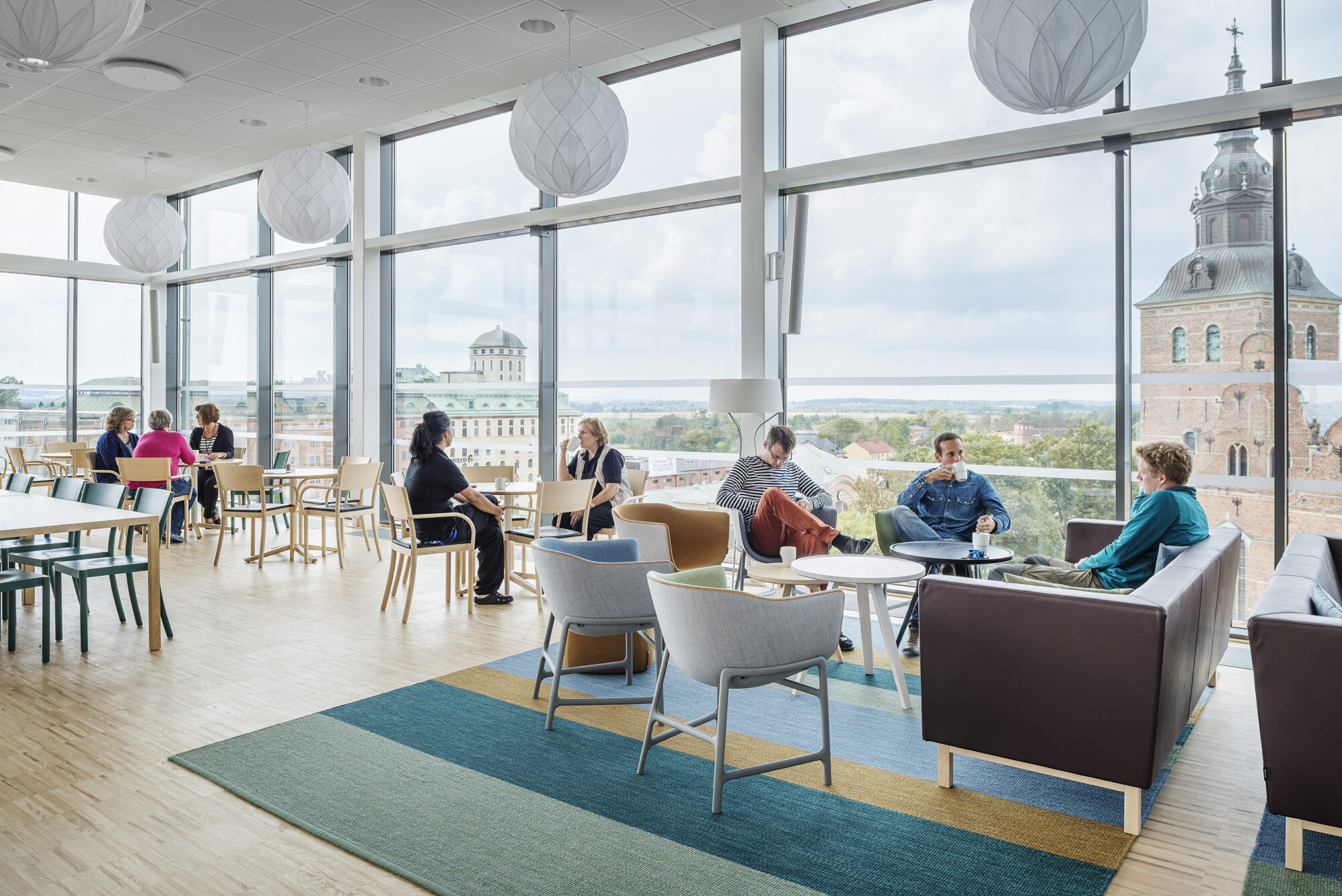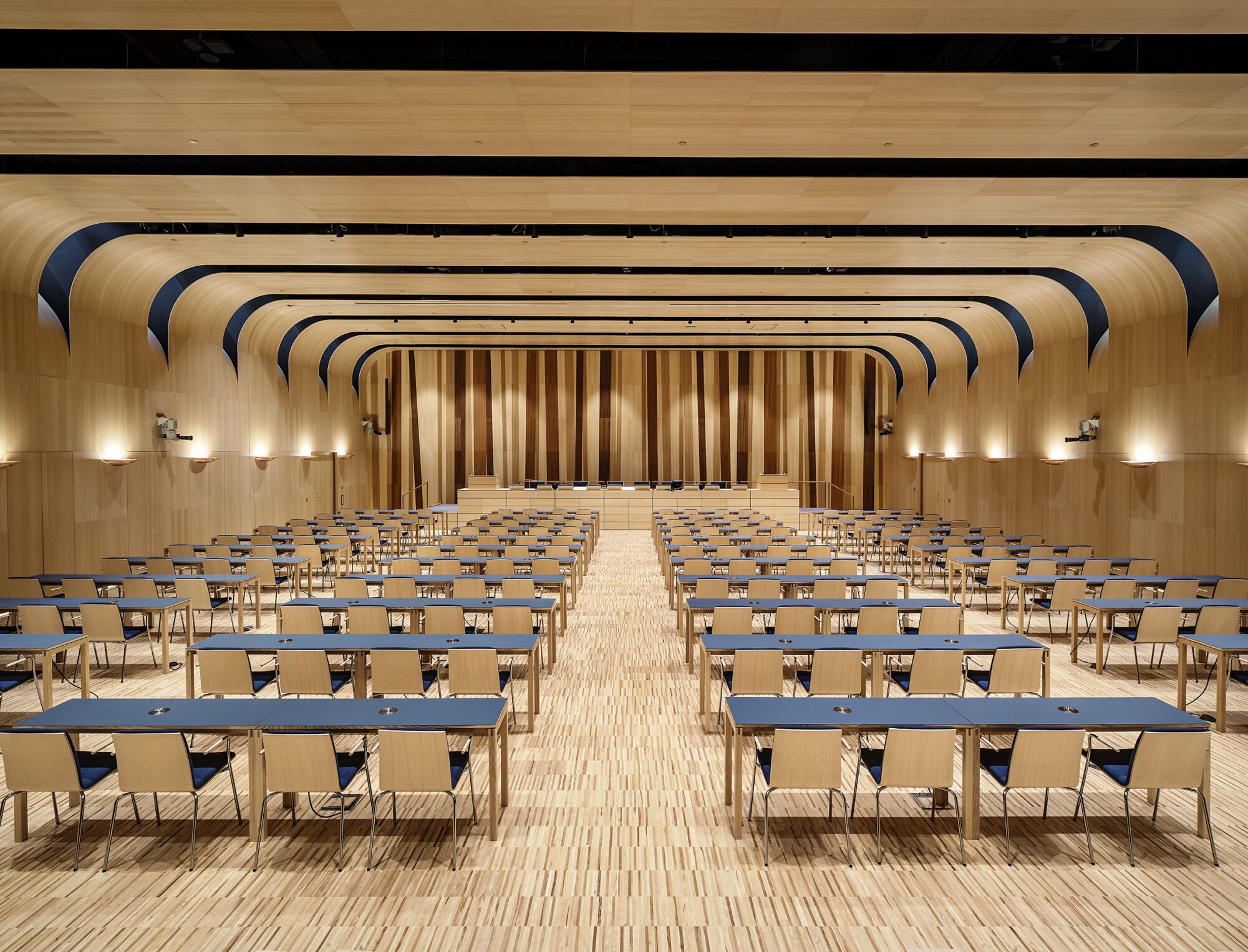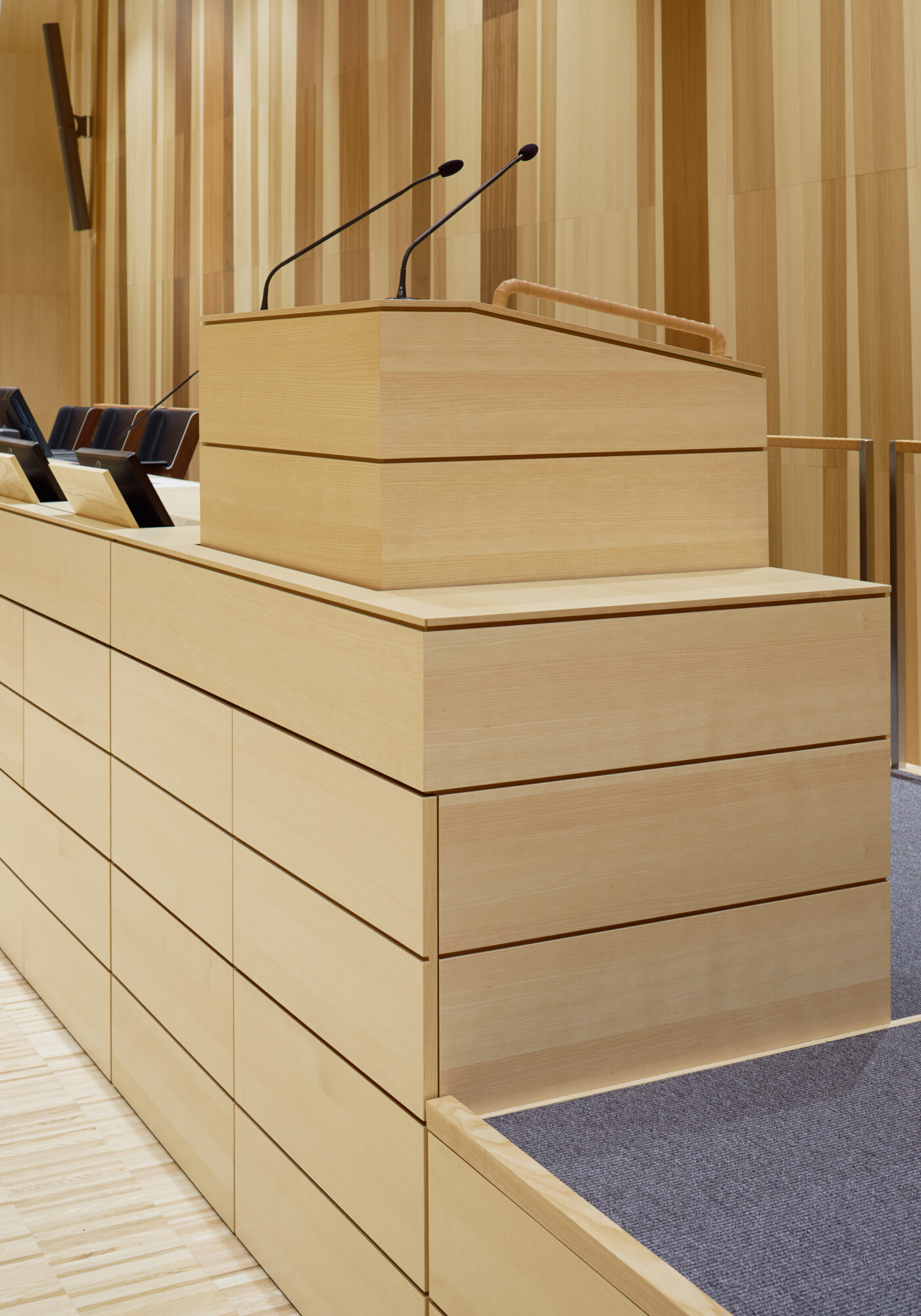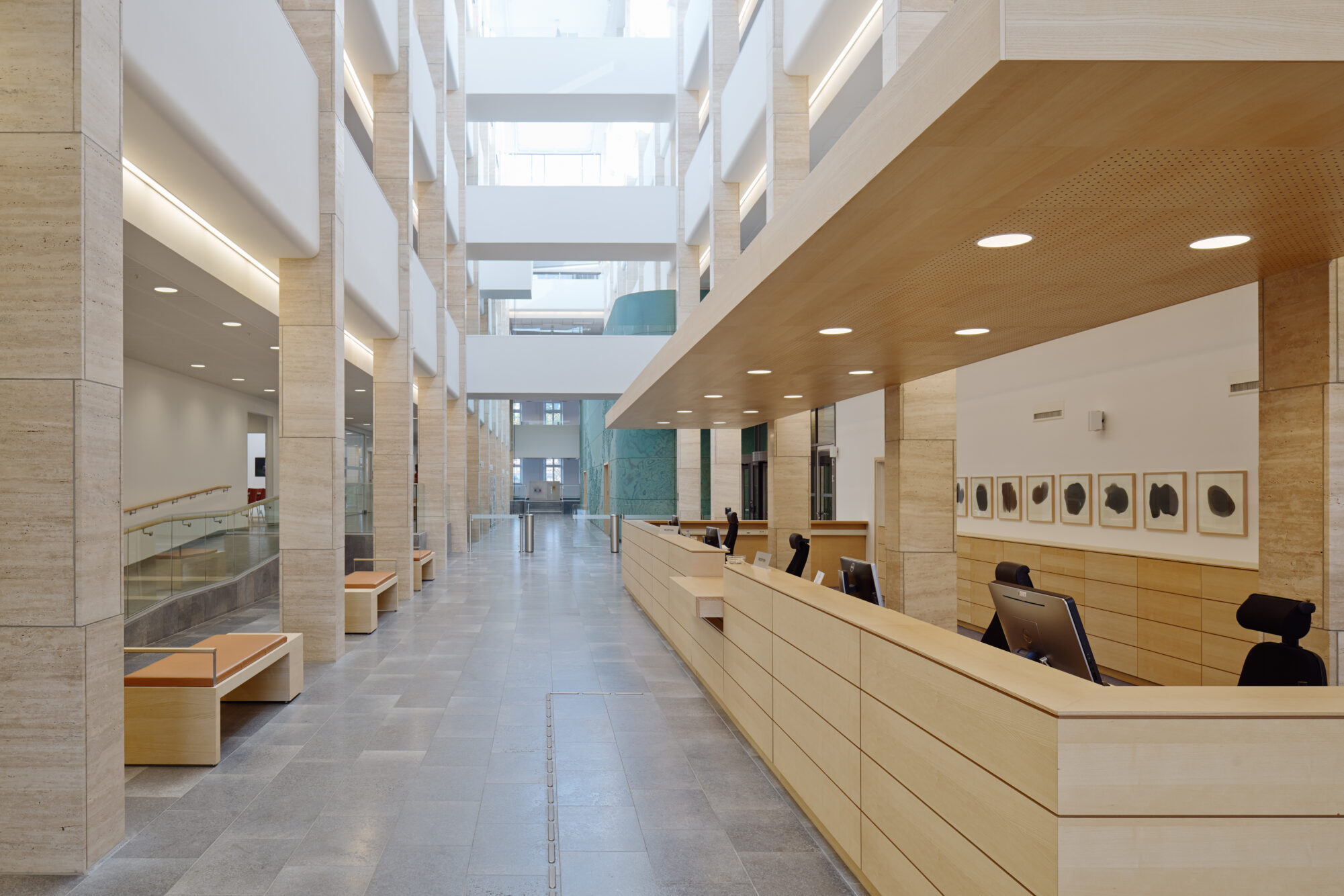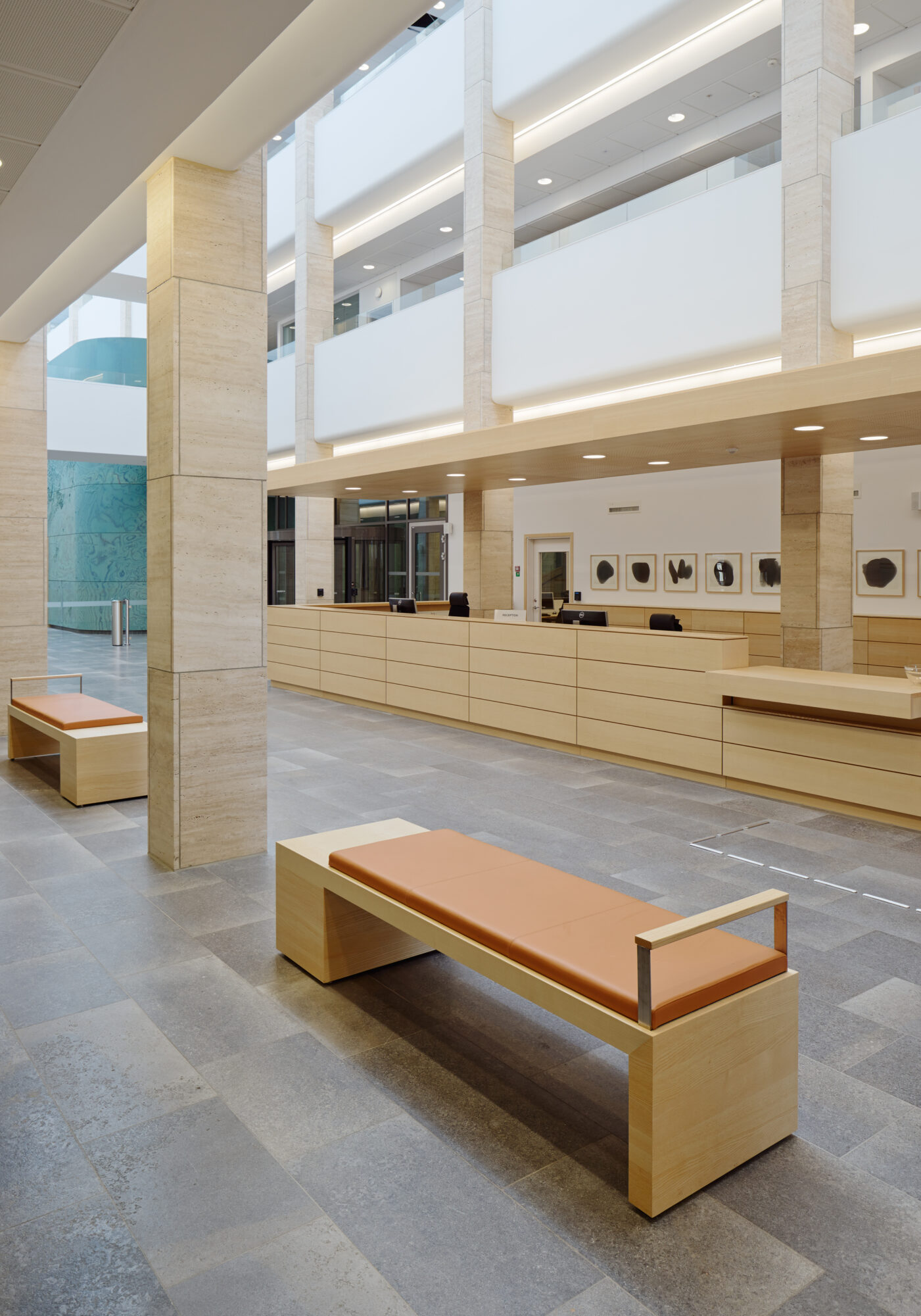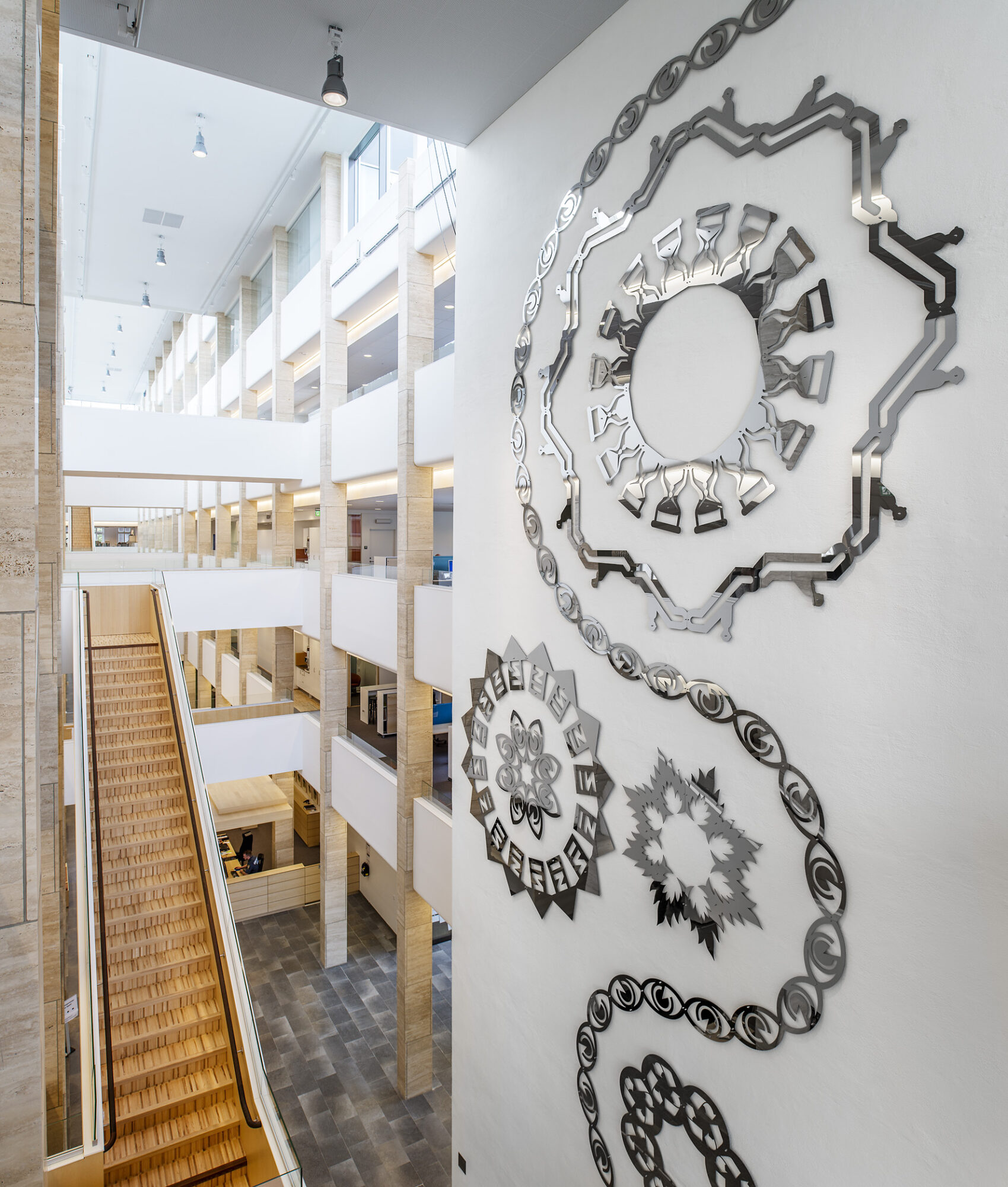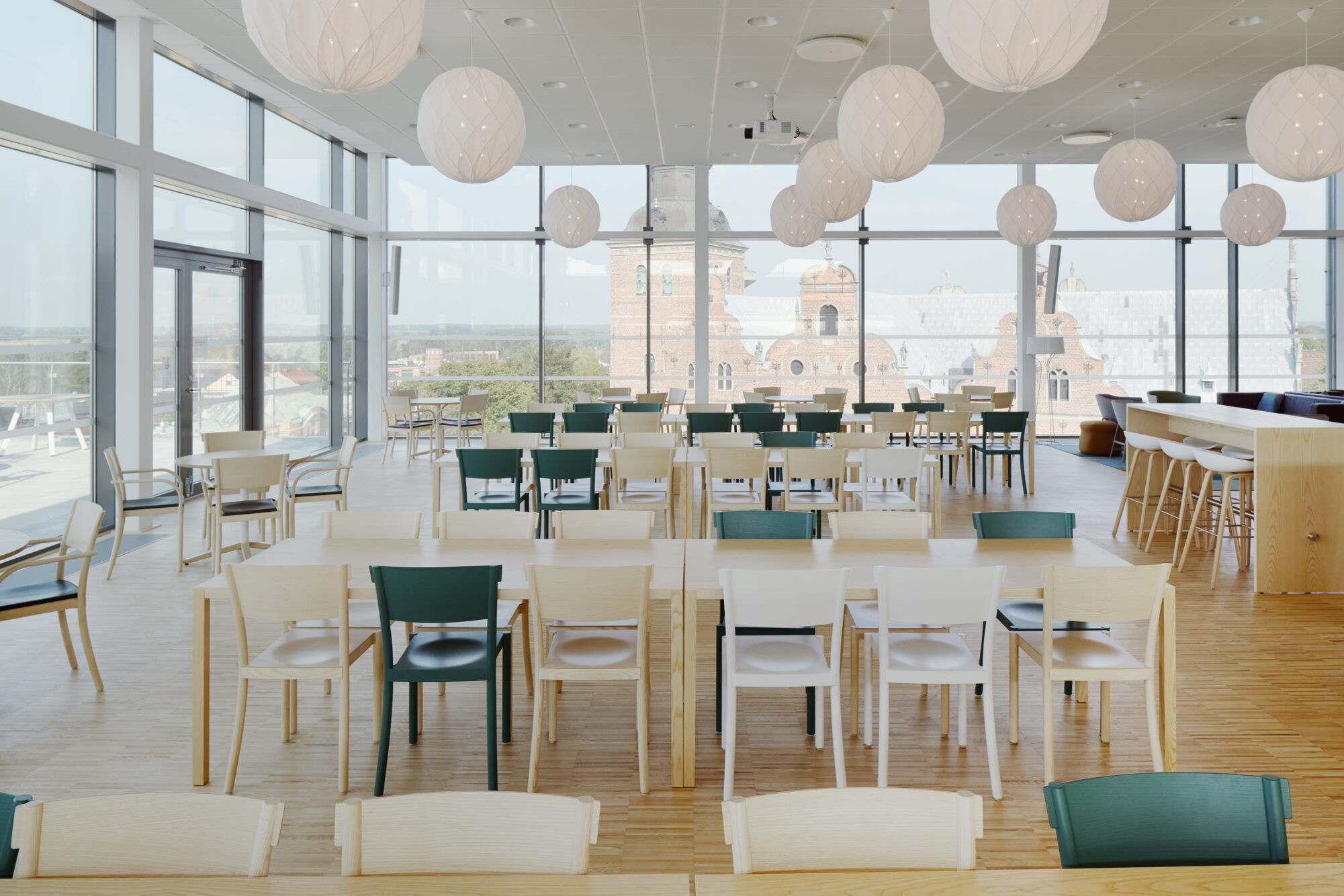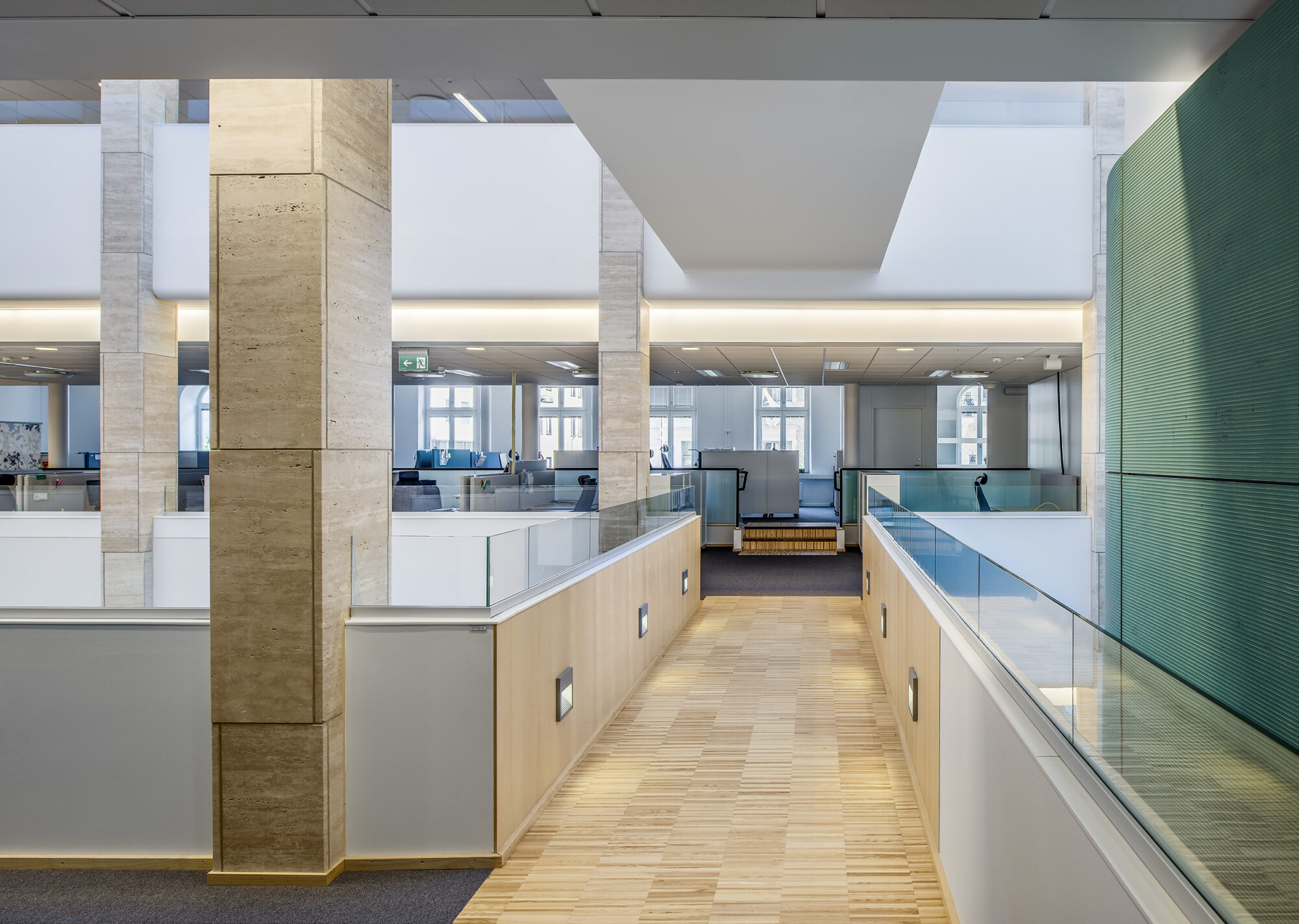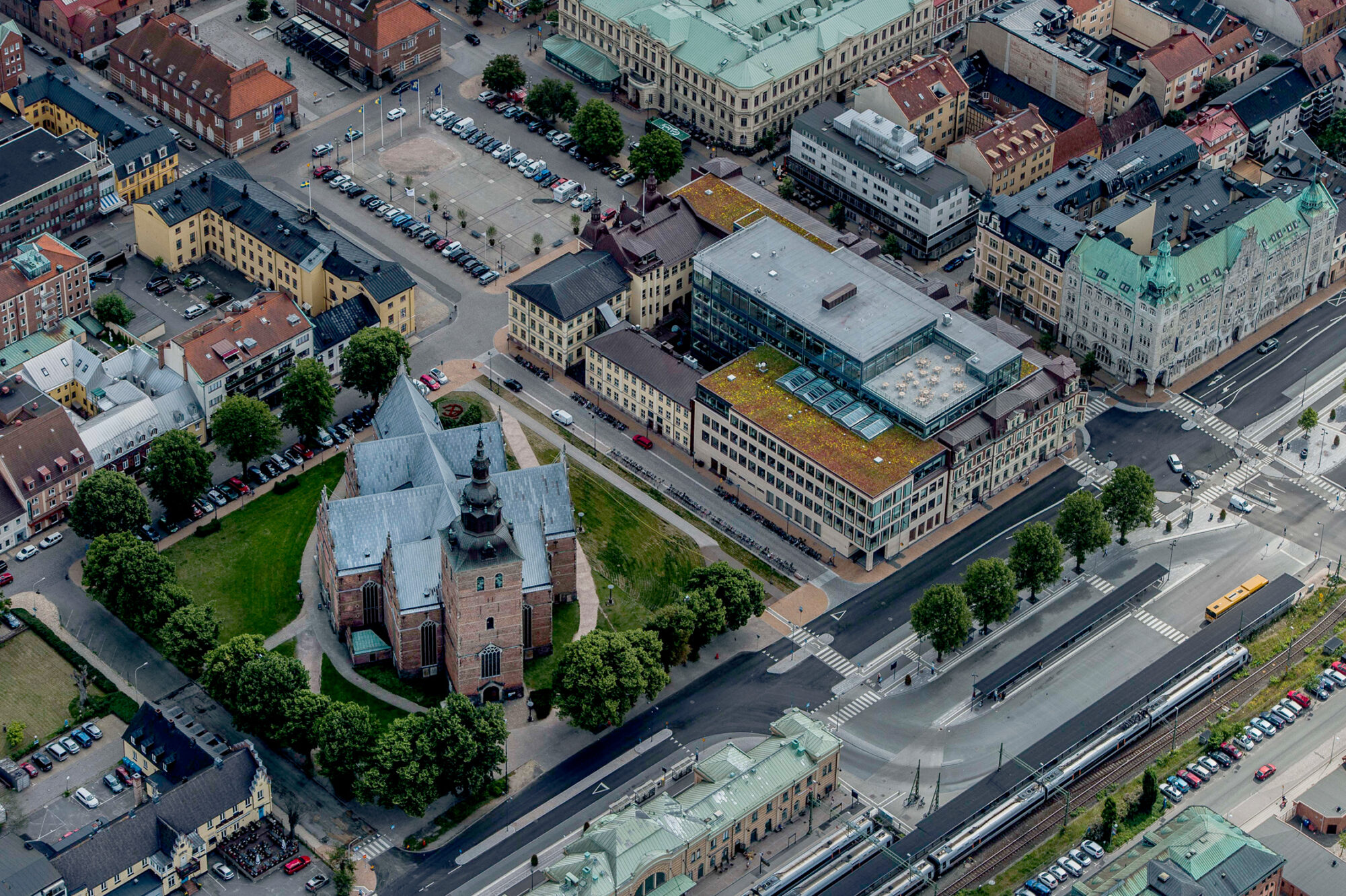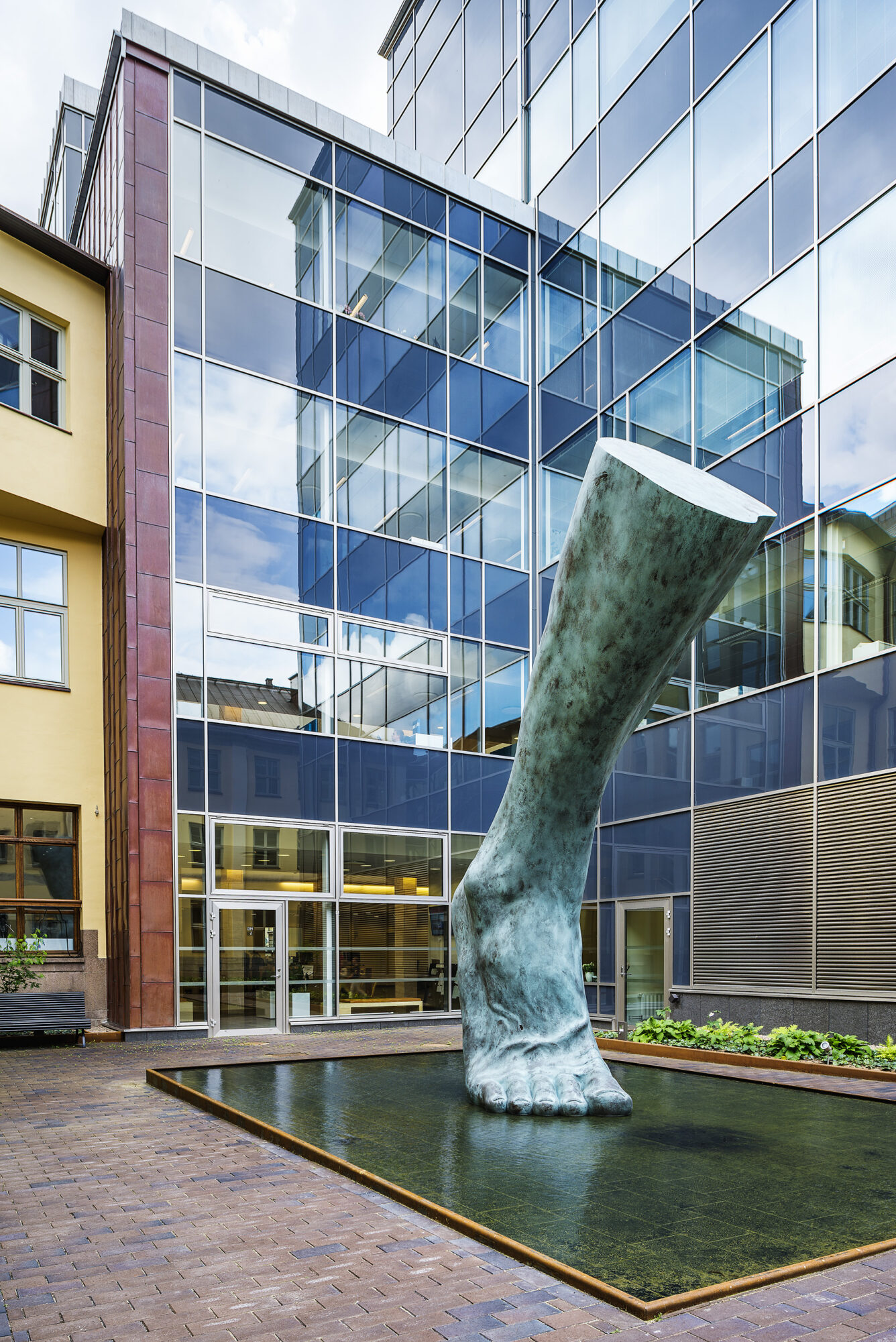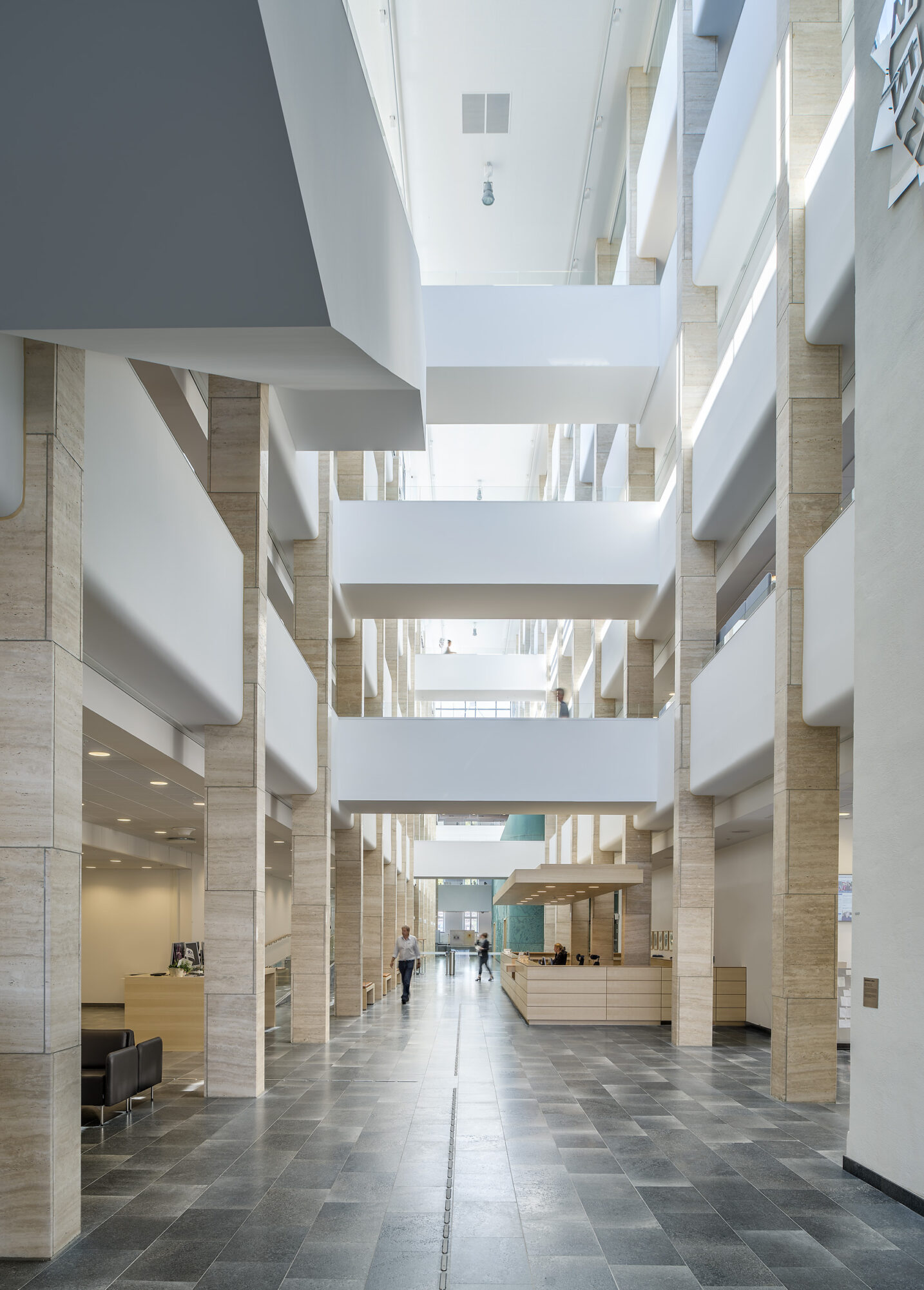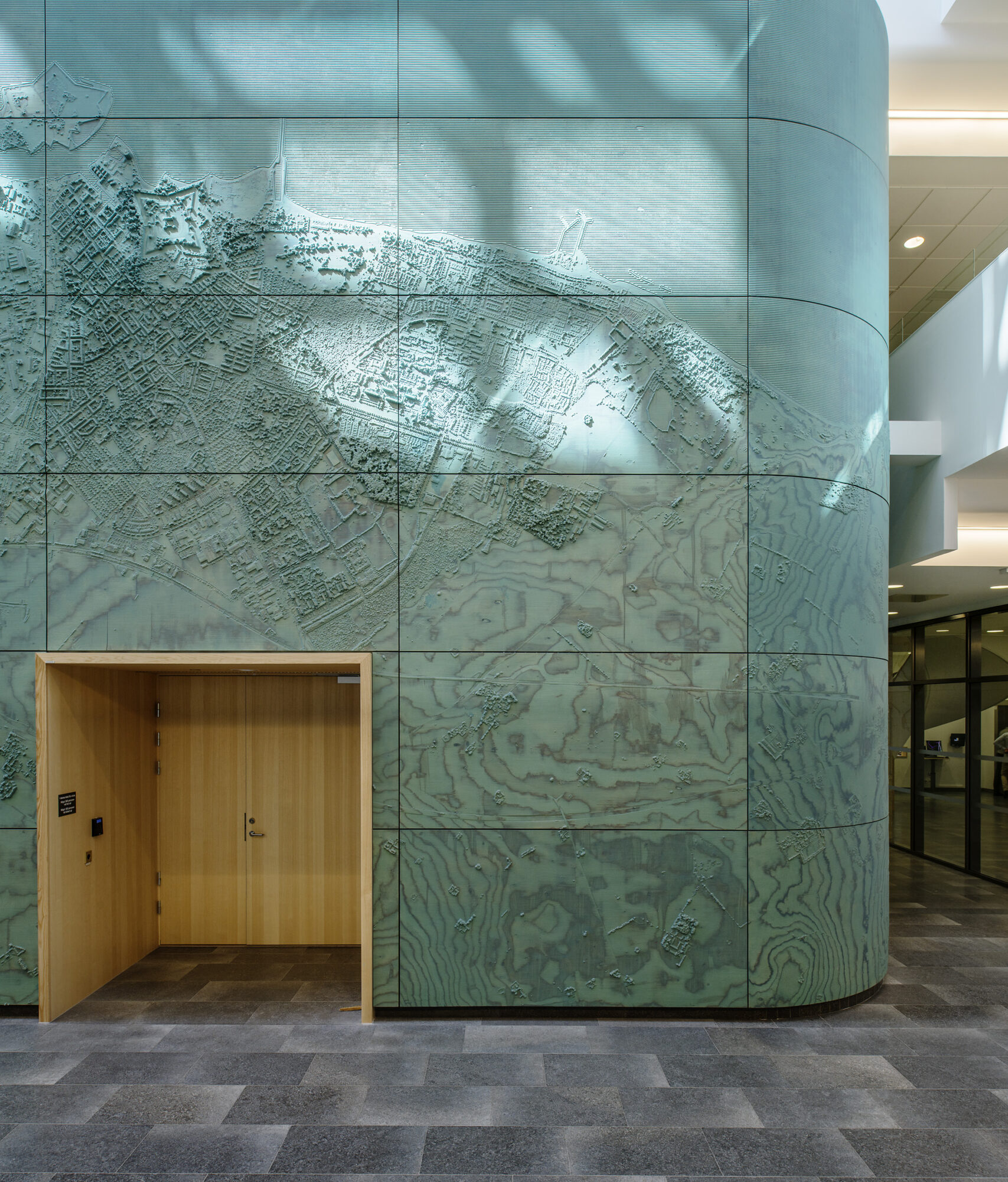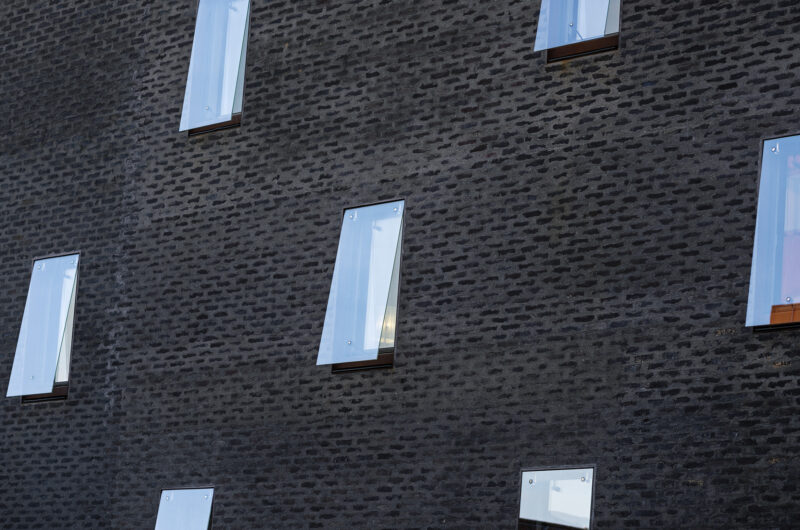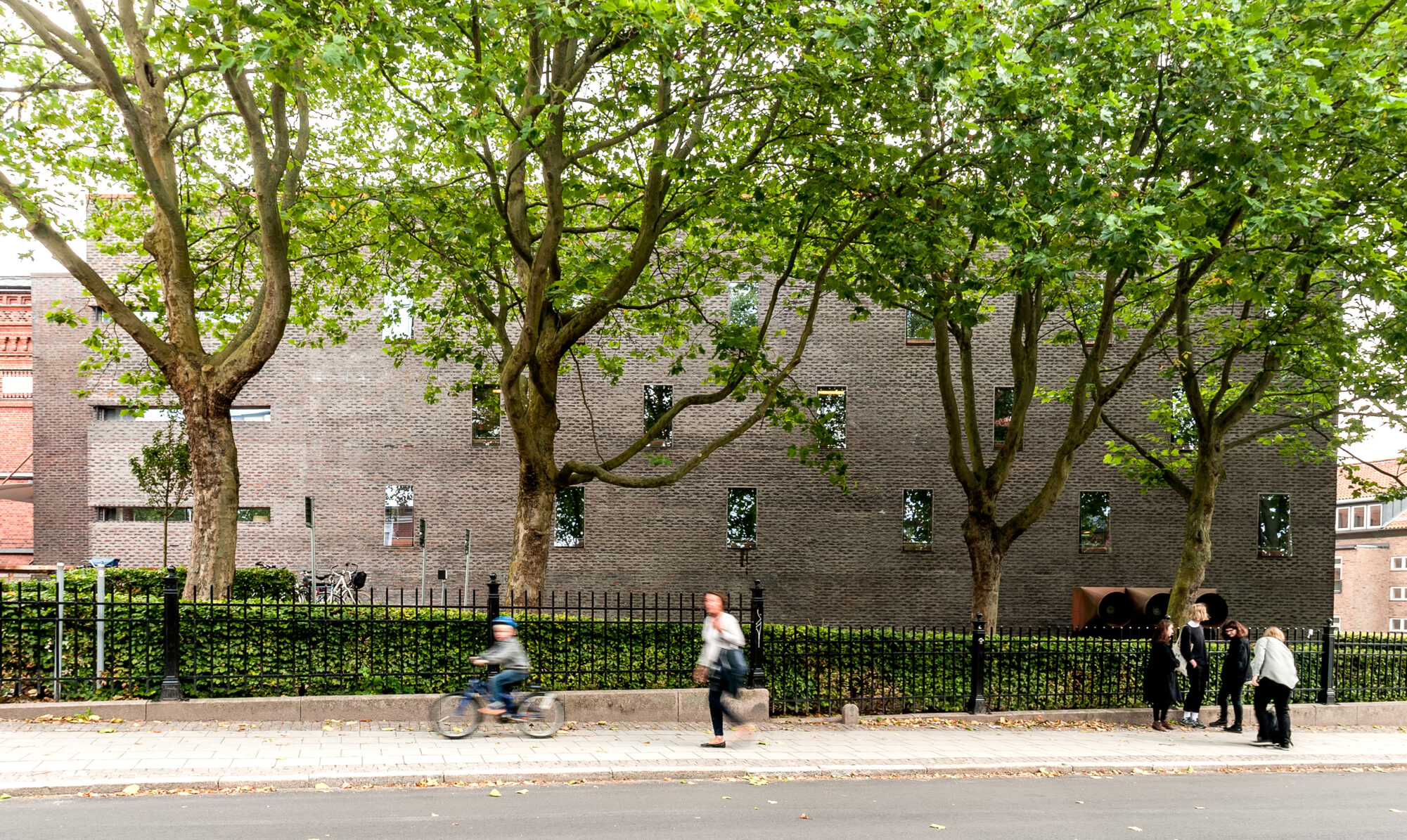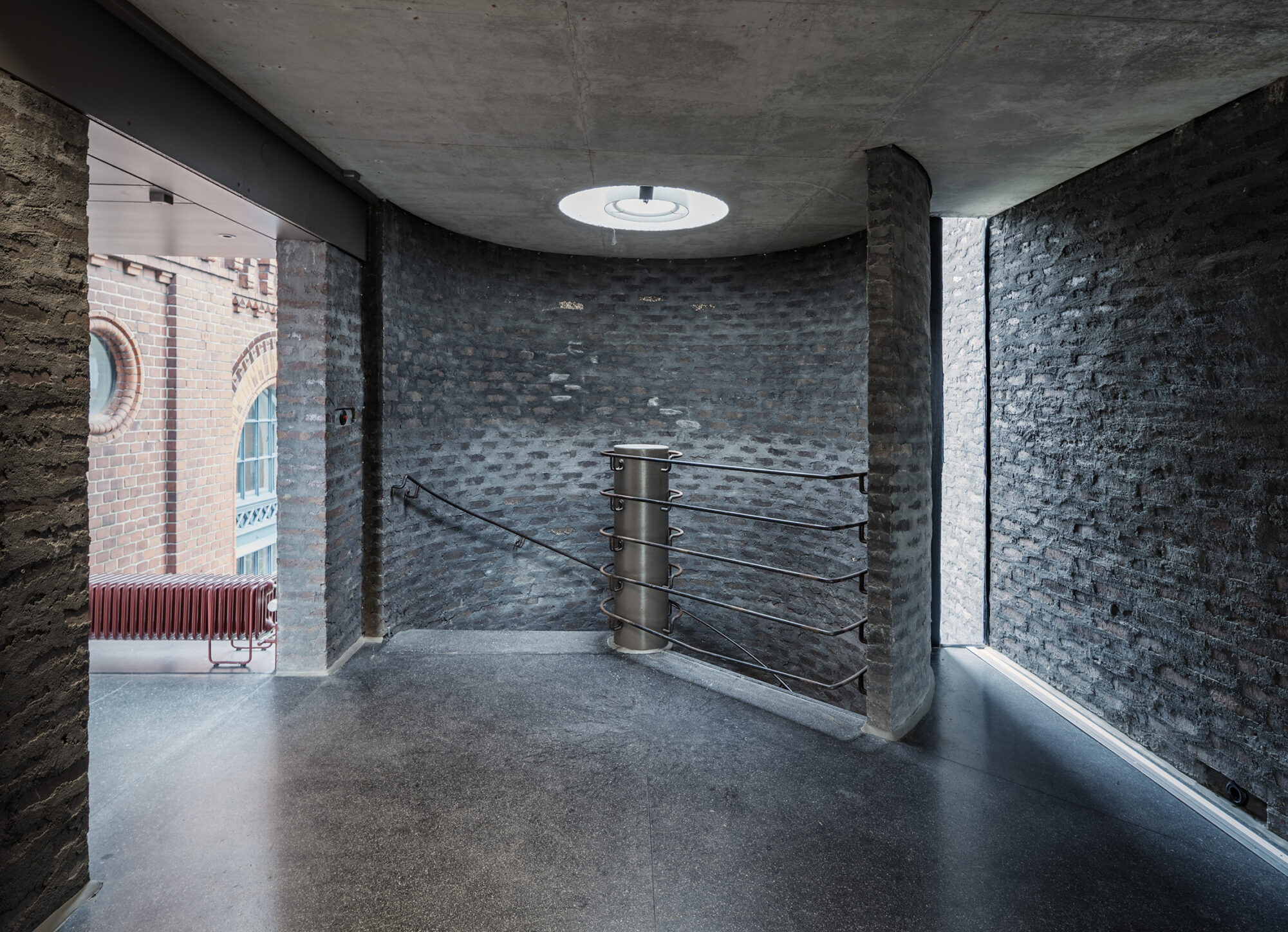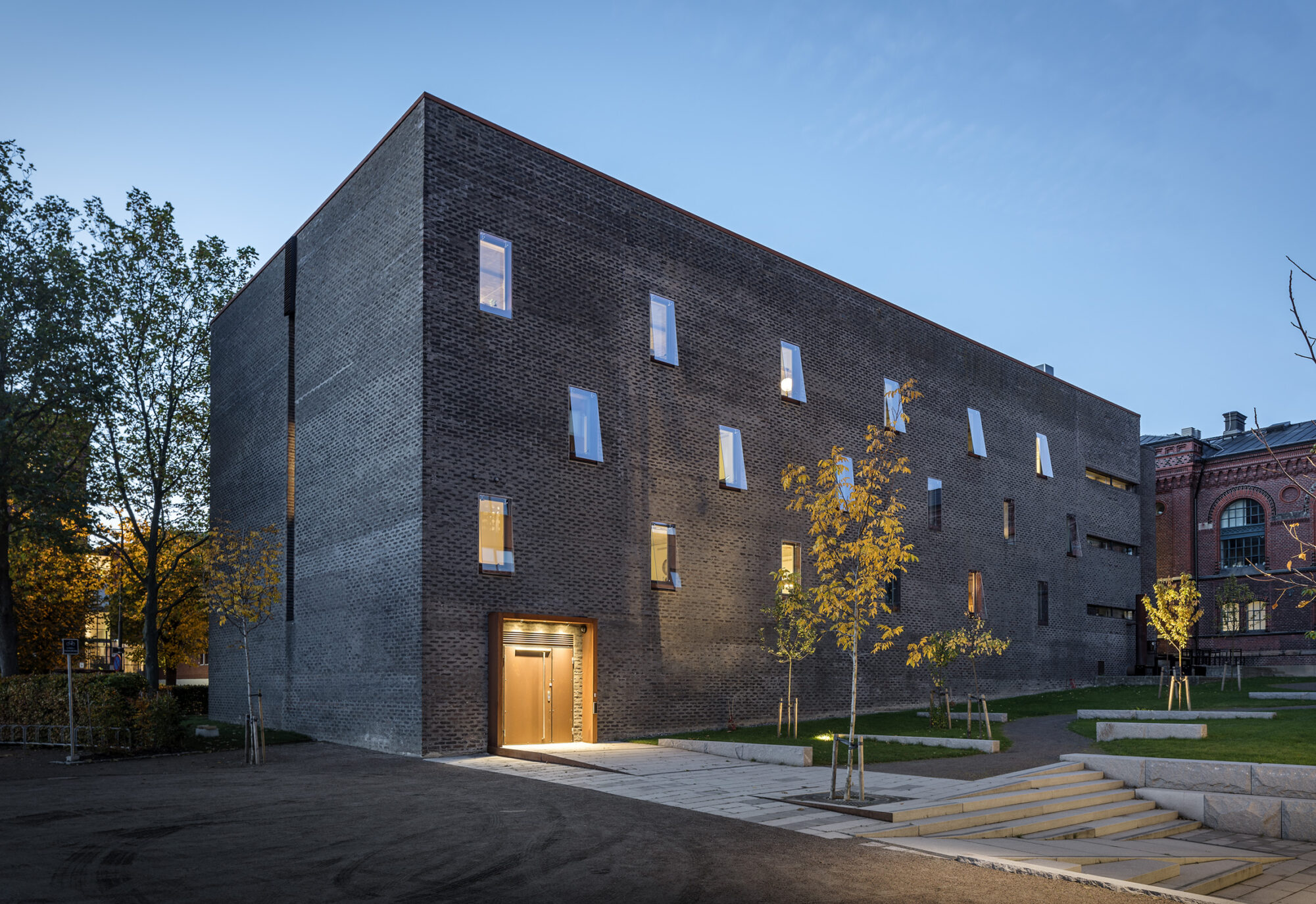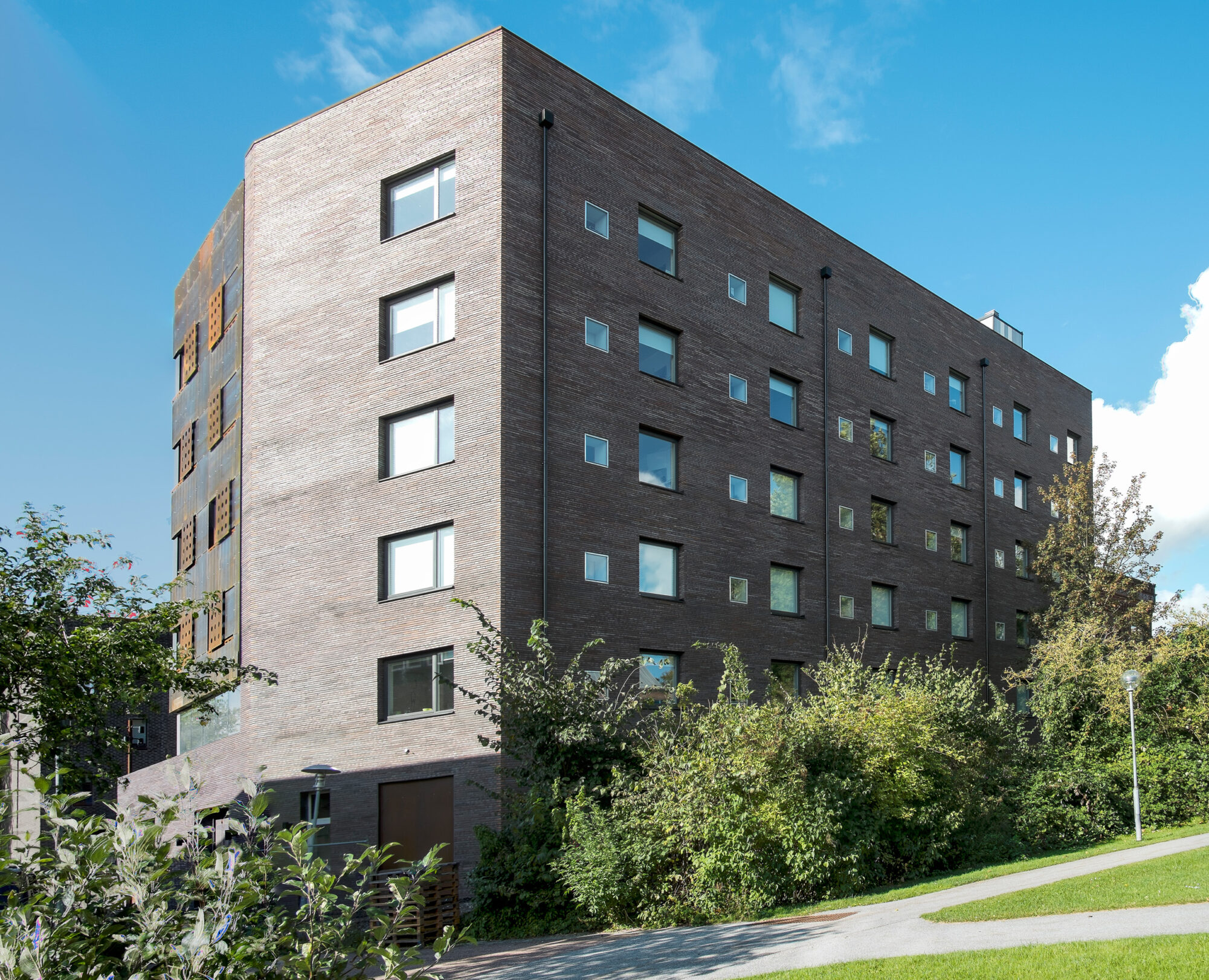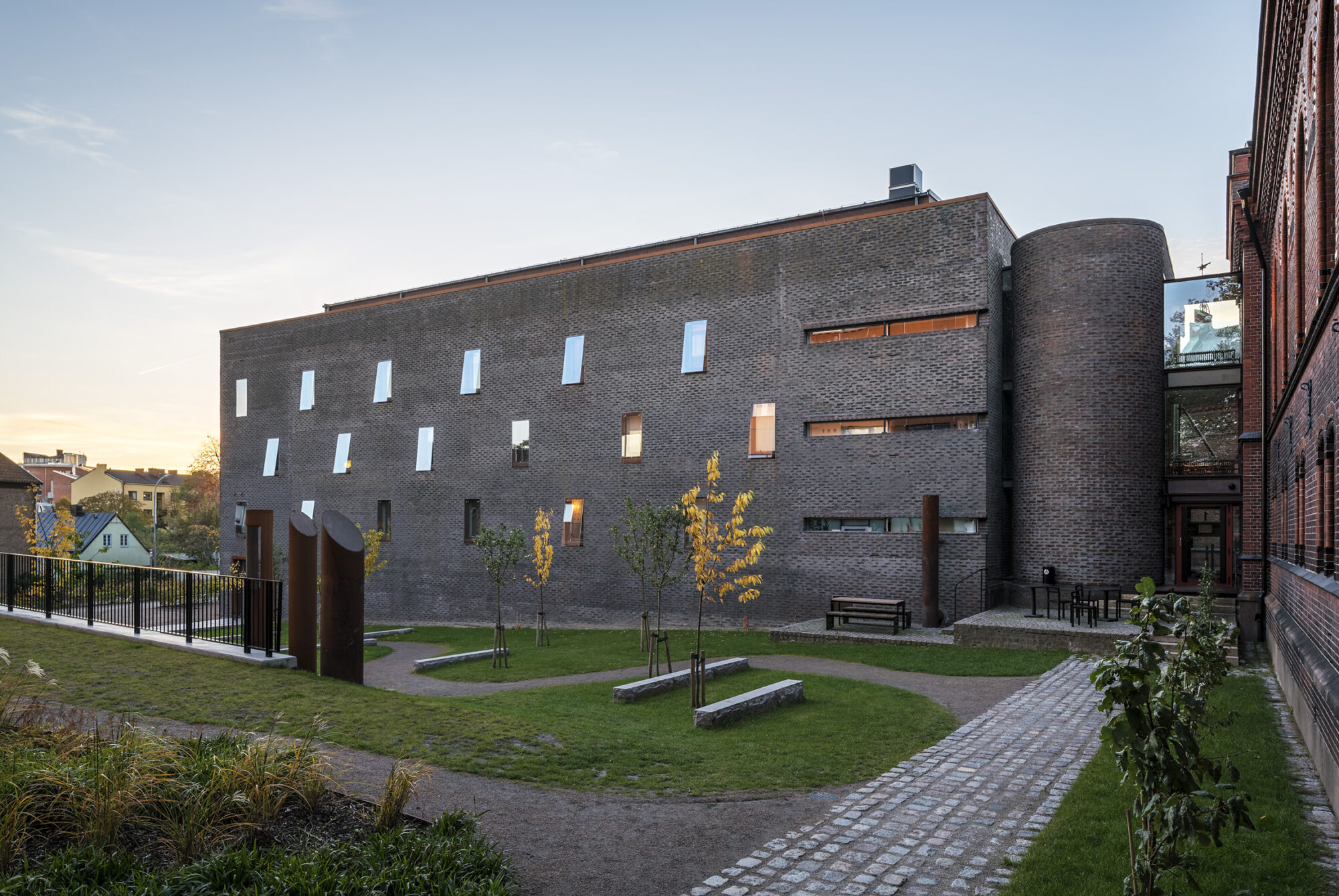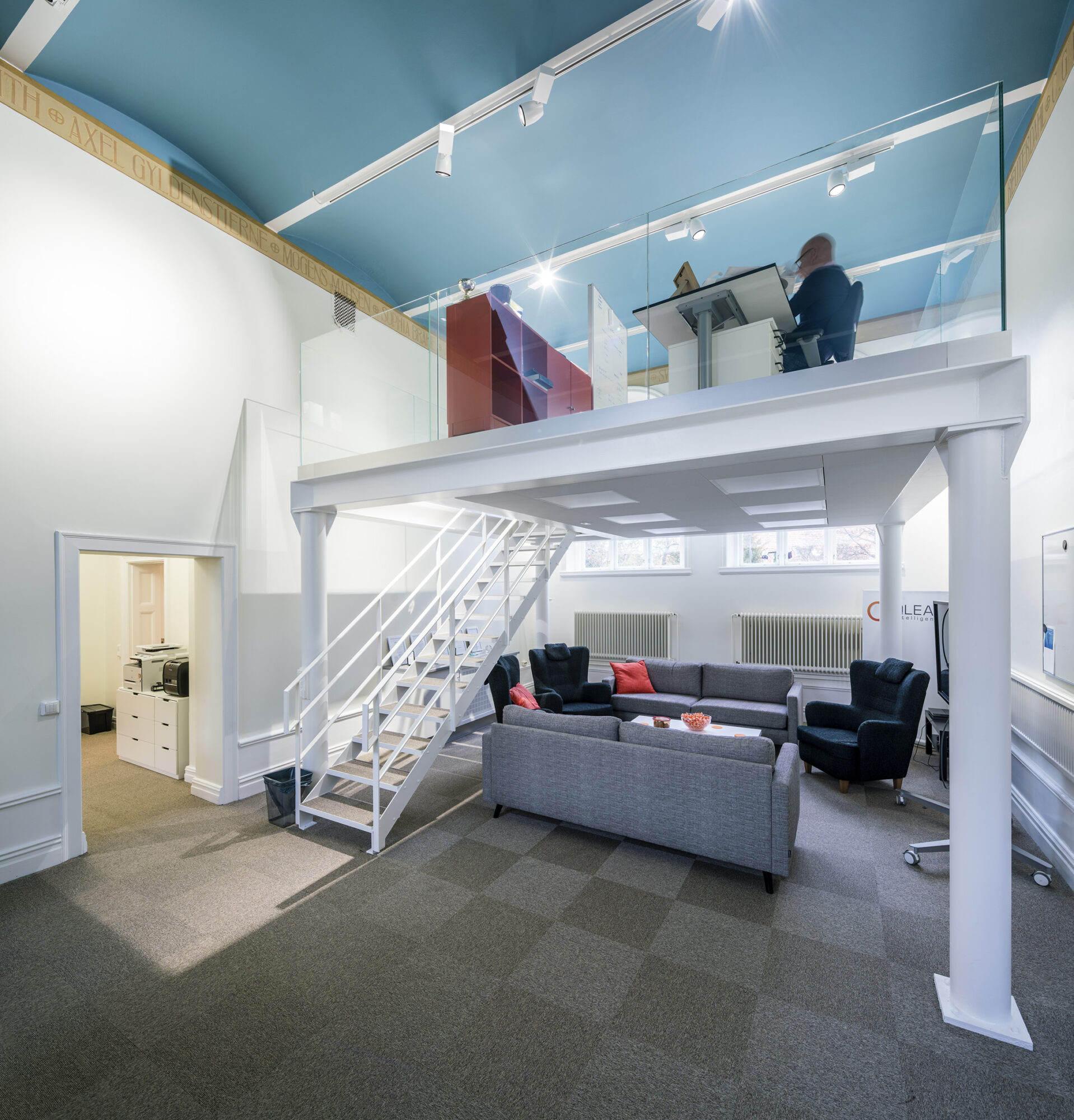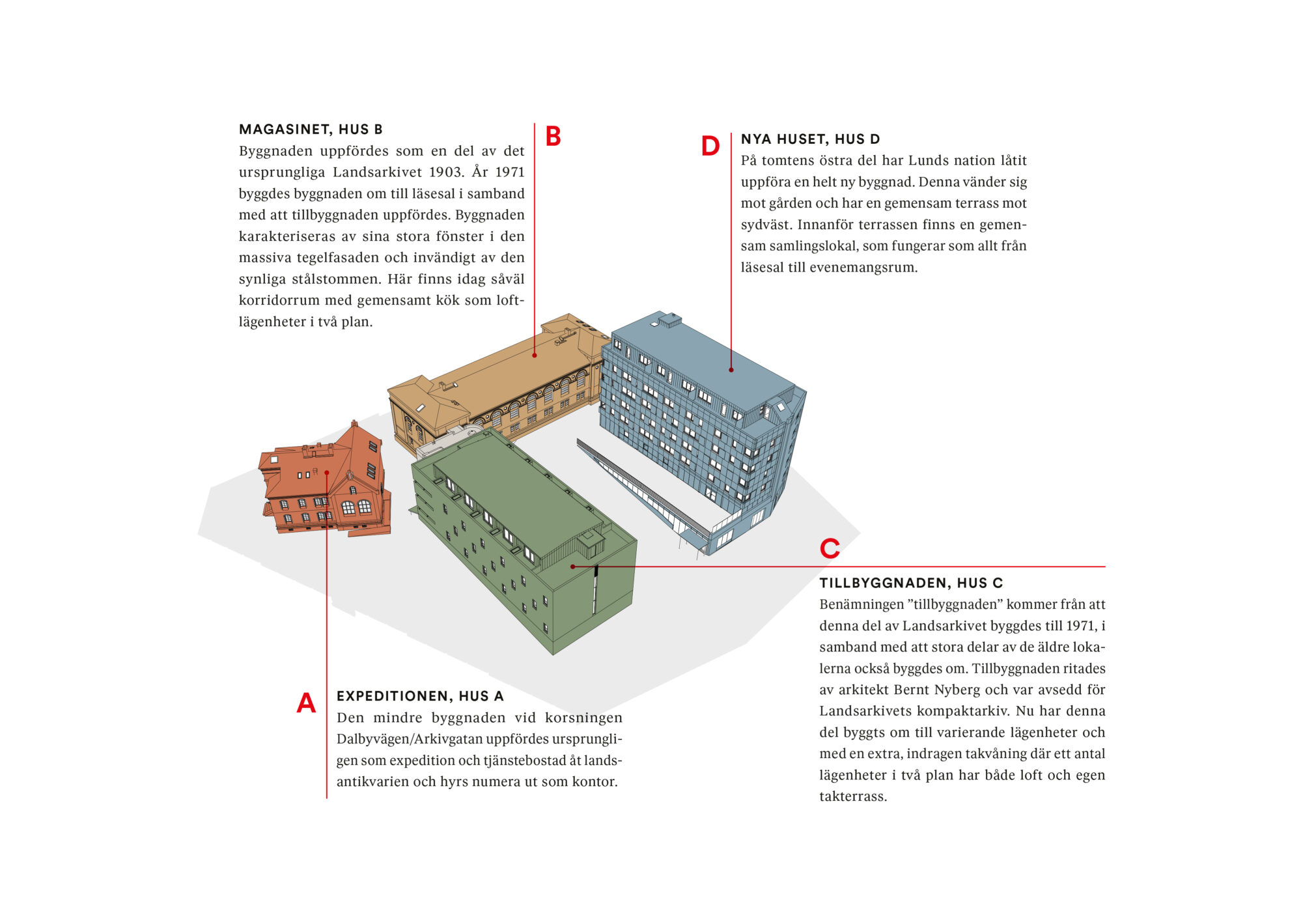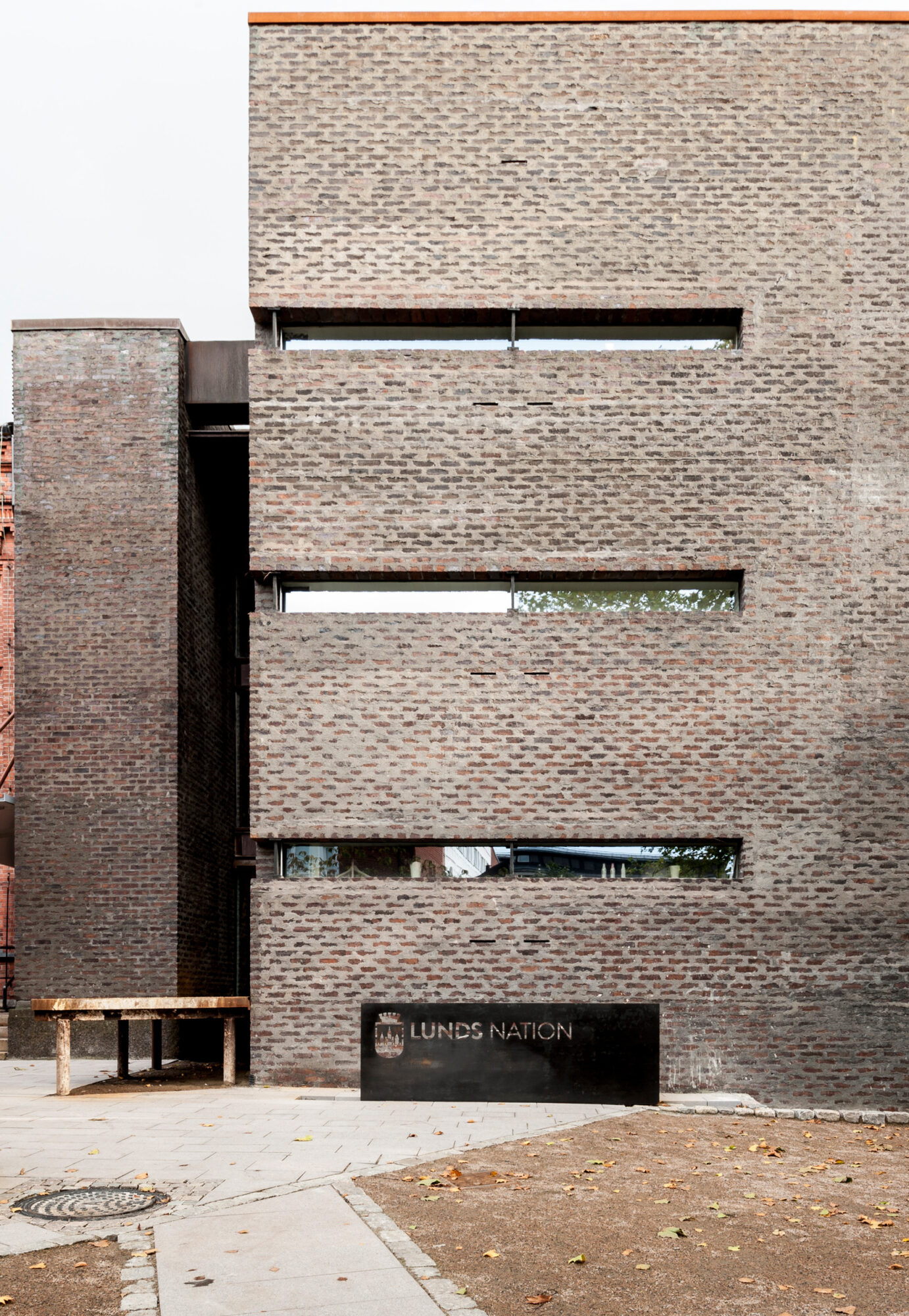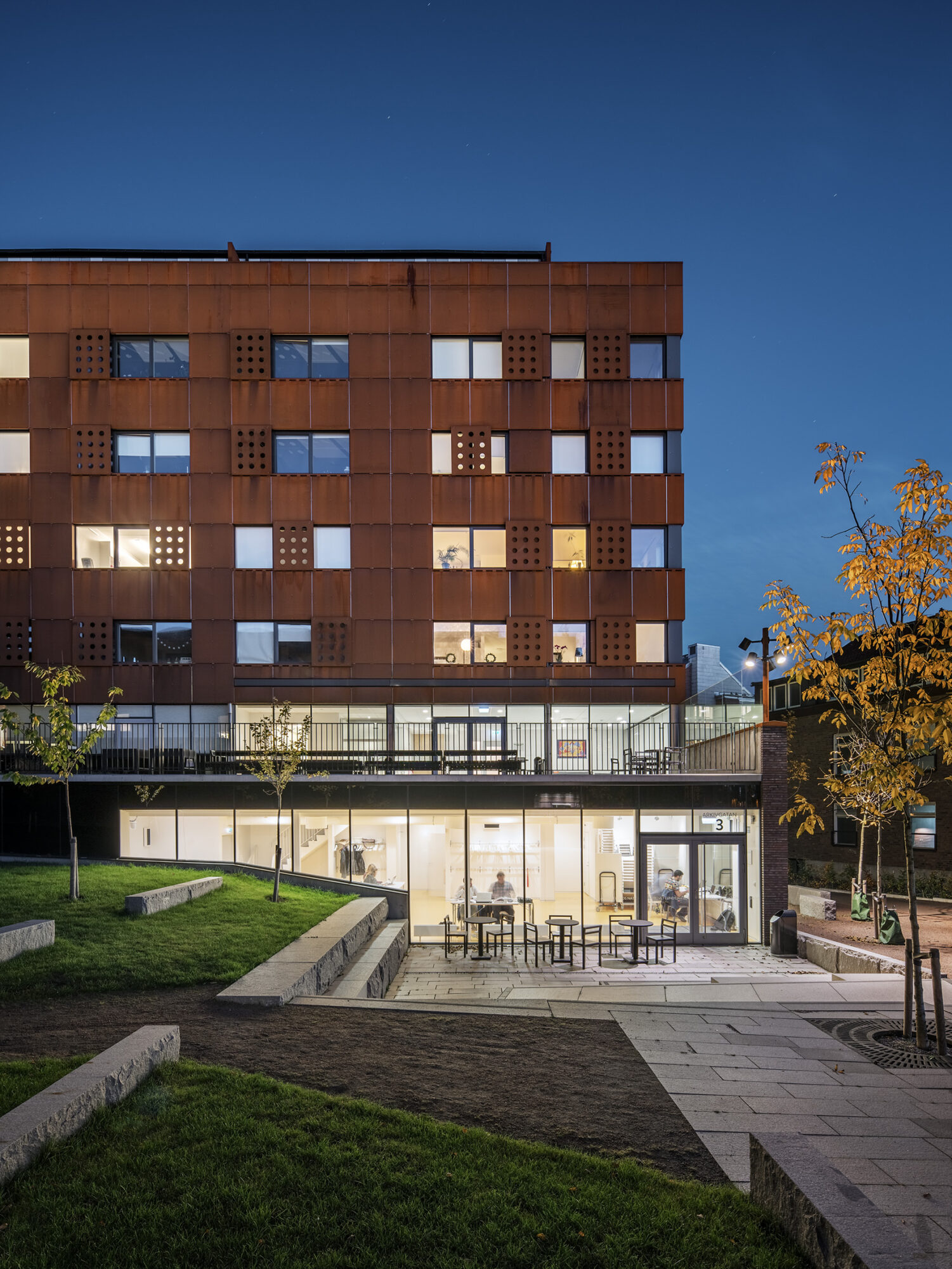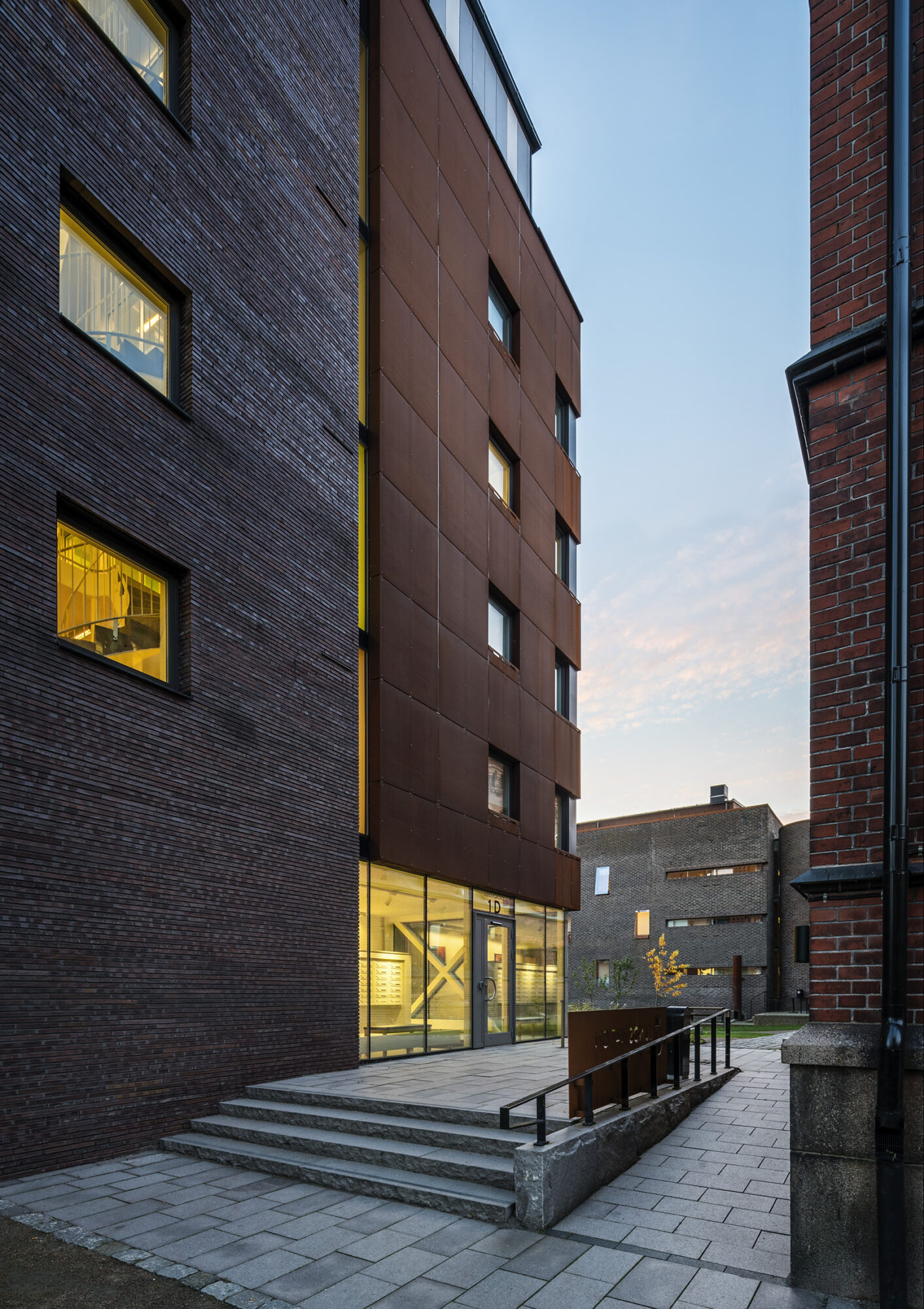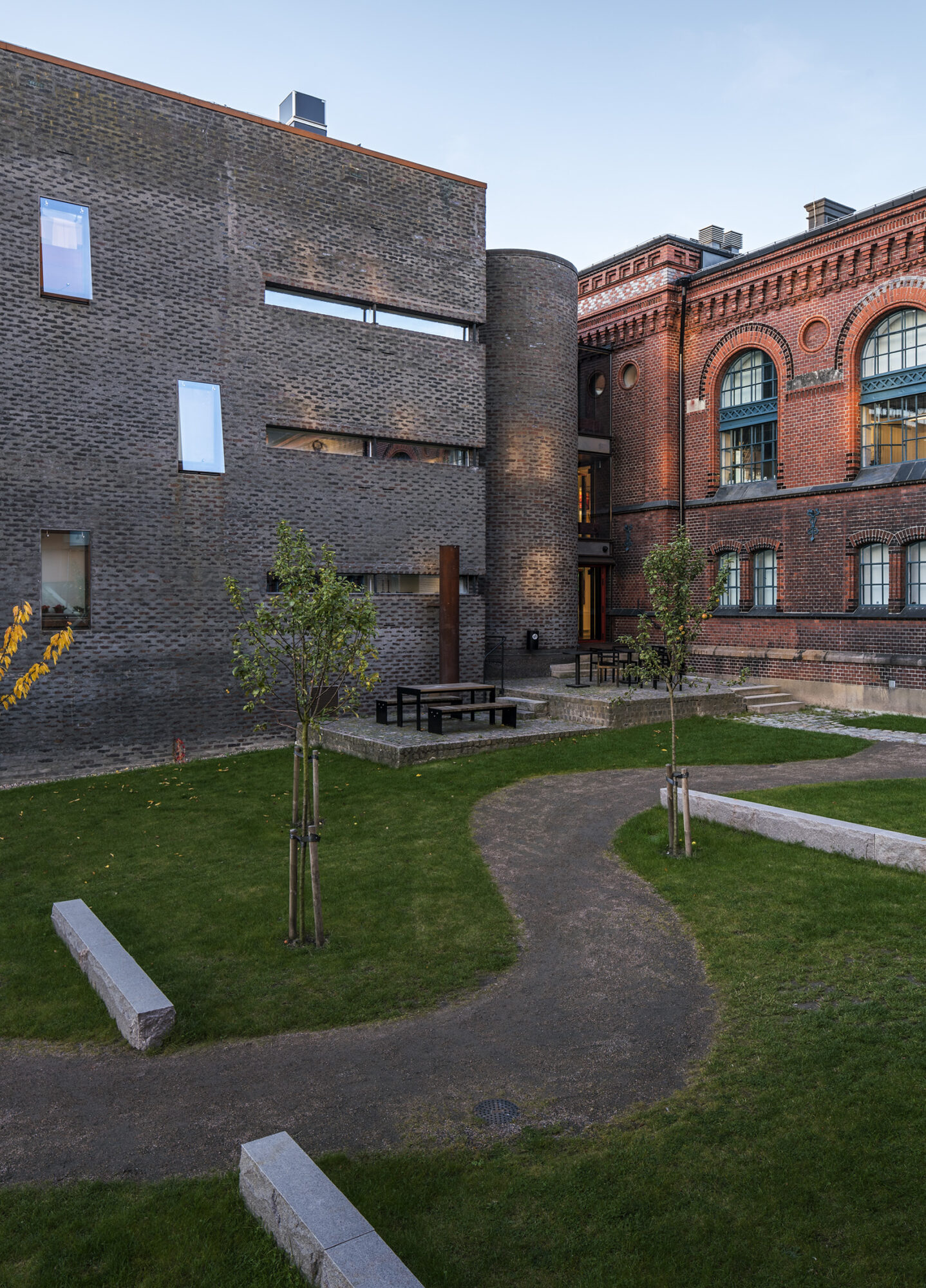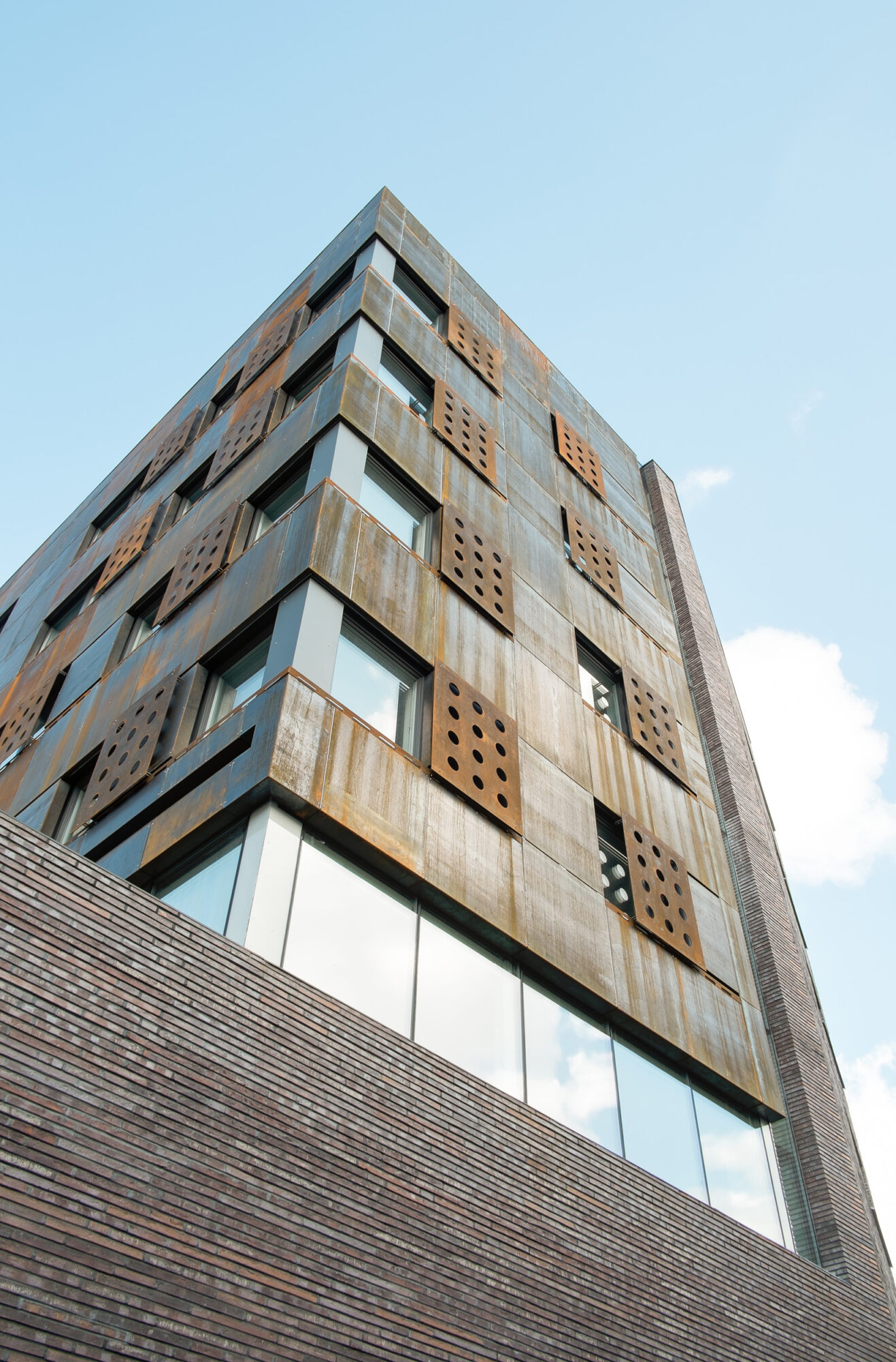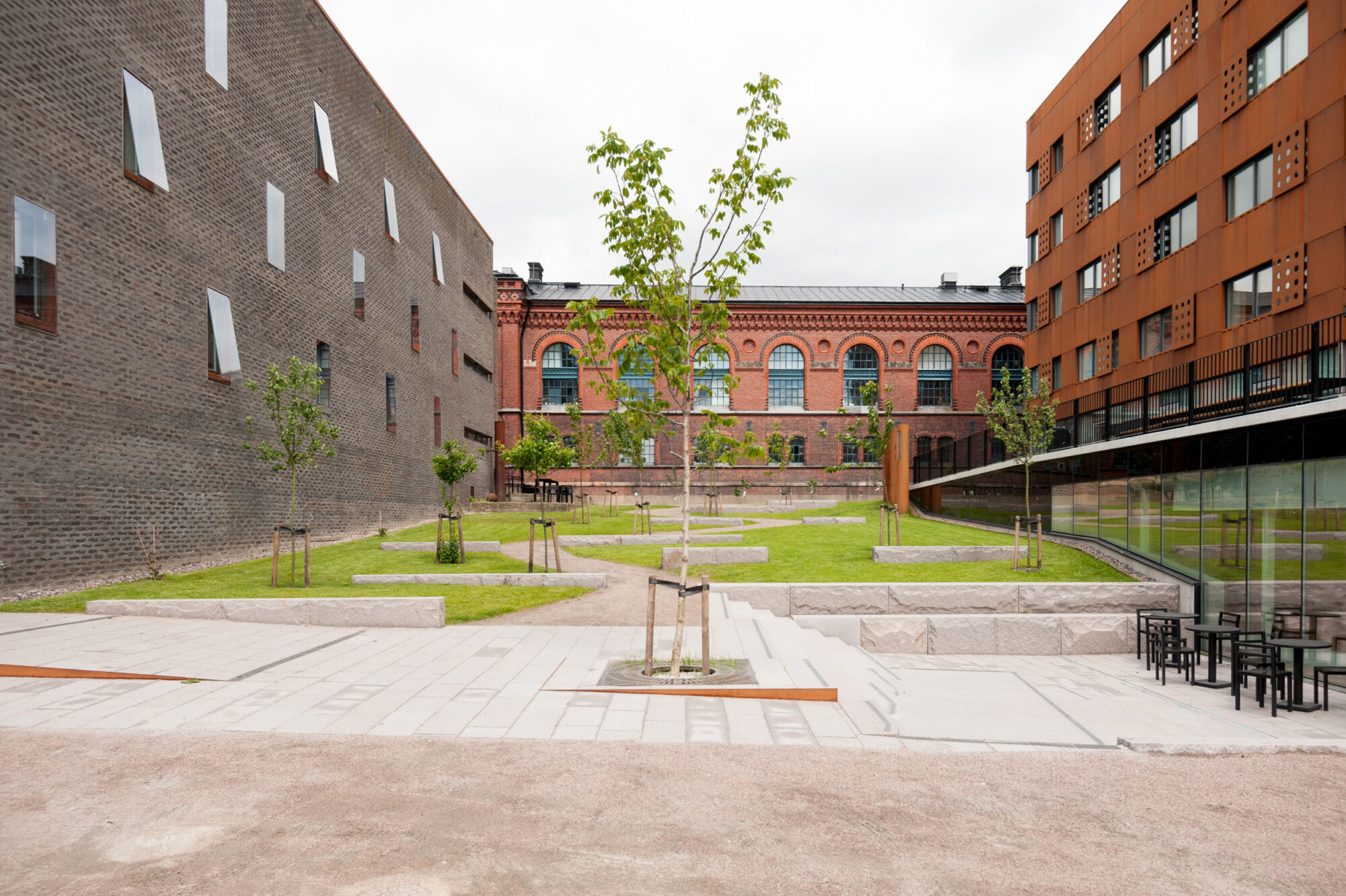Trikåfabriken
In a former knitwear factory from 1901 at Möllevången in Malmö, we have, together with Stena fastigheter, developed and converted the entire property into new office space. The renovation has been done with a careful hand to recreate as much of the building's original character as possible. Reuse has been central both in terms of the building, the outdoor environment and the interior design.
Luminaires, windows, wooden floors and plaster walls have been renovated and restored. The reuse of space has been encouraged, for example, masonry walls and sections have been recovered and used to rebuild new interior walls. Waste materials have been turned into outdoor furniture and bicycle racks, and details such as rosette valves have become character-enhancing features of the whole.
It was important to maintain the sense of space of the old factory premises. All electricity has been concealed and installations in the ceiling have been minimized. There are no large, winding ventilation systems here; ventilation has been kept down as far as possible. Both to give the rooms a cleaner look with high ceilings and to save energy. Flexibility has been a key concept for the building to have a long life, but also to be able to easily adapt it for different activities today and in the future.
The exterior of the knitwear factory has been restored to its original appearance. 1960s windows in poor condition have been replaced with newly manufactured ones, identical to the original windows but with a discreet intermediate sunscreen. The building has been updated to meet modern regulatory requirements for accessibility and fire, which has been solved with as few new additions as possible.
In one of the larger premises, we have designed and furnished our own office. The layout is adapted to our way of working with fewer desks, the possibility of grouping in different ways, several different types of meeting rooms and large social areas. The entrance room is the heart of the office, which with its large space on three levels opens up for joint activities, meetings, work, lunch rooms, seminars and parties!
The materials are few and recurring, with the existing board floor being an important element to give a feeling and character to the space. Other materials such as steel partitions, birch plywood, wooden ceilings, stone, carpets and textiles are chosen to be long-lasting and age beautifully. A new luminaire has been developed in collaboration with Ateljé Lyktan; an energy-saving version of the industrial lamps that once illuminated the factory.
The common courtyard is designed to allow everyone working in the different buildings to meet easily and spontaneously. There are areas suitable for various activities or just hanging out, including a shared roof terrace, table tennis tables and car-free areas for movement, play and creative workshops.
Trikåfabriken is one of Sweden's first redevelopment projects to be climate calculated. To ensure long-term sustainable environmental and climate benefits, the building has been certified according to the standard Miljöbyggnad in Operation level Gold.
Kristianstad residence
Residential set in Kristianstad has been renovated and adapted for new functions and tenants. The facades of the main buildings have been restored, the main entrance has been relocated and most recently the courtyard has been redesigned based on Renaissance ideals.
The Kristianstad residence was designed by architect Fredrik Wilhelm Scholander and built in 1857-1860 as a residence for the governor and with premises for the county administration. The residence was then expanded with, among other things, several floors. Since 1935 it has been a listed building.
Mattias Hedberg Ek at FOJAB was appointed in 2016 by the Swedish National Property Board as house architect for Kristianstad Residence. As house architect and general consultant, Mattias is responsible for the maintenance and development of the building. The work on the residence involves the gradual renovation of the building - which constitutes an entire block in the city - in order to gradually fill the building with tenants.
The focus is on preserving and utilizing the building's fantastic qualities, enhancing the property while meeting the requirements of a modern office building in terms of, for example, ventilation and acoustics. In recent years, the representation floor has been converted into office space, the facades of the main building have been plastered, the main entrance has been discreetly adapted for accessibility and historical lighting fixtures have been restored.
FOJAB was also commissioned to develop a new design for the Residence's courtyard. The previous design probably originated in the early 1960s, and changes and additions have been made since then. The building has served as inspiration for the new design, along with the needs of the courtyard today. The concept is based on the Renaissance ideal where building and garden interact and takes into account the symmetrical design and materials of the building. The courtyard will serve as a lovely break area for the residence's tenants and also houses bicycle parking and a new Renaissance-style green house.
A large central meeting place is bordered on two sides by symmetrical granite walls, perennial plantings and reflecting ponds. The meeting place is highlighted with a different ground material and a centrally placed care tree. Otherwise, the ground materials consist of reused paving stones from the site and a path with granite slabs to accessible entrances.
The staircase and ramp are adapted to create a more generous main entrance and to follow the new design language of the courtyard. Existing stone walls around the former staircase are preserved and create a frame around the new paved area in front of the entrance. Plantings from the 1937 relationship drawing are recreated along the facades.
The materials of the courtyard interact with the facade materials of the building. Walls, blocks and slabs are made of granite like the building's base. The light oak ribs of the benches speak to the light color of the facade and the bike racks, metal edge supports, handrails, fences and furniture details are painted in black-brown to tie in with the window color of the building facade.
Award:
Facade of the Year 2020
Bäckaskog Castle
To care for and preserve our cultural heritage, the National Property Board appoints house and palace architects. They are dedicated to the task for a longer period of time, which ensures a long-term approach and continuity. Castle architect Mattias Hedberg Ek at FOJAB has carried out several maintenance and renovation works at Bäckaskog Castle and Manor. The works are mainly linked to the hotel operations.
Bäckaskog Castle has a long and colorful history with preserved visible parts from the 13th century and was originally built as a monastery. During the 16th and 17th centuries, the castle was a Danish nobleman's estate and during the 18th century it served as a colonel's residence. In the mid-19th century, King Charles XV began using the castle and further extensive renovation and rebuilding took place, which has essentially given the castle its current appearance. One of the castle's main values described in the care program is "that clear imprints from the different eras of the facility make Bäckaskog Castle as a facility have great and cultural-historical values".
Several maintenance and renovation works have been carried out at Bäckaskog Castle, mainly linked to hotel operations. Surface and wet room renovation has been carried out in the hotel floor of the castle's main building. Hotel rooms and corridors have been fitted with mirror panels and period wallpaper with the intention of reinforcing and clarifying the castle character. The Rose Cottage, located in the castle park, has been completely renovated. The conference rooms in the building have been given new, more contemporary finishes.
A rejuvenation plan for the trees in the park has been made and the first trees have now been planted.
Grand Hotel
FOJAB has been responsible for the design of the Grand Hotel in Lund's new verandas. In close cooperation with Grand's owners, two new glass verandas have now been built, as well as an outdoor terrace and a back pocket adjacent to Bantorget. The new verandas have been given their own character from the building and become a natural part of the adjacent square.
Grand Hotel is one of Lund's oldest and most classic hotels and also has a restaurant. The hotel was designed by the city architect in Helsingborg, Alfred Hellerström, and was built in 1896-98. The building and verandas have undergone several renovations over the years.
The assignment involved the addition of glass verandas, a back pocket and an outdoor dining area adjacent to Bantorget. The ambition has been to give the verandas a modern expression and functionality, while at the same time linking to the hotel's history and meeting the high requirements for antiquarian preservation. To support the careful handling of the building, FOJAB has collaborated with an antiquarian expert.
The verandas have high opening glass sections that create good contact with the patio and the square. In the western veranda, outside the Piraten foyer, there is room for a small stage. Large differences in level in the ground have made it possible to use the area for a back pocket under the western veranda. Drinks are served from the back pocket to the outdoor terrace. There are seats at wall-mounted benches with tables, below the two verandas, and on an outdoor seating area facing Lilla Fiskaregatan.
The verandas are built with sustainable and character-building materials that age beautifully. The granite base interacts with the copper plate of the windows and the sandstone facade of the building. The adjacent Bantorget has simultaneously been rebuilt to be an inviting entrance to the city and contribute to a vibrant city center.
Awards:
Lund Municipality's Urban Design Award 2019
Town Hall Skåne
In 2010, Kristianstad Municipality and Region Skåne decided to co-locate their central administrations in the Kristian IV block. In the same year, FOJAB was commissioned by Kristianstad Municipality to be responsible for program work and architectural design of buildings, landscape and interiors.
The ambition was to preserve the exterior of the block as much as possible, combined with a radical redesign of its interior. The proposal preserved the scale and appearance of the block in relation to the surrounding streets, while changing the shape of the interior. The program requirements included modern and efficient office space for 700 people, a large number of meeting rooms and boardrooms, a new session hall for 300 people, foyers and a staff canteen for almost 300 people.
Sustainable natural materials such as stone, wood and copper were used to create character throughout the block, both externally and internally. The facades and internal columns are clad in travertine. Light ash is a common wood species on walls, floors and almost all of the furnishings.
In addition to the organization and design of the interiors, the interior design assignment included an extensive user process involving representatives from all departments and administrations. The modern open office should allow for good accessibility, openness and flexibility. At the same time, requirements for privacy for undisturbed work must be taken into account.
The house has been environmentally certified according to Miljöbyggnad with the rating Silver.
Award:
Building of the Year 2015.
Lund Nation National Archives
As general consultant, FOJAB has been responsible for the construction of new student housing in the Arkivet neighborhood in Lund. The project involved a careful rebuilding of the cultural-historical environment while adding another new building to the old ones.
FOJAB was responsible for the entire assignment as a general consultant and overall advisor, with the scope ranging from working on the amendment of the existing local plan to design, construction management and handover of the completed building.
The design work required considerable expertise in both historical and modern construction techniques. The oldest buildings date from 1903, with an extension in 1971, which has been converted into student accommodation. In order to cope with the heavy wear and tear from students, the choice of robust materials and low-maintenance solutions is also very important.
FOJAB also designed the outdoor areas around the student accommodation, in harmony with the existing environment. The areas facing the surrounding streets have been preserved as far as possible, while the inner orchard has been redesigned, inspired by its previous appearance.
The principle for the archive's garden has been to change as little as possible towards Dalbyvägen and Arkivgatan. Existing trees and cast iron fences have been preserved and supplemented with clipped beech hedges where there was a need to hide bicycle parking. At the same time, as much as possible of the character of the courtyard and its lush orchard has been preserved.
The courtyard plays an important role in bringing together student activities in the four buildings. The former patio in the north-west corner has been preserved and a new raised terrace has been created in the south, connecting to the two-storey community room in building D. A winding path has been created across the courtyard, allowing movement in the green space.
Nomination:
Region Skåne Architecture Prize 2015
